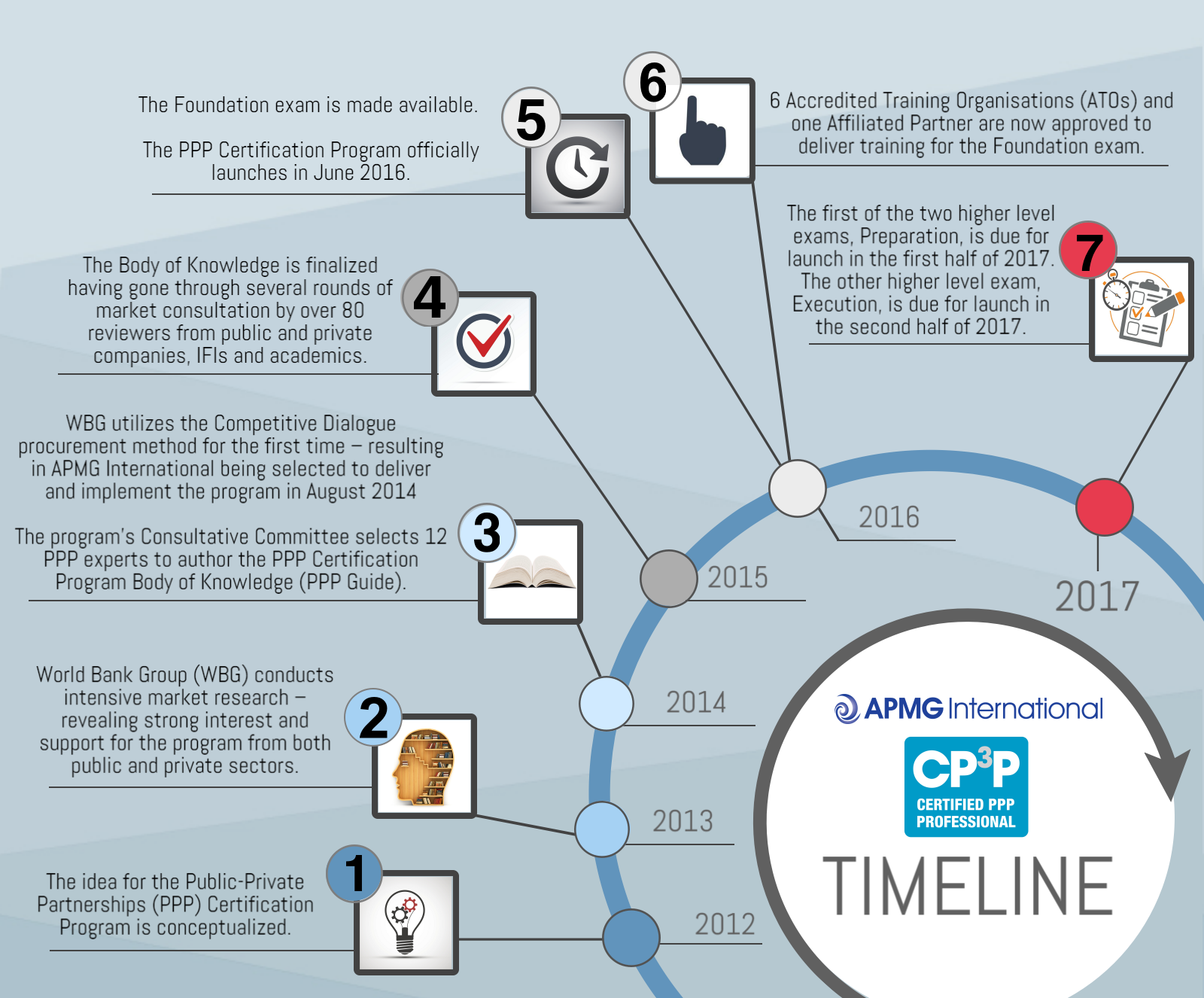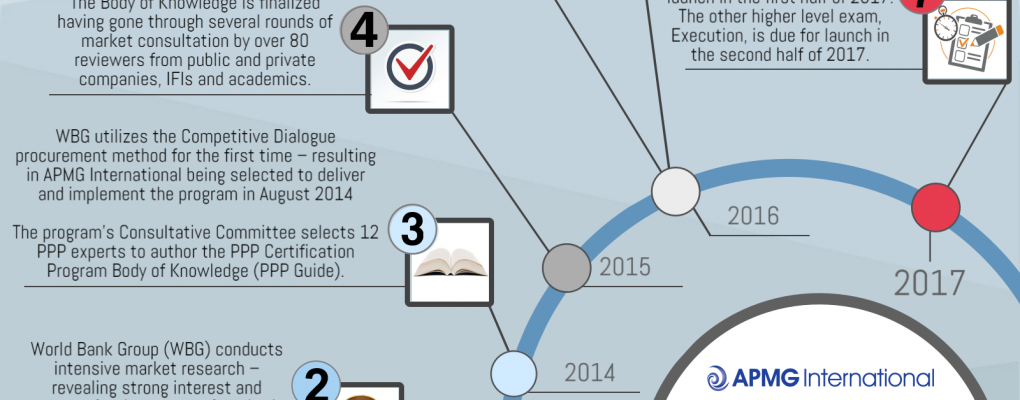all
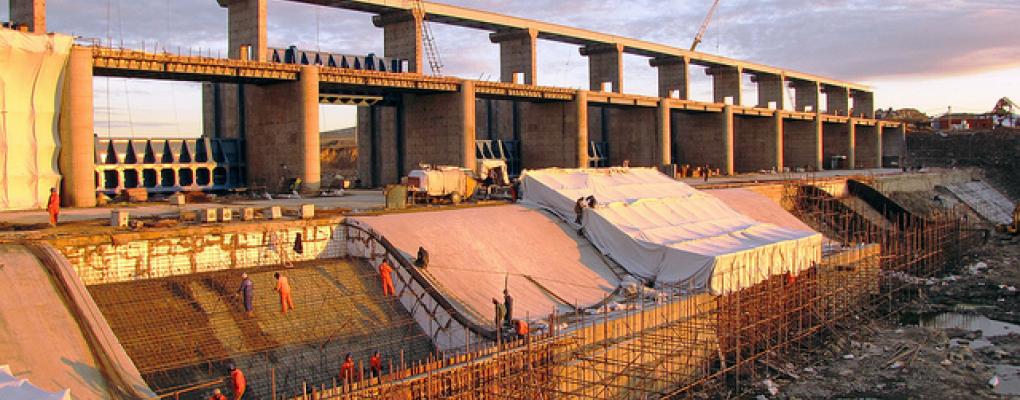
This article was first featured on the World Bank Group's Public-Private Partnerships Blog.
“What is different now?” This question echoed through my head during my recent morning runs along the beautiful Ishim River in Astana, Kazakhstan.
I was in Astana on mission to launch the new technical assistance program for Kazakhstan’s PPP policy reform, which addresses bottlenecks that constrain project structuring. This reform is especially important if the country’s Almaty Ring Road PPP is to be effective. Almaty Ring Road has been a thought-provoking transaction because previous attempts to solidify the partnership have not panned out, and grasping the history is important to resolving this successfully. Moazzam Mekam, IFC’s Regional Manager for Central Asia, and I spent many hours brainstorming on scenarios that would allow us to bring all of the stakeholders into agreement. Most of the time, it felt like we were trying to pull a rabbit out of a hat.
The Almaty Ring Road is Kazakhstan’s only PPP in preparation right now, and it’s in the spotlight during its prequalification stage. The advisory services are provided by IFC; three years of project preparation have been devoted to ensuring that this is the right project to take to market as a PPP. As the World Bank Group continues to support Kazakhstan on bringing private sector participation into the delivery of public infrastructure services, the reality is that since the 2006 Concession Law, not one PPP project has transpired. Before the Concession Law, there were three PPP projects, but all of them have had issues.
As I resumed one of my sunrise runs in this very flat, picturesque, futuristic city, I recalled a recent conversation with Moazzam. He made the point that even when there is a high level of political support for PPPs in the country, institutional and regulatory frameworks are sometimes not ready for PPPs. Capacity and willingness to undertake PPPs at the line ministry/agency level is limited. In instances like this, or when conditions exist in a similar context, we must ask ourselves how to respond, and how to move forward.
Of course there is neither a panacea, nor a perfect formula to get it right. Every government, sub-national or national, has its own forces at play. Our job is to understand those forces well enough to evaluate the appropriateness of a PPP, and then, if it’s decided that the environment is right for this sort of partnership, to structure an effective PPP.
I’ve learned over time that each PPP is different, and solutions must be tailored to very specific conditions. The waste sector in Brazil can’t use the same PPP that worked for the waste sector in Colombia; a light rail PPP that transformed one city in India would fall apart in another Indian city.
As a starting point, we believe that it make a difference if all IFIs join hands together on the main actions needed to reform Kazakhstan’s PPP agenda. That’s why I am working with Moazzam’s team to provide technical assistance on screening and preparation of projects.
Our emphasis is on convening all the stakeholders in the PPP space – such as the European Bank for Reconstruction and Development, the Asian Development Bank, and the United Nations Economic Commission for Europe – making it possible to reach a common understanding. Then we will be equipped to work with the government to present a unified voice on what needs to be done. Our plan is to identify two to three key ‘deal breakers’ which absolutely have to be addressed in order to move the projects forward. This will send a strong signal to the market that Kazakhstan is open for business.
In Kazakhstan – and around the globe – our challenge is not to do one PPP transaction every four or five years, but to do a portfolio of properly vetted PPP transactions every year. This requires a greater level of understanding and commitment around PPPs than currently exists in many of the countries we serve. As we join forces internally to reach this goal, we envision a different way of helping governments succeed in delivering infrastructure services in the long term, with more rapid progress between the time that advice is offered and when a project comes to fruition.
How can we better incentivize governments to act upon the advice they seek? This is, of course, a challenge we all share. We’re open to hearing your suggestions on how we can collaborate even more effectively, ultimately helping to shift policies that will affect positive change on the ground.
Special thanks to Moazzam Mekan for his contributions to this piece.
SOURCE:
https://blogs.worldbank.org/ppps/helping-governments-act-upon-advice-they-seek

Jyoti is the Program leader of the PPP Certification Program on behalf of the MDBs (ADB, EBRD, IDB, MIF, IsDB, WBG and PPIAF). She sits in the PPP Unit of the World Bank Group and is based in Washington DC.
Jyoti is currently leading the dialogue on PPPs in Kazakhstan and Tajikistan from the World Bank Group and previously in Brazil, Vietnam, Russia, Uruguay, Mozambique, Madagascar, Kenya and Ethiopia. Her work focusses on infrastructure project financing, financial viability assessments and structuring of PPP options.
Her recent achievements have been defining the private capital mobilization/catalyzation among development community; launching the Global PPP Certification program −‘CP3P’; financial recovery planning for Vietnam Electricity and; structuring PPPs in Irrigation toolkit. Jyoti specializes in Infrastructure Finance with an MBA from George Washington University and Mathematics in undergraduate, she has over 10 years of work experience in project finance transactions and PPPs.
See below for some examples of Jyoti's other work:
- A financial recovery plan for Vietnam electricity: with implications for Vietnam's power sector
- How to develop sustainable irrigation projects with private sector participation

It's a momentous occasion for us at APMG – we've recently established a partnership with the World Bank Group (WBG) to create a new certification program for people working with Public-Private Partnerships (PPPs).
WGB’s the world’s largest development bank. Its objective is to reduce poverty in poorer countries. It has created a multi-module PPP Certification Program to address the pressing need for governments to utilize effective PPPs.
Growing populations and aging infrastructure are straining the capacity of many nations to deliver essential public services and grow their economies. Overcoming this infrastructure deficit will require public and private sectors working together, and well-structured public-private partnerships (PPPs) are one solution for helping governments raise the large sums of capital needed to meet infrastructure demands and spur development.
APMG currently delivers professional certifications in all regions of the globe every day of the year. We believe that qualifications give organizations confidence that people can deliver high standards while they are extremely motivating for staff. We are delighted to work with the World Bank Group and the regional development banks in this important initiative.
Up-skilling those responsible for the management of PPP programs will deliver significant benefits to the communities they are designed to help. We hope they will also be a challenge and stimulation for those who take the training courses and put themselves forward for the examinations, starting in 2015.
Over the next year we will be developing the new Body of Knowledge which will support the certification scheme. We are currently inviting authors and contributors.
For more information email partnerships@apmg-international.com

Matt Brewitt
As the Social Media and Online Content Writer within APMG’s Marketing Team – I help produce written copy for the APMG PPP website and the PPP Certification Program digital newsletter. I'm also responsible for creating social media material supporting the program and to raise awareness around PPP good practice.
The need for resilient, sustainable and new infrastructure is on the rise globally. Executives around the world are concerned about the adequacy and existence of infrastructure. Availability of infrastructure is a critical issue for business as it impacts on operating costs and it becomes a major factor in strategic planning and decision making. The long term outlook for the businesses does not look bright as 77% of the surveyed participants by the Economics Intelligence Unit on behalf of KPMG International[1] are concerned that current plans and investments in infrastructure are not sufficient to support long-term growth of business.
Poor or inadequate transportation facilities, poor energy infrastructure driving the energy costs and delivery of poor social services due to difficulty in operating old and neglected infrastructure places drastic pressure on Public Sector to deliver on all these challenges. In turn, Governments are looking to find new and more effective ways to improve vital infrastructure through private financing and Public Private Partnerships.
Governments’ excitement of providing infrastructure through PPPs is short-lived. During the feasibility study and procurement period of the PPPs the input of effort into the process by Government is admirable, however the same efforts diminish and are not maintained once the ink is dry on the contract.
At the very start of the construction phase the Governments behave as if the entire project has been completed when in fact all that has been set are the rules of the engagement. So what does happen once the contract is signed?
Usually, expensively negotiated contracts are gathering dust at the official’s bottom drawers while the public sector contractual rights are being unused, locking the full value and excellent service due. This phenomenon is greatly supported by the Governments' inability to recognise the contract management importance and associated disciplines that are needed to deliver the successful project during the commissioning and operating phase.
The statistics show that 66% of sampled PFI contract managers devoted half of their time to managing the contract and 42% of the contracts sampled had failed to levy any performance deductions in the past (Ipsos MORI survey, 2008)[2]. There are several possible reasons for such low findings. These can be categorised as contract management being undermined by the owners of the project thereby under-resourcing contract management function, contract managers not having the right skills and therefore often unaware of their rights under the contract, the attitude of “know it all” by contract managers when it comes to service management jeopardises the contract and project by ignoring the valid details of the contract when unlocking the value, and disillusionment of the contract managers that by levying deductions actually serves to worsen performance and trading deductions for other services brings value to the project when in fact it diminishes that very same point.
Therefore, the issue of “excellence in theory” (a great feasibility study) versus “not really project that is delivering” (commissioning and operating phase) can be bridged by simply applying good contract management to PPPs.
APMG International will be launching a PPP certification scheme in partnership with the World Bank Group in early 2016, to improve performance of PPP practitioners across all aspects of PPPs. As one of the major themes emphasised in the scheme, contract management will be one of the topics that will give great insight of how proper implementation of contract management is imperative to the success of the PPPs.
[1] KPMG International (2009), Bridging The Global Infrastructure Gap: Views From The Executive Suite conducted in cooperation with the Economist Intelligence Unit https://www.kpmg.com/dutchcaribbean/en/Documents/Publications/Bridgingth...
[2] Ipsos MORI 2009, Investigations the performance of operational PFI contracts: A research study conducted for Partnerships UK on behalf of HM Treasury

Irina Unkovski
Irina is a qualified Quantity Surveyor and holds a Master’s Degree in Building specializing in various Infrastructure Procurement Methods. She has more than 15 years of experience working with both Public and Private sector on various Infrastructure initiatives. Currently, Irina is with Deloitte South Africa, leading Corporate Finance Infrastructure Capital Project Team.
Irina has completed various consulting assignments mostly at National and Provincial Government levels specifically development of infrastructure on PPPs within transport, healthcare and commercial buildings. As a result she is familiar with various vehicles, which could be used in alternative service delivery, be it by National, Provincial or Local Government.
Currently, Irina is developing a methodology for Project Management of existing and operating PPPs which will assist government officials in successful delivery, as well as provide a tool for managing the PPP inception for both Transaction Advisors and government officials. She has been involved in projects of monitoring nature such as Gautrain, as well as assisting clients in the public sector with monitoring and assurance of the adjudication of tenders over R 30bn in value.
Infrastructure has finally made it to the top of political agenda following many years of neglect and decades of improper planning. Many business leaders are of the opinion that inadequate infrastructure will negatively impact their companies’ long-term growth and the decision of where to do business will be influenced by surrounding and available infrastructure. Government frontrunners are saying that developing countries need new infrastructure, while developed countries need rebuilt infrastructure and almost every country is struggling to finance its infrastructure needs. The common thread of both public and private sector is the need for new infrastructure bridging it with private finance and investment and attracting the same through sensible pricing and better regulatory policies.
The question is how the optimal mix of public and private sector involvement for any given project be determined so that limited public money can create maximum public value. The answer is through Public Private Partnerships.
In order for Public Private Partnerships to prove beneficial to the Government and to the public, they need to answer these following questions:
- Is the project affordable?
- Is the theoretical value for money demonstrated? And;
- Has appropriate transfer of risk between public and private sector achieved?
This can be achieved if the project is executed as it is originally envisaged and if proper contract management and administration is applied throughout lifespan of the project.
The effectiveness of a PPP cannot be guaranteed at financial close. Therefore, contract management is critical to securing value for money by implementing key elements during the construction and operational stage of the PPP in order for the risks to be managed and realised as was envisaged when the project was formulated during the feasibility stage.
APMG International will be launching a PPP certification scheme in partnership with the World Bank Group early 2016, to improve performance of PPP practitioners across all aspects of PPPs. One of the topics that is emphasised in the PPP Certification Guide is contract management. This will give great insight of how proper implementation of contract management is imperative to the success of the PPPs.
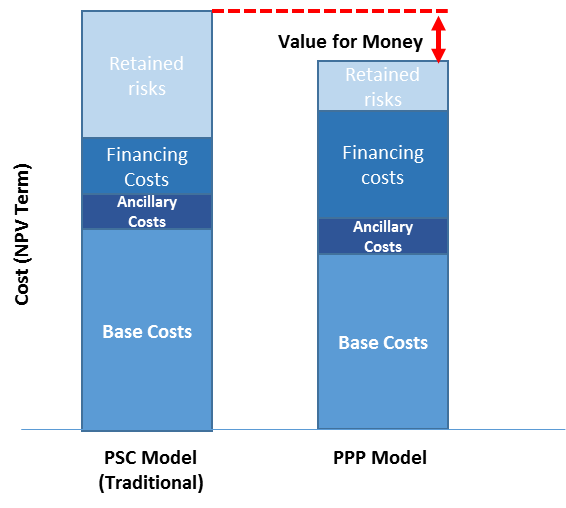
Written by PPP Certification Guide author, Irina Unkovski - Infrastructure and Capital Projects Specialist

Irina Unkovski
Irina is a qualified Quantity Surveyor and holds a Master’s Degree in Building specializing in various Infrastructure Procurement Methods. She has more than 15 years of experience working with both Public and Private sector on various Infrastructure initiatives. Currently, Irina is with Deloitte South Africa, leading Corporate Finance Infrastructure Capital Project Team.
Irina has completed various consulting assignments mostly at National and Provincial Government levels specifically development of infrastructure on PPPs within transport, healthcare and commercial buildings. As a result she is familiar with various vehicles, which could be used in alternative service delivery, be it by National, Provincial or Local Government.
Currently, Irina is developing a methodology for Project Management of existing and operating PPPs which will assist government officials in successful delivery, as well as provide a tool for managing the PPP inception for both Transaction Advisors and government officials. She has been involved in projects of monitoring nature such as Gautrain, as well as assisting clients in the public sector with monitoring and assurance of the adjudication of tenders over R 30bn in value.

Late last year I was teaching a course on infrastructure finance, in a highly regarded University in Brazil and one of the students asked me, without context: “how to bring losers on board of a Public-Private Partnership project?”
It was a good question, particularly because it shed light on a very relevant aspect of PPP projects, one which the professional community discusses less than it should: There can be losers!
For example, entire communities can lose their houses due to the flooding of large areas needed for a new hydropower generating facility or small vendors that can loose demand due to a new turnpike being built a few miles away. In sum, the total costs of large infrastructure projects can be unevenly borne by some groups.
The choice of the PPP procurement route can also interfere on the distribution of costs of projects. By introducing private finance mechanisms, there can be groups that lose long-standing privileges such as rights of charging specific values of users. Also, the Private finance mechanisms often include contractual incentives to optimize managerial costs, which can increase pressure on the productivity of the labour and other resources.
In fact, good practice recommends that the selection of PPP projects should be preceded by a sound cost and benefit analysis that indicate a positive net benefit for the society. However, having a net positive impact only indicates that a project generates benefits that can address its costs and it does not guarantee that there will be no losers.
To turn a PPP project into a win-win game requires, thus, the careful and deliberate development of contractual mechanisms that distribute the benefits of the project in ways that those that bear its costs also appropriate some of the benefits!
So, back to the question of my dedicated student: How do we bring the losers on board? A direct answer is: We can turn them into winners. The rules that allocate the benefits can range from direct payment of compensations to more sophisticated incentives to the private operator such as specific output specifications (that meet some group’s requirements).
The greatest challenge, in my opinion, is not so much to design a compensation but to map the affected groups and to identify correctly their requirements, so the majority of legitimate interests can be accommodated into the PPP deal. This is why community consultation and other participatory techniques are so important! The preparation of PPP projects has to dedicate a serious amount of resources, including a professional and qualified team, to understand the needs of the people affected by the initiative, as a part of the general project appraisal and this assessment should be as central as the financial and legal due diligence[1].
So, in my opinion, the establishment of a sincere dialogue with the broader community is a necessary step to design PPP contracts that can decisively bring would-be losers on board, allocate the project’s benefits fairly, create a win-win situation and attract effective public support for PPP initiatives!
Written by PPP Certification Guide author, Marcos Siqueira Moraes
[1] The PPP Guide, which will be published as a part of the PPIAF sponsored PPP Certification Program (https://ppp.apmg-international.com//home.aspx) has a specific section on Social Impact Assessment and recommends a test of Social Feasibility as a criteria for the approval of PPP initiatives!

Marcos Moraes
Marcos Siqueira is a recognized expert in PPPs in Brazil, with a multidisciplinary background and over ten years of hands-on experience preparing and managing PPP contracts.
Marcos began his career as financial advisor for governments and was later hired by the government of Minas Gerais, in Brazil, to promote a program to attract private investment in infrastructure. This turned out to become the first PPP Unit in the country, responsible for the delivery of one of the most diverse PPP programs in Brazil. While Marcos was its CEO, the PPP program of Minas Gerais and its projects received several national and international awards for their technical excellence.
As an infrastructure professional, Marcos personally managed over US$ 3 billion worth of transactions in sectors such as transport, social infrastructure, energy and environmental assets. Marcos has had a diverse international experience, being involved in capacity building initiatives in Africa, Latin America and Asia. He has been an associate professor of public policy in Fundação João Pinheiro and Fundação Dom Cabral.
Since December 2014, Marcos is a consultant of the Inter-American Development Bank in a large-scale initiative aimed to compare institutional environments for PPP in several countries.
Marcos holds a bachelor degree in law and public administration. He also received a Masters degree in Public Policy from the University of Sheffield, in the UK.

On behalf of APM Group I’d like to share my excitement for the upcoming PPP Certification Program which is scheduled to be available early next year. The certification results from the hard work of several Multilateral Development Banks (MDBs) across the globe - the World Bank Group (WBG), the Asian Development Bank (ADB), European Bank for Reconstruction and Development (EBRD), Inter-American Development (IAD), the Islamic Development Bank (IsDB) and is part funded by the Public Private Infrastructure Advisory Facility (PPIAF).
This certification program will enable people to prove their competency working within a PPP team and help plan their career progression. This collaborative effort is driven by APMG’s and WBG’s shared desire to strengthen PPP best practice worldwide. The creation of the upcoming certification and its accompanying APMG PPP Certification Program Guide is a response to several issues many nations are facing today.
Growing populations and aging infrastructures are inhibiting the ability of many nations to provide essential public services needed to develop their economies - tackling this infrastructure deficit will require the public and private sectors to work together. Sound structured public private partnerships provide an effective solution to this issue – helping governments raise the funds necessary to meet infrastructure demands and stimulate economic development.
Both public and private sectors in emerging markets and developing economies (EMDEs) often lack the ability to formulate, implement and maintain PPPs – causing many projects to fail. Through this certification program and its supporting guide we hope to help develop capability and make the role of PPPs more prominent in enabling delivery of essential services that are key to the UN’s vision of ending extreme poverty.
The certification program will play in important role in capacity building by creating a global standard of knowledge. We aim to craft a common language on PPPs and unify the understanding and expectations between practitioners working on different stages and sides of the PPP process.
APMG has over twenty years’ experience in Programme and Project Management certification programs such as PRINCE2, Agile Project Management and PMDPro - the certification for project managers working in humanitarian and disaster zones.
APMG delivers professional certifications across the globe each day of the year. Our belief is that certifications provide organizations with the confidence that people can deliver high standards while being highly motivating for staff. We’re proud to be working with WBG and the regional development banks in such an important endeavour.
Up-skilling the people responsible for the management of PPP programs will bring considerable benefits to the communities they are designed to assist. We also hope the certification program will be challenging and stimulating for the candidates who take the training courses and progress to taking the exams.
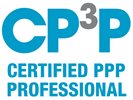
How to be a CP3P APMG Professional?
The APMG PPP Certification Program Guide is scheduled to be published online and free of charge in Q1 2016. This will inform the syllabus for the APMG PPP Certification Program which can be studied remotely at your own leisure or via an APMG Accredited Training Organization. To obtain the CP3P credentials you will need to pass an exam. The Foundation exams are also currently scheduled to be delivered Q1 2016.
PPIAF (The Public-Private Infrastructure Advisory Facility (PPIAF) is a multi-donor technical assistance facility managed, staffed and housed by the World Bank Group in the Public-Private Partnership Cross Cutting Solution Area (PPP CCSA). Established in 1999, PPIAF provides technical assistance grants to developing countries’ governments to create enabling environments for private investment in infrastructure. PPIAF has 15 contributing donors.
Fiscal Year 2015 (July 2014 – June 2015) brought significant changes to PPIAF. A new strategy focused on programmatic support to client countries anchored by strategic knowledge initiatives was approved by donors. As per this strategy PPIAF’s core interventions focus on building institutions’ capacity and increasing national governments’ and sub-national authorities’ creditworthiness, political buy-in and ownership by strengthening the institutional, legal, and regulatory frameworks, managing associated risks, and enhancing transparency and accountability.
In July 2014 PPIAF provided funding to support the PPP Certification Program, which is strongly aligned with PPIAF’s strategy. PPIAF’s clients in developing countries, partners, and donors will benefit from the PPP Certification Program as it would help them to acquire the skills required in implementing PPP programs.
In the past two years PPIAF launched a number of large programmatic initiatives, building on partnerships with other development financing institutions, in the technical assistance field. In West Africa, PPIAF is supporting the West African Economic and Monetary Union (UEMOA), under which umbrella member countries create an institutional architecture to facilitate regional and national PPP projects.
In the Caribbean, we are supporting the creation of a regional PPP framework. In South Asia, PPIAF is helping Bangladesh scale up the national PPP program. The City Creditworthiness Academy created with PPIAF support in 2013 continues to provide training academies to municipalities to invest in green and resilient infrastructure.
Since 1999 PPIAF has provided funding of over $260 million spanning over 135 developing countries across the world, in the energy, water and sanitation, transport, ICT sectors and various knowledge products, toolkits, and publications.
PPIAF Useful Resources
PPP Knowledge Lab
PPIAF Annual Report 2015
PPIAF Strategy fiscal years 2015-2017
Impact Stories
Toolkits
PPP Resources/Library
Follow PPIAF at http://ppiaf.org and via Twitter: @PPIAF_PPP

Amsale Bumbaugh
When it was set up in 1991, the European Bank for Reconstruction and Development (EBRD) was mandated to help former Soviet and former socialist countries open up to market-based economies. The goal is also reflected in our name — reconstruction and development after the damage inflicted by decades of rigid central planning.
Infrastructure is key to that reconstruction and development as well as to a transition towards a better economic future.
At the same time the widening infrastructure gap across the countries where we invest – now 36 including Cyprus, Greece, Turkey and countries of the southern and eastern Mediterranean region – highlights the need for improved project preparation, capacity-building expertise at the local level, and more private sector capital. Public-private partnerships (PPPs) provide opportunities for the private sector to play a constructive and expanded role.
Following the recent call from the G20 to support greater levels of infrastructure investment, the EBRD created an infrastructure project preparation facility (IPPF). The Bank mobilised €40 million, part of this amount in grant financing and part of it from private investors, to increase support for project preparation and delivery of improved infrastructure by both the public and private sectors.
With this newly created instrument, the EBRD plans to reach diverse sectors and countries across our region, with approximately 10 PPPs and some 20 'commercialised' public sector projects to be prepared over the next three years.
At the EBRD we believe that sharing knowledge of how to develop workable project structures is crucial for accelerating PPPs. We welcome the new PPP certification programme initiated by the World Bank Group and supported jointly by a number of MDBs during its implementation. The programme can strengthen the capacities of governments and markets to build credible and financially viable PPPs across emerging market countries.
Written by Thomas Maier, EBRD Managing Director for Infrastructure

Thomas Maier
IsDB is one of the Multi-National Development Banks (MDB) supporting the APMG Public-Private Partnerships Certification Program, as well as a major contributor to the PPP Certification Program Guide. We speak with IsDB's Fida Rana, from its Public Private Partnership Division to discuss its involvement in the APMG PPP Certification Program.
What is IsDB’s history with PPPs?
IsDB has supported PPP projects in its 56 member countries across various sectors such as transport (sea port, toll roads, airports etc), energy (both conventional and renewable), social infrastructure (hospital). Through Islamic modes of financing, the bank has provided funding to many PPP projects along with other conventional commercial banks and MDBs. IsDB has also been active in upstream PPP space, such as assisting governments in the MENA region in PPP project preparation. Recently the bank has started offering PPP capacity development support by organising case based PPP workshops for its member country institutions and governments, in order to enhance their understanding of PPP projects and to disseminate the knowledge of PPP deals.
What excited IsDB to support the APMG PPP Certification Program?
The APMG PPP Certification Program is an excellent initiative by the MDBs to create standard body of knowledge that can become a global reference when it comes to PPP practice. We are glad to see that the body of knowledge includes Islamic finance and its application in PPP. Islamic finance is growing rapidly, experts estimate that it has crossed USD 2 trillion marks in 2014. That’s roughly equal to the size of Canada’s economy. For more than a decade, the Islamic finance industry has been experiencing a double digit growth, starting from a mere USD 200 billion in 2003. As the certification will feature Islamic finance module, the participants will be able to have a grasp on this topic.
How will the PPP Certification benefit PPPs worldwide?
The major beneficiary group of the certification would be those who are involved in PPP project preparation, mainly government officials of line ministries and PPP units. By understanding the PPP project cycle, risk and mitigation features better, the certification will help them to prepare bankable PPP projects.

Fida Rana
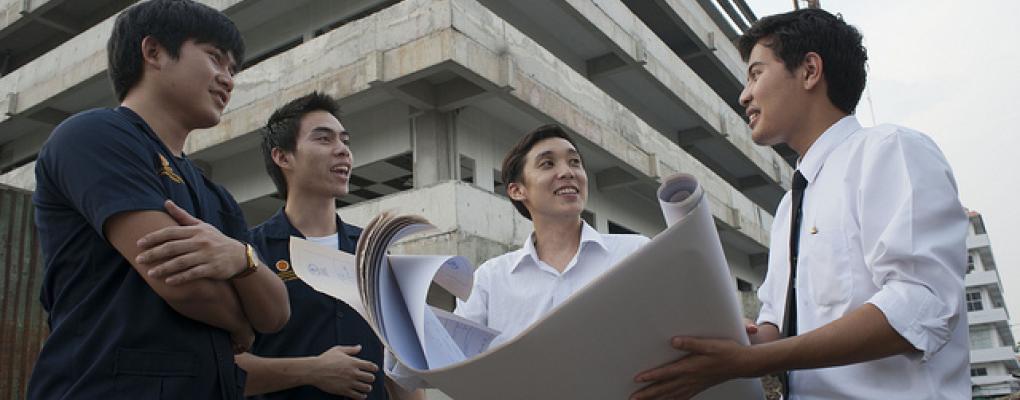
In a PPP project the public sector invites the private sector, via a bidding process, to design, build, finance and operate an asset in order to provide a service to or on behalf of the public sector. In addition, the project must be affordable, provide value for money, and obtain optimal risk transfer between the public and private sectors.
The payment for this service can either come directly from the public sector (government) or from the end users (general public). Examples of government-pays infrastructure could be schools, hospitals and other accommodation projects. Examples of user-pays infrastructure include toll roads, rails and other transportation systems where the payment mechanism demands the user to pay for the service.
PPPs – key benefits and requirements
The benefits of PPPs are numerous, the main one being obtaining Value for Money. This means delivering a project with a superior quality for the same amount of money than the public sector would spend on the same service in a given fiscal year. There are several components of the Value for Money factor which include: risk transfer, output based specifications, long term nature of contracts, performance measurements and incentives, private sector management skills and other various money drivers.[1] For a PPP to be successful the majority, if not all of the components, must be satisfactorily delivered and concluded. Sometimes, if not often, they are not.
Value for Money – the 5 main pitfalls
Let’s look at the components of the Value for Money and see where are the major pitfalls that occur and most importantly, why? As per Van Herpen (2002), the key pitfalls are as follows:
Risk will be transferred to the party which is best able to manage this risk and at the lowest cost. The risk allocation is produced during the feasibility study of the process while assessing the value for money. If this section of the risk assessment is not done properly and sufficiently right at the beginning and prior to the contract signature, the risk transfer can be diluted and retained by the public sector. Another issue can actually creep up due to insufficiently (badly) written contracts that can omit significant scenarios that can either revert the risk to or be retained by public sector. Finally, during the life of the project, certain engagements are initiated by either public or private parties that shouldn’t be – often leading to risk reverting by default to the party that originally was not supposed to bear the risk. For example, if the public sector gets involved in the decision-making specifically around the design of the asset the risks around the design aspect will by default revert back to the public sector.
Output based specifications can provide many benefits such as giving the Private sector the freedom to produce innovative ideas and ways of delivering at reduced cost without compromising the final output and quality. However, problems might arise when the public sector is not quite certain what it wants to achieve and what exactly the outputs should be. These decisions can be quite costly for the public sector as delays and variations might occur therefore not achieving the anticipated Value for Money.
The Long term nature of contracts allows the service provider (Private sector) more time to recover the cost of the investment. It also provides a learning curve for the service provider and in turn increases efficiency. It also makes it easier to transfer the technology risk to the service provider as they will have better judgement when renewal of assets and capital expenditure is incurred. However, long term contracts come with their pitfalls as well. The main one is the reduction in competitive pressure on the service provider to reduce costs and increase quality, which creates a state of complacency. Therefore it is extremely important that the service provider delivery is closely monitored and at the same incentivised in order to keep up the standard as originally envisaged by the project.
Performance measurement and incentives are a great way to achieve the goal of the project and what is stipulated by the contract, and can be beneficial to both parties if properly implemented. The benefits and rewards can be shared making the project a success. However, on many occasions, the importance of performance monitoring and management is overlooked by the public sector. This results in the Value for Money being completely diminished as the private sector will not invest much to provide for corrective measures. Therefore it is imperative that performance measurement is monitored and measured on a regular basis by the Public sector for obtaining Value for Money.
Private sector management skills are also key benefits that PPPs can provide to the Public sector. Traditionally, project management is not something that the public sector used to undertake due to the nature of their business however, in order to produce quality delivery to the general public, management skills are imperative to success of any project. The Public Sector can learn a great deal from the Private Sector with respect to proper project and programme management through long term partnership projects and implement on other various occasions. This however can be also a pitfall as public sector sometimes is not open to spending time learning new methods and even ignoring the roles and responsibilities of what should be done on the PPP project itself jeopardising projects success due to the improper management.
These are just few examples of how potentially benefits can quickly turn into pitfalls while executing PPPs. To learn more on these and many others, please refer to the recently released APMG Public-Private Partnerships Certification Program produced by APM Group.
[1] G.E.W.B Van Herpen, 2002, Public Private Partnerships the Advantages and Disadvantages Examined, Dutch Ministry of Transport, Public Works and Water Management, AVV Transport Research Centre

Irina Unkovski
Irina is a qualified Quantity Surveyor and holds a Master’s Degree in Building specializing in various Infrastructure Procurement Methods. She has more than 15 years of experience working with both Public and Private sector on various Infrastructure initiatives. Currently, Irina is with Deloitte South Africa, leading Corporate Finance Infrastructure Capital Project Team.
Irina has completed various consulting assignments mostly at National and Provincial Government levels specifically development of infrastructure on PPPs within transport, healthcare and commercial buildings. As a result she is familiar with various vehicles, which could be used in alternative service delivery, be it by National, Provincial or Local Government.
Currently, Irina is developing a methodology for Project Management of existing and operating PPPs which will assist government officials in successful delivery, as well as provide a tool for managing the PPP inception for both Transaction Advisors and government officials. She has been involved in projects of monitoring nature such as Gautrain, as well as assisting clients in the public sector with monitoring and assurance of the adjudication of tenders over R 30bn in value.

At conferences, in meetings, and even during casual work conversations, I am asked the same two questions: “Which countries are ideal for investments in infrastructure? Where should the investors invest and what new opportunities should they look toward?”
While sitting in the World Bank gives us a bird’s-eye view of emerging markets and developing economies (EMDEs), it doesn’t offer the up-close-and-personal perspective that investors demand in order to answer these questions in a succinct way. Not that there’s any shortage of synoptic responses. Any number of “market gurus” can assess projects in a second, gathering all the low hanging fruits which are out there in EMDEs. If there is a private deal to be made, then the deal is already done.
Assessing investment possibilities becomes complicated where there is a third party involved. I live and breathe this challenge because I work in the world of public-private partnerships (PPPs) – developing infrastructure finance – where the deal is tough to come by. In the PPP universe, the government is not only the grantor but also the procurer of goods and services, policy maker, regulator, supplier, and buyer or off -taker of the outputs. And this is a universe where the 10,000-foot view of infrastructure in emerging markets is a useful perspective from which to examine the global infrastructure investment landscape.
Getting the lay of the land
Before looking at the global infrastructure investment landscape, it is important to know which regions have the greatest needs. A recent World Bank study[1] shows South Asia ranking at the top (see the graph below) in terms of both annual infrastructure investment requirement as percentage of GDP (15%) and absolute terms of investment amount ($300 billion). What does this number mean? In order to keep up with the regional predicted GDP growth rate of 6%, the South Asia region countries need to invest nearly 15% of their GDP in new infrastructure and to maintain existing infrastructure.

Getting the lay of the land
Before looking at the global infrastructure investment landscape, it is important to know which regions have the greatest needs. A recent World Bank study[1] shows South Asia ranking at the top (see the graph below) in terms of both annual infrastructure investment requirement as percentage of GDP (15%) and absolute terms of investment amount ($300 billion). What does this number mean? In order to keep up with the regional predicted GDP growth rate of 6%, the South Asia region countries need to invest nearly 15% of their GDP in new infrastructure and to maintain existing infrastructure.
Notwithstanding these findings, an examination of the Private Participation in Infrastructure (PPI) database shows that the top destinations for private sector investment continue to be Brazil, China, India, Mexico, and Turkey. These five countries accounted for 73% of investments and 63% of all projects in 2014.
So what happens to the rest of EMDEs? These overlooked countries, working toward PPI maturity, truly fit the definition of “emerging economies.” I’ve broken down this concept so we can quantify these nations’ potential for private investment in infrastructure, and the graph below depicts how a country can be considered an investment destination.

I define PPI maturity to be a function of understanding, willingness, and commitment toward PPI under the current circumstances. Maturity could range from high to low (Y axis). PPI maturity looks specifically at private sector participation in public infrastructure and will require different levels of government support depending on country’s capacity (Z axis). PPI maturity could be different at a given time and for a given country.
There are further considerations. On the graph, the X axis shows areas or phases which, in my experience, weigh heavily on a project’s chances of success. These include:
- Whether the project will even have access to long term financing from either domestic or foreign source?
- If there is availability of this long term financing to public infrastructure?
- Have any of the high priority projects closed, and at the same time, are state-owned enterprises beginning to see the value of PPI? and
- Are sub-nationals entering the PPI market? (For those that experienced the first generation of PPPs, are they bearing lessons and putting more emphasis on contract management?)
Government support as shown in the Z axis will range from full support (direct financial, indirect guarantee, and regulatory) to minimal (regulatory) as country matures in PPI. Throughout the phases, the country maturity levels can go up and down depending on whether it continues to learn and improve.
Charting a course
This last point – whether a country continues to learn and improve – is key. There are many countries that are making the effort to be PPI mature and market ready. Some are clarifying their PPP legal framework, some are professionalizing their financial and local capital markets, and some are already launching pilot projects. Several countries have progressed to a second generation of PPPs, building on the lessons from the first wave or going back to the drawing board.
There’s no right answer to the two questions that keep coming my way, and which are certainly directed at countless other infrastructure finance professionals around the world. Not only is there no right way, but if there’s an approach that works one day, the next day will be different. Successful PPP deal-making will keep changing according to the circumstance, government support, and level of PPI maturity. Charting these elements, as in the graph above, is the first step toward mapping out a future for infrastructure finance possibilities in EMDEs.
First featured on the World Bank Group's Public-Private Partnerships Blog. Research contributions from Zichao Wei.

Jyoti is the Program leader of the PPP Certification Program on behalf of the MDBs (ADB, EBRD, IDB, MIF, IsDB, WBG and PPIAF). She sits in the PPP Unit of the World Bank Group and is based in Washington DC.
Jyoti is currently leading the dialogue on PPPs in Kazakhstan and Tajikistan from the World Bank Group and previously in Brazil, Vietnam, Russia, Uruguay, Mozambique, Madagascar, Kenya and Ethiopia. Her work focusses on infrastructure project financing, financial viability assessments and structuring of PPP options.
Her recent achievements have been defining the private capital mobilization/catalyzation among development community; launching the Global PPP Certification program −‘CP3P’; financial recovery planning for Vietnam Electricity and; structuring PPPs in Irrigation toolkit. Jyoti specializes in Infrastructure Finance with an MBA from George Washington University and Mathematics in undergraduate, she has over 10 years of work experience in project finance transactions and PPPs.
See below for some examples of Jyoti's other work:
- A financial recovery plan for Vietnam electricity: with implications for Vietnam's power sector
- How to develop sustainable irrigation projects with private sector participation

10 years ago, I saw these thought-provoking figures, “1.2 billion people live without electricity. 2.4 billion people don’t have improved sanitation. At least 663 million people lack access to safe drinking water.”
That was a milestone in my life when I decided to invest the rest of my life on bridging the infrastructure gap globally and particularly, in my region (Middle East) and my beloved country (Iran), through doing research and professional practices.
After four years of repeatedly outperforming in civil engineering industry, I pursued a PhD in Civil Engineering (Drexel University, Philadelphia, PA, 2010 to 2014) to enhance my technical and analytical skills about critical infrastructures.
Meanwhile, I completed my professional certifications (CCM, PMP, PMI-RMP, MCP, and ENV SP) and participated in industry chapters and focus groups, such as the PMI Delaware Valley Chapter and the ASCE Philadelphia Chapter. This challenging journey allowed me the opportunity to familiarize myself with many of the ongoing leadership and technical issues that face industry as a whole.
On 2015, as the next phase of my personal mission toward bridging the infrastructure gap, I joined the University of Tehran as an Assistant Professor of Construction Project Management, focusing on infrastructure development. At the same time, I started to cooperate with a few companies on some major infrastructure projects in Iran; the opportunity that helped me deeply understand the challenging gaps toward infrastructure development.
During these years, I have continued to follow global movements related to achieving the Sustainable Development Goals and ending poverty. Believing that this major mission requires an integrated-global movement, I was excited when I realized that this important task has come true under establishing the Global Infrastructure Forum.
I am very pleased to see, as stated in the Chairman’s Statement of the Global Infrastructure Forum (April 16, 2016), that such a movement will encourage a greater range of voices to be heard, particularly from developing countries. Voices of people like me! This is a great opportunity for which I am waiting for more than 10 years.
Bridging the infrastructure gap requires proactive actions from both the Forum and people from developing countries. The Forum has initiated their essential movement. Highlighted in the Chairman’s Statement, they plan to support country-led approaches to planning, executing, supervising, and evaluating sustainable, resilient, inclusive, and well-prioritized infrastructure programs and robust infrastructure frameworks.
Now, it’s our turn from developing countries. To move on this direction, I formed a research group, including my grad students and me. We defined “Infrastructure Development” as our main focus. We plan to (i) perform multiple research studies to improve information on infrastructure; (ii) translate the related body of knowledge (the PPP Certification Program Guide) to be used by Persian-language practitioners (i.e., people of countries like Iran, Afghanistan and Tajikistan); and (iii) collaborate with national and international organizations to promote compatible, efficient approaches.

Also, the Forum has initiated another great movement, the Public-Private Partnerships Certification Program (CP3P), which is the most necessary ring on the infrastructure development chain.
To promote this program in our region and to ensure that I know the common, global knowledge of the field, I started self-studying the PPP Guide. I passed the CP3P Foundation exam on Thursday 4/14/2016 and now, I am planning to organize PPP training courses in the region under APMG surveillance in the near future.
Backed by global prestigious institutions like the World Bank Group and several Multilateral Development Banks, the CP3P program has several invaluable advantages for the entire world:
· It will act as a common language among professionals in the PPP field.
· It will provide a basis to share the related knowledge world-wide.
· It will enhance the positive culture of tackling infrastructure challenges.
· It will help to integrate global experiences related to Public-Private Partnerships.
· It will perfect the comprehensive plan of actions toward ending poverty.
From the viewpoint of an individual, I have benefited from the CP3P program in different ways:
· Studying the Body of Knowledge (the PPP Guide) has familiarized me with the common language and good practices of the field.
· Knowing the PPP basics has built a good confidence for me to communicate with other professionals in the field.
· Being among those who are certified by a prestigious joint program will demonstrate to all national and international institutions that my abilities are aligned with international PPP good practice.
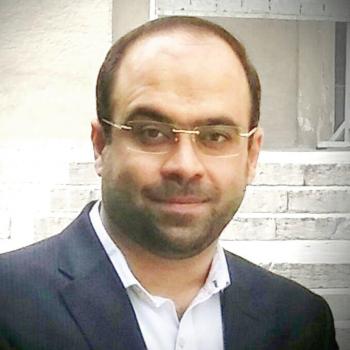
Hossein Nourzad is an Assistant Professor of Construction Project Management at University of Tehran, an Accredited CP3P Trainer at K-Infrastructure (based in Spain), and a PPP consultant. Prior to working at UT, he was a PhD Student at Department of Civil, Architectural, and Environmental Engineering at Drexel University. Hossein Nourzad also has an MBA (focusing on economical risks of infrastructure projects), a Master of Science as well as a Bachelor of Science in Civil Engineering. During the last 13 years of his mixed academic and professional experience, his main focus has always been related to “bridging the infrastructure gaps globally”. He loves networking with other professionals in the field (both in academia and industry) to share the state-of-the-art knowledge and experience. Hossein completed his professional certifications (CP3P, PMP, PMI-RMP, MCP, ENV SP, and CCM) while participating in industry chapters and focus groups. His current focus is on Infrastructure development through “Public-Private Partnership” and “Sustainability”.
Visit Hossein's website here.

LONDON, June 20, 2016—APMG International just launched the new APMG Public-Private Partnerships (PPPs) Certification Program. The Certification Program has been developed to establish good practices across the globe for professionals working on PPPs.
Responding to the need to enhance knowledge around PPPs and in the absence of a global certification program on PPPs - the APMG PPP Certification Program is an innovation and a collaboration between the Asian Development Bank (ADB), the European Bank for Reconstruction and Development (EBRD), the Inter-American Development Bank (IDB), the Islamic Development Bank (IsDB), the Multilateral Investment Fund (MIF) and the World Bank Group (WBG). The program is part funded by the Public-Private Infrastructure Advisory Facility (PPIAF).
Authored by many of the world’s top PPP experts with contributions from the multilateral development banks (MDBs), the PPP Certification Program Guide is at the core of the APMG PPP Certification Program. The PPP Guide is the definitive body of knowledge on PPPs, compiling a range of quality materials on PPP good practices – it can be used to support study for the APMG PPP Certification Program or as a stand-alone downloadable publication on PPPs.
“This is the first time the multilateral development banks have joined forces to promote a global program for building capacities for PPPs. We are delighted to partner with APMG to share with the world this unprecedented certification program on PPPs. This new curriculum aims to build capacity through foundation exams and a thorough PPP Guide. We hope this will serve as a comprehensive resource for PPP professionals and enable better understanding of how to deliver PPPs globally.” Laurence Carter, Senior Director, Public-Private Partnerships, World Bank Group, on behalf of the MDBs involved in this initiative.
The Foundation level exams are now available for self-study and work is underway to develop the Preparation and Execution level exams. The Foundation exam is aimed to test that candidates have sufficient understanding of the first chapter of the PPP Guide – ensuring they will be able to act as an informed member of a PPP finance project.
Once all three of the APMG PPP Certification Program levels are available – candidates will have the opportunity to gain the Certified Public-Private Partnerships Professional (CP3P) credential – providing them with global recognition of PPP proficiency.
The APMG PPP Certification Program and the PPP Guide will benefit PPP practitioners and can improve the quality of PPPs worldwide, while PPP professionals around the world can benefit from this opportunity to access this specialized knowledge and achieve a certification from a globally recognized program.
By helping to build a sounder knowledge around the management of PPPs as an option for governments to deliver basic infrastructure needs, the program intends to build capacity and knowledge access of professionals that are or will be working in their countries respective PPP programs, from government officials or their advisors.
About APMG International
APMG International is a global accreditation and certification body. APMG administers a range of professional assessment, development and certification schemes in key management disciplines including Business Relationship Management, PMD Pro – Project Management for NGOs and IACCM Contract and Commercial Management.
APMG works with strategic partners to provide access to best practice guidance, training and certification to help individuals and their organizations deliver positive results and change through improved efficiency and performance www.apmg-international.com

Matt Brewitt
As the Social Media and Online Content Writer within APMG’s Marketing Team – I help produce written copy for the APMG PPP website and the PPP Certification Program digital newsletter. I'm also responsible for creating social media material supporting the program and to raise awareness around PPP good practice.
I’ve been immersed in the world of public-private partnerships (PPPs) for over a decade, and during that time I have seen first-hand how these partnerships can help large-scale infrastructure projects overcome serious challenges. The new APMG PPP Certification Program, a global certification program on PPPs, offers access to knowledge at a scale that has never before existed, and it has the potential to improve the effectiveness of infrastructure PPPs around the world.
Filling a gap
The APMG PPP Certification Program is a significant step forward in the long-term goal of introducing PPPs as an effective option for meeting countries’ basic service and infrastructure needs, while helping to reduce poverty. But until now, people involved in PPP projects have lacked a common professional language, set of terms, and understanding of best practices based on experience. In some cases, this has resulted in PPPs that did not achieve their potential or benefit those in need as originally intended.
The APMG PPP Certification Program offers a path to higher quality PPPs because it fills these gaps, strengthening the professionalism of those who are actually creating, staffing, and managing those partnerships. On an even more fundamental level, the program will help countries decide which projects are best suited to the PPP approach so that time and resources are used most effectively.
First of its kind
The APMG PPP Certification Program and CP3P, the new professional credential for those who complete the program, are products of a ground-breaking collaboration among multilateral development banks (MDBs) and institutions that share the belief that more effective PPPs offer possibilities that have not yet been realized. The program is an innovation of the Asian Development Bank (ADB), the European Bank for Reconstruction and Development (EBRD), the Inter-American Development Bank (IDB), the Islamic Development Bank (IsDB), the Multilateral Investment Fund (MIF), and the World Bank Group (WBG), and is partly funded by the Public-Private Infrastructure Advisory Facility (PPIAF).
One element of the APMG PPP Certification Program that distinguishes it is the PPP Certification Program Guide, a free, downloadable, and comprehensive body of knowledge on all aspects of PPPs. This PPP Certification Program Guide is a stand-alone resource on PPPs as well as a tool to support candidates’ work toward the CP3P credential; as such, it is a monumental contribution to scholarship on infrastructure and PPPs. The team that created and reviewed it includes several of the world’s leading PPP experts, hand-picked by the founding MDBs. Together, the APMG PPP Certification Program, the PPP Certification Program Guide, and the CP3P credential build a foundation upon which PPPs, used in the right circumstances, can achieve their full potential.
The World Bank Group and PPPs
On our end, the World Bank Group is committed to helping governments make informed decisions about improving access and quality of infrastructure services, including the PPP delivery option when the circumstances are right. This approach is further strengthened when governments can assemble robust data, build capacity, develop and test tools, promote disclosure, and encourage engagement with all relevant stakeholders. Information and guidance on each of these can be found at the PPP Knowledge Lab, an online platform developed in collaboration with the MDBs: https://pppknowledgelab.org/.
PPPs can address the World Bank Group’s twin goals by enhancing the reach and quality of the delivery of basic services. When designed well and implemented in a balanced regulatory environment, PPPs can bring greater efficiency and sustainability to the provision of such public services as water, sanitation, energy, transport, telecommunications, healthcare, and education. PPPs can allow for better allocation of risk between public and private entities. PPPs are one tool among others for infrastructure delivery; every country has its own unique opportunities and challenges, and as an institution we recognize that solutions need to be tailored to the context.
My sincere thanks go to everyone who has made the program and body of knowledge possible. This includes the forward-thinking MDBs and institutions that committed early on to this project, as well as the steering consultative committee, the World Bank Group and APMG project teams, the PPP Certification Program Guide’s authors, and the external review panel members. I’d also like to thank the candidates who will be pursuing the CP3P credential, because their work will help strengthen infrastructure around the world.
I invite you to read my recent blog post, which discusses this in greater depth, at:
http://blogs.worldbank.org/ppps/worldwide-effort-improve-ppp-practice

Jyoti is the Program leader of the PPP Certification Program on behalf of the MDBs (ADB, EBRD, IDB, MIF, IsDB, WBG and PPIAF). She sits in the PPP Unit of the World Bank Group and is based in Washington DC.
Jyoti is currently leading the dialogue on PPPs in Kazakhstan and Tajikistan from the World Bank Group and previously in Brazil, Vietnam, Russia, Uruguay, Mozambique, Madagascar, Kenya and Ethiopia. Her work focusses on infrastructure project financing, financial viability assessments and structuring of PPP options.
Her recent achievements have been defining the private capital mobilization/catalyzation among development community; launching the Global PPP Certification program −‘CP3P’; financial recovery planning for Vietnam Electricity and; structuring PPPs in Irrigation toolkit. Jyoti specializes in Infrastructure Finance with an MBA from George Washington University and Mathematics in undergraduate, she has over 10 years of work experience in project finance transactions and PPPs.
See below for some examples of Jyoti's other work:
- A financial recovery plan for Vietnam electricity: with implications for Vietnam's power sector
- How to develop sustainable irrigation projects with private sector participation

A question I often receive at meetings is how to calculate value for money in PPPs. Many governments hire consultancy services that produce impressive spreadsheets on VfM. Very good, but for those governments who do not have the capacity to afford these services or do not understand the spreadsheet, here are some basics:
What is Value for Money?
The first thing the spreadsheets do is calculate how much ‘cheaper’ a project would be compared with traditional procurement. If that was the case, we would have to name it ‘Cheaper through PPPs’; value is more than money alone. But let’s answer the question just form the financial respective. There are three main components that will give you value for money;
- A well-structured financial deal with good risk allocation;
- Life cycle approach in the project; and
- Management of the operational phase of the contract, the tail

What are the numbers?
A well-structured financial deal with good risk allocation will save you about 10% with a traditional procurement. Over 80% (UK National Audit Office) have budget overruns, sometimes up to 100%. Good PPPs prevent these overruns at the expenses of a government.
Life cycle approach will result in a significant reduction of costs over the 20-30 years of the project, an average of 15-20% can be saved, depending on the type of infrastructure. Good management during the operational life of the contract will save the government an average of 5-10%.
The value for money of a well organised PPP can add up to around 30-40% compared with traditional procurement. A road with an estimated cost of $1000 Million will be reduced to $600-700 Million.
Where do governments lose their value for money?
The eagerness of many politicians and governments to get a project done, especially when election time is in sight, will increase the subsidies and guarantees towards the private sector. The 10% VfM will vaporise and in some cases become negative.
Life cycle is hardly seen in VfM. If governments do not know what a project costs (not how much the budget is but real cost), you never know what you have saved. As most governments do not allocate funding/budget for maintenance this VfM is hardly seen in hard numbers.
Sadly, management of the contract is hardly discussed and receives little attention. Here governments again lose money, in combination with the guarantees and subsidies. In the end, the life cycle will still save money and will reduce costs toward 10%, and our imaginary road will cost $900 Million, if you’re lucky.
How can we get the most out of our VfM?
The real VfM is investing in understanding PPPs at government level and hire good consultancy services (but be in charge). Capacity building is not just a phrase; it is in the end providing you VfM. The Netherlands PPP Unit (20 full time staff, managing 20 projects) had an annual budget of $200.000 for training and capacity building. The average value for money in the PPP projects was and still is between 15-25%, projects ranging between $500 million – $4000 million. The Netherlands audit office calculated that PPPs saved about 400 million Euro in 5 years of PPP; the capacity building budget for the ministry, including the PPP unit, special training for maintenance of the PPP contract and a ‘project academy’ for the project manager within the government was around 5 Million Euro’s over the same period. A net result of 395 million Euro. Still interested in a spreadsheet on VfM?
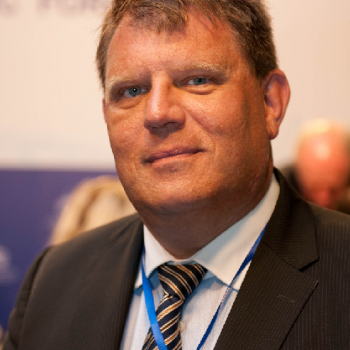
Jan van Schoonhoven
Senior Advisor on PPP and Innovative Financing for the Netherlands Government
Currently, Jan van Schoonhoven is Senior Advisor on PPP and Innovative Financing for the Netherlands Government. His main role is to develop investment ready projects supported by the Netherlands government in economies in transition. He works for the Intergovernmental Water Centre in The Hague, a center supported by the Ministries of Infrastructure, Foreign and Economic affairs.
From 2012-2015 he was seconded to the United Nations in Genève as Executive Director of the International PPP Centre of Excellence of the United Nations. This center was established by the 56 member countries of UNECE to assist governments in developing a successful PPP pipeline by using best practices and implementing PPP standards. The center closely works with the Multilateral Banks (World Bank en ADB).
Based as a diplomat in Geneva, Jan van Schoonhoven also supported the discussions on the Sustainable Development Goals and the partnership with the private sector with a number of UN organization, like the UNCTAD, and WHO and furthermore at the WTO.
Before the UN, Jan van Schoonhoven was director of the Netherlands PPP Unit and transformed the PPP environment of the Netherlands form 2 projects (2006) to 20 projects and almost 20 Billion Euro’s in 2012. High-speed Rail, the second largest Locks in the World and the second Port of Rotterdam are international know projects.
Jan works for the World Bank on Procurement and PPP and supports the development on PPP of Ghana. He is independent director at the PPP Centre in Kazakhstan and member of the Infrastructure Think Tank of the G20. He also established a PPP center on Aruba, with already two projects with financial close.
Jan van Schoonhoven was born in 1963 and started his career as Officer in the Royal Netherlands Navy in 1982. He did a large number of tours around the world, including UN missions. In 1999 he joined the Ministry of Infrastructure and started as Director of the Coastal Defense and Anti Flooding organization. He lives in The Hague, is married and has three daughters.
Contact details
Jan.van.schoonhoven@rws.nl
+31 6 52596136
https://www.government.nl/topics/public-private-partnership-ppp-in-centralgovernment/

This is an unprecedented time of change for the healthcare sector globally. Demand is rising exponentially as life expectancy increases, and patients are better informed and have higher expectations. The information revolution has also given clinicians better access to evidence-based practice, and scientific and technological innovation that will transform the way health services are delivered.
The United Nations' Sustainable Development Goals (SDGs) set some challenging targets in relation to healthcare. As well as SDG3 – the aim of ensuring healthy lives and the promotion of wellbeing for all at all ages – they also include targets for reducing inequality, improving the resilience and sustainability of services and infrastructure, and economic development. Many of the other SDGs – improving water and sanitation, ending poverty and hunger, and the promotion of inclusive, safe, resilient and sustainable cities will directly enable societies to improve health outcomes and provide healthcare more efficiently to their people.
Unfortunately, many health systems are subject to tough financial constraints and realising the SDGs will call for significant investment. One way of overcoming this challenge could be the use of Public-Private Partnerships (PPPs), but they must be used very carefully. If managed well, PPPs can play an important role in attracting private sector expertise and investment that will help achieve the SDGs.
At their best they can enable change, give patients the best care in an appropriate setting, and make healthcare staff feel valued and fulfilled. But it is crucial that the suitability of PPP for any given programme is carefully assessed; at their worst they can represent poor value for money and lack transparency which could result in worsening inequality.
SDG3 comprises three subgroups: three targets similar to the Millennium Development Goals (ending certain epidemic and communicable diseases, and reducing maternal deaths and infant mortality); three focussed on non-communicable diseases (addressing road traffic accidents, substance abuse and mental illness); and three cross-cutting targets aiming to improve health systems, including universal health coverage.
The first of these categories can have the most easily defined investment needs and measures of success. A reduction in maternal mortality ratio (MMR) to 70 per 100,000 live births (SDG3.1) will require each country to reduce its MMR by two thirds, and no country should have an MMR greater than 140. Some of the world’s lowest income countries have a baseline MMR greater than 420 with the highest levels seen amongst poorer rural communities which have limited access to healthcare services. To address this there is a need for significant investment in infrastructure, technology and staff.
The Saving Mothers Giving Life partnership is one example – a PPP between the governments of Uganda, Zambia, the USA and Norway, clinical institutions and the commercial firm Merck delivered over $10m of capital investment in facilities such as operating theatres to perform safe caesarean sections; and recurring costs associated with staffing and improvements in maternal health networks, leading to reductions in maternal mortality by 53% in target facilities in Zambia, and 45% in target facilities in Uganda.
The key to addressing non-communicable diseases is the introduction of sustainable public health strategies and effective local networks. Low levels of investment and high cultural barriers can therefore make it a difficult match for PPP. In 2003, a PPP between Pakistan’s Ministry of Health and Non-Governmental Organisation Heartfile developed a plan for better integrating efforts to tackle non-communicable diseases and invested in development and communication of the plan and its delivery through local networks. But they found that changes in national governance, health system constraints such as poor regulation of private providers, and incoherent clinical workforce planning impeded its implementation.
Changing health systems is the most difficult task to assess. There is a need for investment in strong health information systems and the generation of robust, relevant measures in the first instance. But improving equality of access calls for a clearly defined set of healthcare policies and strategies for delivering them, so that investment is prioritised in the areas where it will make the most difference.
Where this has been tackled successfully, the programmes are characterised by strong and objective political focus on areas where PPPs will really add value, and a robust partnership between the government and private sector which provides demonstrable value for money. It is crucial that these partnerships are systematically assessed because there is no single “private sector” and the quality of outcomes will depend on many factors, including the simplicity of the project, its suitability for PPP arrangements and the culture and approach of each specific private sector partner.
There are good examples of success: In Ghana, the establishment of a National Health Insurance Scheme which features private as well as public investment resulted in a five-fold increase in access to primary healthcare services between 2003 and 2011. The governments of Mexico and Singapore have taken the same approach and seen similar results.
The need for clarity and evidence-based guidance on implementation has led the United Nations Economic Commission for Europe to sponsor the development of UN Standards on best practice in the implementation of PPP programmes. Starting at a very high level, the Standards will provide governments with recommendations on implementation developed by PPP specialists from government and the private sector. UNECE will also commission “Centres of Excellence” in several sectors which will provide ongoing advice and support to governments considering PPP programmes.
The Sustainable Development Goals represent a shared vision for the world’s population in 2030. PPPs can play a significant role in delivering them, but it is critical that governments ensure that any PPP programme fits within an appropriate policy framework and investment strategy, so that it delivers the best possible value for money. One important feature of successful PPP programmes is the development of strong public sector management skills and governance, and the recent development of PPP management certification programmes will help achieve this end.

Director of Healthcare Projects
Peter is responsible for business development in the healthcare sector for John Laing, a leading international investor in economic and social infrastructure which has delivered more than 20 major healthcare PPP projects and over 40 clinics and primary care facilities.
He has worked on the development of public infrastructure since 1989 and has substantial experience in the successful structuring and delivery of a diverse range of Public-Private Partnerships in the healthcare, water and transportation sectors in the UK, Africa, the Middle East, South East Asia and the Caribbean. Since 2001 he has focussed specifically on healthcare projects, managing the development and delivery of major acute and mental health schemes with a capital value exceeding £2bn.
Peter is a Chartered Civil Engineer and a Fellow of the Institution of Civil Engineers. He is also a Non-Executive Director of the Oxford University Hospitals NHS Trust which operates one of the UK’s leading teaching hospitals, and is leading a project to develop a standard for the implementation of Healthcare PPP projects globally for the United Nations.
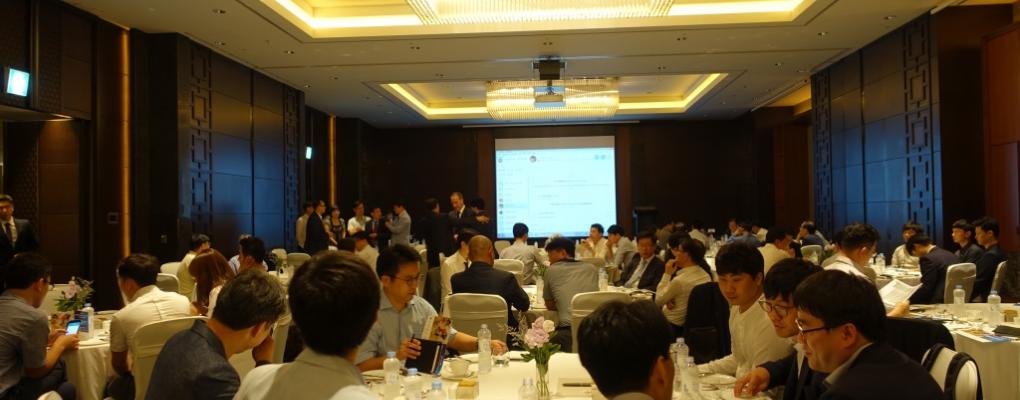
Over 110 delegates attended our event in Seoul, one of three events held last week showcasing the APMG PPP Certification Program.
The event opened with a congratulatory speech from Mr. Seong-hoo Kang, Director General, Regional Economic Cooperation, Ministry of Strategy and Finance. Welcoming the launch of the PPP Certification Program in Korea, Mr. Seong-hoo Kang expressed his pride in Korea being chosen as the first country in Asia to launch the certification.
The Korean government has given its commitment to support organizations and individuals involved in Public-Private Partnerships (PPPs) which will help Korean and other EMDB governments to raise the funds necessary to meet infrastructure demands and stimulate economic development.
“ADB is delighted to partner with APMG to launch this unprecedented certification program on PPPs in Korea,” said Mr. Trevor W. Lewis, Principal of PPP Specialist Office, Asia Development Bank, who joined the event via video-conference.
Mr. Nick Houlton, Chief Operating Officer, APMG International, shared his excitement about the Certification Program’s launch, “the PPP Certification Program Guide has been developed by some of the world’s leading experts in PPPs across the globe and was driven by a mutual desire to see PPP good practices become commonplace worldwide. Creating the certification program was a closely collaborative effort and is the first of its kind. It is a response to the difficult challenges many nations are currently facing and is hoped to bring transformational change to PPPs.”
Ms. Helen Yu, General Manager at APMG-International, China and R.O.Korea, who also supported the conference, was delighted to report that over 20 delegates are already planning to study the guide and intend to take the exams in the near future.
Expressing interest in the program, one delegate said during the Q&A session, “This is just the right time for the launch of the PPP program. It’s time for me to start to study PPP guide, pass the exam and obtain the certification. The certification will (help me to) distinguish myself and approve my expertise in PPP.”
The APMG PPP Certification Program is an innovation and a collaboration between the Asian Development Bank (ADB), the European Bank for Reconstruction and Development (EBRD), the Inter-American Development Bank (IDB), the Islamic Development Bank (IsDB), the Multilateral Investment Fund (MIF) and the World Bank Group (WBG). The program is part funded by the Public-Private Infrastructure Advisory Facility (PPIAF).

Matt Brewitt
As the Social Media and Online Content Writer within APMG’s Marketing Team – I help produce written copy for the APMG PPP website and the PPP Certification Program digital newsletter. I'm also responsible for creating social media material supporting the program and to raise awareness around PPP good practice.
I was delighted to attend the 7th PPPAMÉRICAS event in Santiago de Chile last week. Organized by the Inter-American Development Bank (IDB) and the Multilateral Investment Fund (MIF), this successful event attracts around 400 Public-Private Partnership (PPP) delegates every year. Attendees come together to discuss and share views relating to present and future PPP developments in Latin America and the Caribbean.
There were, as usual, a significant number of representatives from Multilateral Development Banks, including IDB and the World Bank Group (WBG), as well as from most governments in the Latin American and Caribbean (LAC) region.
Hot topics, such as smart and sustainable cities, climate change and social impact bonds were discussed. Chilean government representatives explained the basic features of their PPP model and highlighted successful achievements made over the last 20 years. In addition, some recurring themes were discussed in depth, such as financing mechanisms. Chilean representatives shared news of their infrastructure fund which will be built on the basis of residual values of toll road concession contracts.
The panel discussion on initiatives and facilities to support and boost the proper preparation of PPP projects was of particular interest. Representatives of the Global Infrastructure Hub (GIH) and Global Infrastructure Facility (GIF) explained how their facilities/institutions may support proper analysis, preparation and structuring of reliable PPP projects, amongst other experts and initiatives.
However, as everyone recognised, it is not only the planning and organization of the projects that is key – but also the specialized knowledge of PPP professionals responsible for designing the frameworks and delivering these programs. The session chaired by Clive Harris (WBG) and Dennis Blumenfeld (IDB) highlighted the need for common knowledge and best practice dissemination amongst PPP professionals. Clive and Dennis announced the launch of the APMG PPP Certification Program in this session.
The Program was received with great interest and we anticipate that at the next PPPAMÉRICAS event (being held in Costa Rica in 2017) we will not only come across PPP professionals and PPP officers - but also a good number of Certified PPP Professionals!

Andrés Rebollo
Andrés has 18+ years of experience working in the field of PPP and Infrastructure finance and now acts as independent senior advisor to investors and governments. Previous positions of Andrés include Partner head of Infrastructure & PPPs at Deloitte (the past 6 years), founder partner of Adeinfra (PPP boutique acquired by Deloitte in 2008) and Director of PPP practice at PwC.
Andrés has lead more than 50 PPP and infrastructure advisory contracts, majority of them in transportation sector plus a relevant number of them in Social Infrastructure and water. This includes more than 40 PPPs structured for authority (acting as procurement advisor) or advised to bidder/investor in countries as US, México, Chile, Brazil, Uruguay, Colombia, Turkey, Greece, Ukraine, Malaysia and Spain.
Some remarkable successful projects (already in operations) include
- i-595 and Miami Port Tunnel (Florida),
- Zaragoza and Tenerife LRTs (Spain),
- the HSR PPP program in Spain,
- Tapachula Ciudad Hidalgo road PPP (México).
Andrés has acted also as advisor of the design and creation of the Spanish public infrastructure fund managed by ICO and as senior advisor to the fund in its 4 first materialised transactions.
Director and main lecturer of several PPP courses and capacitation projects, Andrés is also main author of several publications and white books for WB, IDB and government of Spain and author of several articles in specialised press and general economic press.

We’re delighted to announce the introduction of our online training initiative to support candidates studying for the APMG Public-Private Partnerships (PPPs) Certification Program.
The new online training offers a flexible approach to learning with a simple and clear online course, designed to take students through the full CP3P Foundation syllabus. This exciting initiative is free of charge and provides a valuable opportunity for candidates to test and build their knowledge of managing and delivering PPPs globally.
Test questions are provided at the end of each module to help enhance a candidate’s learning and there is also an exam simulator at the end of the course. Candidates are able to study at their own pace.
As the online training course is a self-study initiative, there is no tutor support available and it is therefore recommended that candidates attend an accredited training course if they want additional support from a trainer with subject matter expertise.
The Foundation level exam is now available for candidates choosing to self-study - it is designed to test that candidates have a good understanding of the content comprising Chapter 1 of. This knowledge will equip them with the expertise they need to act as an informed member of a PPP finance project.
Work is currently underway to develop the Preparation and Execution level exams. Once all three of the APMG PPP Certification Program examinations are available – successful candidates will have the opportunity to gain the Certified Public-Private Partnerships Professional (CP3P) credential – the definitive credential for recognition of PPP delivery that is in alignment with globally recognized good practices.
People who are interested in using the free Online Training Course can do so here.
END
About The APM Group (APMG)
APMG-International is an award-winning Examination Institute. It accredits professional training and consulting organizations and manages certification schemes for knowledge-based workers, and has a global reach, with regional offices located around the world.
All APMG’s certifications are aimed at helping business professionals develop their knowledge, skills and expertise. For further details about APMG's Public-Private Partnerships Certification Program visit: https://ppp-certification.com or call + 44 (0)1494 452450.

Matt Brewitt
As the Social Media and Online Content Writer within APMG’s Marketing Team – I help produce written copy for the APMG PPP website and the PPP Certification Program digital newsletter. I'm also responsible for creating social media material supporting the program and to raise awareness around PPP good practice.

Stefan Reich highlights four of the key subjects discussed at the recent International Infrastructure Dialogue 2016, held in Frankfurt, 22 - 23 June:
![]() Summary_Infrastructure-Dialogue-2016_Reich.pdf
Summary_Infrastructure-Dialogue-2016_Reich.pdf

Stefan Reich
Infrastructure Dialogue “Off the beaten track” took place on 22-23 June 2016 at the Villa Kennedy in Frankfurt. Having attended both days, these are my perspectives on three highlights that were of particular interest to me.
A glance at the market: putting recent Brexit developments into perspective.
While this conference took place, the UK held a national referendum for its people whether they wish to stay inside or outside the European Union. The day that followed I suspect many of the attendees will remember as sombre and with a sense of disbelieve. The shockwave following the announcement to vote ‘out’ seems to affect the UK itself more than the rest of the world.
For the ‘Brexit’ camp, the assertion that bigger is better and that centralisation is easier to resolve problems is perceived as a mistake, especially given that UK problems are different to those of the EU. For the ‘Bremain’ camp it does not mean that everything would stay as normal. In the EU, a banking union, capital markets union and energy union are all much needed however these need time and flexibility from EU countries to come to fruition.
In the UK, the Brexit vote requires a new foreign policy that sets out how it wants to trade and collaborate with the EU and other countries in the future. There was also a recognition that the UK outside the EU will become a test for the Euro as it might inspire other countries to hold a referendum. Fact is that there is more uncertainty after Brexit than before. With elections in the USA approaching, and increasing turmoil around the European borders it is likely that political risk and uncertainty will continue in 2016.
What does this all mean for the infrastructure market? Given that the market thrives on predictability, confidence and stability, the result of the referendum is unlikely to provide any positives to the sector in the UK. Although there may be a time when ESA10 accounting rules are no longer a threat to the UK PPPs being regarded as off the government’s balance sheets.
Partnership Capital – Infrastructure Investors and Cooperates: best ways to collaborate?
Infrastructure is now seen as a separate asset class by institutional investors. When searching for yield they can be convinced by structuring the deal with stable cash flows, good local partners and trusted people. Beyond the developed markets, this can occur in those emerging markets and OECD countries where political regimes are more stable and the local language and culture are understood. The level of yield depends on how portfolios are structured and construed to diversify the risk, combined with the specific investment mandate that managers are given by their fund directors.
It certainly requires a lot of skill to win deals and enhance asset value: when investors acquire 100% equity the governance becomes easier, especially when complex assets don’t perform opportunities to shake up become more apparent. Large investment platforms can be effective but require a lot of due diligence. It was felt that institutional investors prefer individual assets to the more complex platforms.
Structuring Infrastructure Investments: how can projects be syndicated more widely?
A number of solutions were put forwards such as exclusivity or pre-emption rights in existing portfolios, use of platforms for PPPs, react to market activity (e.g. currency volatility), introduce new funding mechanisms elsewhere (e.g. Thames Tideway Tunnel), but also value enhancement opportunities in operational assets, and ESG performance lifecycle assessments (e.g. GRESB: Global Real Estate Sustainability Benchmark).
The debate moved on whether the role of SPVs should be restructured to become more independent, i.e. more separate to the investor or contractor business. This pertains to both investors allocating development risk, and to those involved in operational risk. It was posited that investors reverse engineer SPVs before the building contractors sell their equity. It was recognised that the ‘independent SPV’ is a concept that so far is only applied in the UK and that most of the SPVs in other mature markets and developing countries work with local contractor-led SPVs.
What about longer term SPV ownership via the secondary market? In order to understand the pros and cons better, one
might look at SPVs at two levels: (1) the day-to-day administration and management of SPVs, and (2) the owners’ management of SPVs.
The latter should be sophisticated active management by Directors with strong project finance, problem solving and relational skills, who draw their decision making upon the intelligent data and reporting that is supplied by their day-to-day Asset Managers.
How SPVs will evolve in the future will depend on multiple factors: who becomes lead investor, will the original lead investor still act as co-investor (similar to a GP–LP relationship), whether investors develop a centre of excellence (a separate entity that can retain portfolio knowledge and skills, and learn as projects go through their asset life), or go 100% direct with skilled and experienced specialists inside the investment team.
Concluding remarks
There was a consensus that an ‘independent’ model may help to sustain the rates, gearings and covenants to levels that (except for interest rates) we have seen 10 years ago. Longer term SPV ownership via the secondary market might be a solution for the mature markets in Europe and developing countries.
Infrastructure is not as risk free as it seems. With often de-risked operating assets once sold into the secondary market, Government’s austerity impacting commissioning of new projects or programmes involving Private Finance, or sudden changes in regulation or political regimes. The underwriting of risk should be modelled within controllable assumptions (e.g. upside priced into assets, and the creation of operational volatility).

Daan Vermeer
Daan Vermeer is currently completing his PhD thesis on the critical evaluation of strategic PPP/PFI investment vehicles for social infrastructure portfolios. His doctoral work is linked to UCL’s MSc course in Infrastructure Investment & Finance, and supported by the UK’s Major Projects Association, the Education Funding Agency, and PARIO. Daan also works part-time as SPV General Manager at PARIO, a specialist SPV management firm in the UK and Ireland. He provides PPP/PFI contract and commercial management services on behalf of lenders and investors for social and economic infrastructure projects.
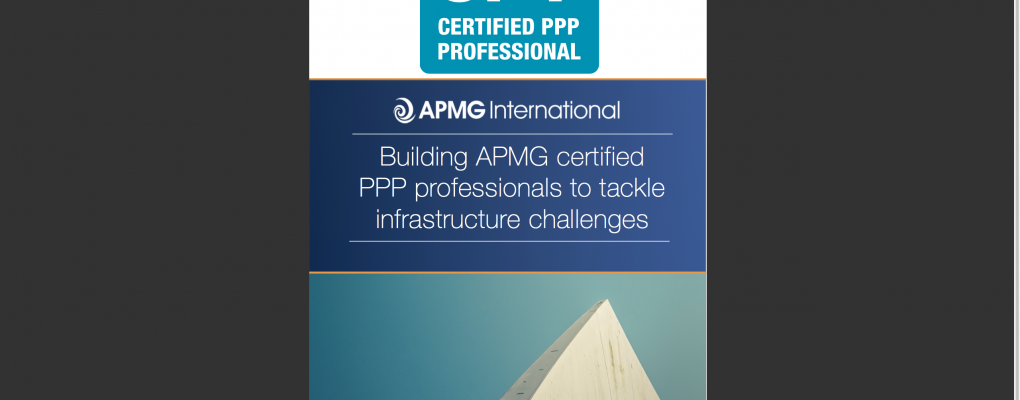
Download the pdf below for a concise overview of APMG's PPP Certification Program - including information on the PPP Guide, Online Training Course, exams and the CP3P credential:

Matt Brewitt
As the Social Media and Online Content Writer within APMG’s Marketing Team – I help produce written copy for the APMG PPP website and the PPP Certification Program digital newsletter. I'm also responsible for creating social media material supporting the program and to raise awareness around PPP good practice.

Download the pdf below for details on how to become an accredited training provider for APMG's PPP Certification Program:
![]() Become an accredited CP3P trainer.pdf
Become an accredited CP3P trainer.pdf

Matt Brewitt
As the Social Media and Online Content Writer within APMG’s Marketing Team – I help produce written copy for the APMG PPP website and the PPP Certification Program digital newsletter. I'm also responsible for creating social media material supporting the program and to raise awareness around PPP good practice.

I am a Water Engineer/Consultant and have been working for a number of years now on helping water utilities around the world optimize their network operations, with a particular focus on Non-Revenue Water (NRW).
I recently concluded an NRW performance based contract (PBC) in the Kingdom of Bahrain, in the Middle East. Prior to that, I worked on a number of utility Institutional Strengthening and Capacity Building projects in countries such as Ghana, Sudan and Sri Lanka.
Through this experience I developed an interest in Public-Private Partnerships (PPPs) in relation to the water sector. While working in Ghana, coincidentally the country utility had a Management Contract in place. Later, when completing my MSc - I researched water sector PPPs in Tanzania and Argentina that ended in legal arbitration.
In the case of Tanzania, I had a particular reason for being interested as it involved my former employer, though I had absolutely no involvement in the Lease Contract there. As I studied it in detail it struck me how this was a contract that was unviable from day one and, though I would have relished the challenge of trying to make it work, it was practically guaranteed to end in failure.
Through my membership of the International Water Association (IWA), I was invited to a Practitioner’s Retreat at the World Bank headquarters in Washington DC on NRW PBCs. This alerted me to the World Bank’s resources and programs in these areas and subsequently the PPP Certification Program.
The World Bank is currently creating a knowledge base for NRW performance based contracting. Other initiatives I am interested in include the DFID funded “Dreampipe Challenge” which seeks innovative ways of financing NRW projects in developing countries. Given all this - a certification program on PPPs makes a lot of sense to me.

Joe Dalton
A water industry professional working for MWH Global with experience in water distribution management and optimization - particularly in regards to Non-Revenue Water (NRW), pressure management, Geographic Information Systems, Netbase water management software, bulk and customer metering, telemetry systems, customer billing and leakage detection.

Greater collaboration between the public and private sector in emerging markets is transforming property and infrastructure and providing exciting opportunities for economic growth. We are now seeing public private partnerships (PPPs/P3s) in a wider range of countries, as well as in new sectors (e.g. water and wastewater) both in established PPP/P3 markets and in those where PPP/P3 project pipelines have paused - such as the UK.
What is often lacking in these partnerships is the expertise, experience and credibility to fully unleash the huge potential of PPPs/P3s. However, with specialist PPP/P3 training it is possible to equip public sector organisations with the capabilities to prepare, procure and manage these valuable partnerships. The benefits of having these skills are very clear, because the more skilled public sector teams manage to secure better value bid prices from the private sector partner and the funders.
PA is the first consultancy able to deliver the newly launched APMG PPP Certification Program, sometimes referred to by its awarded credential - the Certified PPP Professional (CP3P). We have partnered with the Chartered Institute of Public Finance and Accountancy (CIPFA) to provide this training and have just returned from delivering this training to World Bank and Government PPP Unit staff in Kenya, Uganda and Rwanda.
As part of the CP3P training we needed to understand the national scale of the PPP/P3 opportunities in these countries and so ran a “readiness assessment”. This allowed us to consider the views of the World Bank and PPP Unit staff and understand their perceptions from an international investor stand point. The issues covered in this assessment included the institutional framework for progressing PPPs/P3s; the state of the economy; the level of political engagement; and support for a PPP/P3 pipeline.
We identified that there are a number PPP projects in the pipeline, including those in procurement, under construction and operating, and that these are supported by strong GDP growth – 5.6% in Kenya, 5% in Uganda and 7.5% in Rwanda. It was also clear that, at an individual level, staff were enthusiastic, they had a good level of existing skills and they recognised the importance of having programme/project managers, technical, financial / commercial and legal experts in their teams.
A key principle of the CP3P training and accreditation is to drive the use of a standard global language for describing PPPs. This is not to say that local terminology, legislation, guidance and approach will change, but a CP3P professional will be able to recognise and reconcile the differences between the approach in their own and other jurisdictions. At a national scale, the benefits of this accreditation programme include equipping organisations with the know-how to champion vital collaborative infrastructure programmes and projects.
We drew on our own experience as practitioners to ensure that the staff understood how to implement a project effectively, based on a strong business case process, and a good PPP/P3 arrangement. In particular, we wanted to underline the importance of not spending time and resource developing a theoretically perfect PPP/P3 arrangement, which is then not implemented. We were also able to use our experience from working on both the public and private sector side to provide insights into private sector motives in PPP/P3 deals and on the importance of post contract signature contract monitoring. It is vital to recognise that these are long term (25 years) relationships where the public value / VFM of a PPP/P3 accrues throughout the operational phase and so these projects need ongoing scrutiny.
These partnerships are going to remain high on the agenda in many countries. Property and infrastructure spending is forecast to hit $9trillion by 2025, a proportion of which will be PPPs P3s. In addition, the World Bank has approved 407 loans with a PPP component, between 2002 and 2016 totalling $15.6 billion and the UK Defence Infrastructure Organisation has announced that it will explore and analysis alternative funding sources, such as PF2 (private finance), to meet £2 billion of required investment. All that means that the CP3P training and accreditation is a very timely addition to the support available to those embarking on PPP projects.

Mark Williams
Mark Williams, Director and Property & Infrastructure Lead at PA Consulting and member of CIPFA's Governments Faculty Board - specializes in providing financial and commercial advice on a range of complex contract PPP/PFI savings projects across defence, transport, education and health.
2016 saw the much anticipated launch of the APMG Public Private Partnerships (PPP) Certification Program.
Responding to the need to enhance knowledge around PPPs and in the absence of a global certification program on PPPs - the Certification Program is an innovation and a collaboration between the Asian Development Bank (ADB), the European Bank for Reconstruction and Development (EBRD), the Inter-American Development Bank (IDB), the Islamic Development Bank (IsDB), the Multilateral Investment Fund (MIF) and the World Bank Group (WBG). The program is part funded by the Public-Private Infrastructure Advisory Facility (PPIAF).
This is the first time the Multilateral Development Banks have come together to support a global curriculum on PPPs, which is accessible to anyone with an internet connection.
The ultimate aims of the program are to develop the capability of individuals responsible for the management of PPPs, supporting them to meet infrastructure demands and stimulate economic development, which are key to the UN’s vision of ending extreme poverty.
I’d like to share some of the highlights of the program to date:
- Launched in June 2016, the PPP Certification Program Guide, comprising PPP best practices from around the world was authored by a team of 12 PPP practitioners with extensive regional and sectoral knowledge and reviewed by over 80 PPP experts. Designed for the PPP community, both existing professionals and individuals interested in developing their knowledge of the sector. Over 60,000 people have downloaded the free online publication
- Sitting alongside the guide is our free online training course, designed to take students through the full CP3P Foundation syllabus. This course provides a valuable opportunity for candidates to test and build their knowledge of managing and delivering PPPs globally. Over 250 people taken the Foundation online training
- Six Accredited Training Organisations and one Affiliated Partner are now approved to provide both online and classroom training and consultancy services in support of the PPP Certification Program. These organisations are spread around the world and more are in the process of accreditation from many more countries including Brazil, Iran, Malaysia, Nigeria, Singapore, South Africa and the USA.
- Over 700 learners have exam vouchers and are preparing to take the Foundation exam with candidates from 31 countries now certified at Foundation level. Full details about the exam are available here
- We are very pleased with having successfully raised awareness of the Program by attending and speaking at PPP events around the world including the United States, Brazil, Melbourne, South Korea, Canada, London and Frankfurt.
- Interest in the Program has a truly global reach with frequent visitors to the website from as far afield as India, Australia, Japan, Nigeria and the Philippines. Visit https://ppp-certification.com and get involved in the global PPP community.
Following the successful launch of the Certified Public-Private Partnerships (PPP) Professional (CP3P®) Foundation course and exam in March 2016, PPP practitioners will soon be able to demonstrate their knowledge by taking the Preparation exam, the first of the two higher level exams.
One of the aims of the certification is to strengthen PPP best practice through a global standard of knowledge. Over the past year, interest in the Public-Private Partnerships Certification Program has grown rapidly and has established a truly global reach, with candidates from 46 countries now certified at Foundation level.
After passing the Foundation level examination, candidates can choose to take either one or both of the two higher level exams: Preparation and Execution. Candidates who pass all three examinations will be entitled to use the Certified Public-Private Partnerships Professional (CP3P) credential.
Building on the program’s success to date, the Preparation exam, is based on chapters 2 to 5 of the PPP Certification Guide and will test a candidate’s understanding of a PPP framework and application of PPP Project Identification, Screening, Appraisal and Preparation Processes in a given governmental context.
Audience for the Preparation exam
The Preparation exam is aimed at individuals involved in the development or implementation of Public-Private Partnership frameworks or the initiation and preparation of PPP projects. Public sector officials and PPP practitioners, as well as their advisors and consultants will find the exam beneficial to enhance their delivery of PPPs. The private sector will also have an interest in this certification to better understand the PPP concept as an asset/business opportunity, Government objectives and institutional arrangements.
The exam is based on a fictional infrastructure PPP scenario and candidates will be required to apply their knowledge of the PPP Guide to the given situation. The questions are complex multiple choice, and the exam time is 2.5 hours. Candidates will be required to score 50% or more in order to pass. A sample exam paper will be provided to candidates who have registered to take the exam.
Classroom and online training
Candidates will be able to take the exam at the end of an accredited training course via our network of global training providers. The training course will typically be delivered over 5 days, and include time for candidates to sit the Preparation exam. We anticipate that Accredited Training Organisations will be able to offer Preparation courses and exams from May 2017.
The exam will also be available online from the end of May for candidates who wish to self-study, however, APMG will not be developing a free online training course for the Preparation exam. We therefore strongly recommend attendance at an accredited training course in order to be fully prepared for the exam.
The other higher level exam, Execution, is due for launch later this year and more details will be provided in due course.
Find out more
For more information or to register your interest in the Preparation exam, please visit www.ppp-certification.com/contact-us or email partnerships@apmg-international.com

Helen Platt
Project Manager at APMG.
Making successful cases for Public Private Partnerships
Mark Williams, property and infrastructure lead at PA Consulting Group and John Wilkinson, MOD Defence Infrastructure Organisation PFI Advisor (on secondment from PA Consulting Group)
Infrastructure investment under good PPPs/P3s deals
It is well documented that infrastructure investment is vital to support economic growth. In emerging markets and developing economies there is now greater collaboration between the public and private sector working to transform property and infrastructure, thus providing exciting investment opportunities. We are seeing public private partnerships (PPPs/P3s) in a wider range of countries and in new sectors, for example water and wastewater, in both new PPP/P3 markets and in those with established PPP/P3 agreements in development and operation. Success is dependent on structuring the right deal and gaining support from government institutions and the private sector.
The variety, complexity of deals and the mixed messages that have been sent have resulted in criticism in some quarters of existing deals and challenges in agreeing new ones. PPP/P3 deals have become contentious and the projects can take a long time and consume valuable, scarce resources with some deals failing to be agreed after significant development.
This article considers how government institutions can improve the flow of infrastructure funding through PPP agreements, focusing on how performance can be improved by building capability to create good deals and using a compelling business case to convince decision makers and influencers.
Creating good deals
To support the development of good deals, specialist PPP/P3 training is available to equip public sector organisations with the capabilities to prepare, procure and manage the full range of these valuable partnerships. The Certified PPP/P3 Professional (CP3P) / APMG PPP Certification Program has been developed by a number of regional development banks and the World Bank Group, and was part funded by the Public-Private Infrastructure Advisory Facility to enhance PPP performance globally. The course covers:
- Definition and main characteristics of a PPP
- Alternatives for infrastructure finance and procurement
- Types of PPP and other terminology applied
- Where PPPs are used
- Motivations for using PPPs
- Typical structure of a PPP
- How PPPs are financed
- Reasons for project failure
- Introduction to the PPP Framework concept and considerations
- Overview of the PPP Process
The CP3P credential provides a credible demonstration that an individual has PPP skills that are aligned with international good practice. At a national scale, the benefits of this accreditation programme include equipping organisations with the know-how to champion vital collaborative infrastructure programmes and projects.
Using the Five Case Model to build a compelling business case for successful PPPs
Irrespective of whether the proposed PPP/P3 is the greatest deal ever, without the ability to progress through the decision making hurdles it remains an academic exercise. Greater transparency and scrutiny mean that the decision making business case for the deal must be robust, with the business case used as the tool to explain the deal and convince approvers.
The UK Treasury defines a government business case model in the Green Book and to support this has been developing and championing the Better Business Case (BBC) approach; this is now being used by governments and global non-governmental organisations around the world. The APMG BBC training course and accreditation programme has been delivered to around 4,000 government officials and advisors.
The APMG BBC training equips staff to guide decision makers and senior stakeholders through the Five Cases to build the compelling Business Case Model to make the best value-for-money decision.
The Five Cases organise the business case into the key relevant topics:
- Strategic = “Applicable” does it meet the policy, strategic and organisational needs?
- Economic = “Appropriate” does it offer optimal public value, in the context of a long list and then short list of options?
- Commercial = “Attractive” is it attractive to both the public and the private sector (on the assumption that a procurement competition will be required)?
- Financial = “Affordable” can we afford it within the agreed funding envelope?
- Management = “Achievable” can it be successfully delivered?
This model is being used extensively to support better decision making in the appraisal of government spend. The clarity delivered is particularly relevant in support of PPP deals where the complexity and long term nature of the deals raises many questions.
More information on CP3P is available at https://ppp-certification.com/.
More information on BBC is available at www.apmg-international.com/en/qualifications/better-business-cases/better-business-cases.aspx
For more information about PA Consulting Group visit www.paconsulting.com

Mark Williams
Mark Williams, Director and Property & Infrastructure Lead at PA Consulting and member of CIPFA's Governments Faculty Board - specializes in providing financial and commercial advice on a range of complex contract PPP/PFI savings projects across defence, transport, education and health.
La semana pasada, los delegados que acudieron al curso CP3P Foundation-Madrid de K-Infra e hicieron el examen en las instalaciones de K-Infra, recibieron su nota definitiva, y todos ellos aprobaron.
El curso Foundation-Madrid ha sido la primera edición de formación CP3P Foundation de K-Infra ofrecida de manera abierta. Es decir, dedicada a candidatos españoles o residentes en España interesados en preparar el examen CP3P Foundation, en lugar de los cursos in-house para grupos específicos de gobiernos o instituciones como ha venido ofreciendo hasta la fecha.
“Ha sido una experiencia muy buena y enriquecedora”, dice Andrés Rebollo, CEO de K-Infra y trainer principal de la formación CP3P. “Eran un grupo de 22 personas, la mayoría del sector privado (tan solo dos representantes del sector público), incluyendo asesores y consultores (como Deloittte y AF Consult), promotores de infraestructura (como Cintra/Ferrovial, Acciona Agua, Sacyr/Valoriza y Técnicas Reunidas), operadores de transporte (como ALSA además de la empresa pública Renfe), proveedores de material rodante (Talgo) y prestamistas (como Santander y Deutsche Pfandbriefbank AG)”.
Creo que los representantes del sector privado están aprendiendo que también deben obtener el certificado CP3P y que esto no solo es “para el socio público”. La mayoría de los participantes del sector privado dijeron que estaban muy contentos ya que podían entender mejor la visión completa de un PPP, entendiendo puntos de vista y preocupaciones públicas y cómo se incuba, promueve y gestiona por el gobierno, en términos de procesos de preparación y contratación, un proyecto PPP. La derivada de “crear un lenguaje común” y de propagar una base común de “buenas prácticas” y buena gobernanza fueron también muy apreciados por los candidatos.
K-Infra ofrecerá pronto una segunda edición de este exitoso curso antes de que el año termine, y lanzará pronto su primera versión cara a cara del “preparation level” una vez el examen correspondiente esté disponible.
“Hemos decidido que también ofreceremos esta versión del curso (curso cara a cara offsite o abierto) en otros países con el apoyo de nuestras compañías Afiliadas, de manera que no sólo ofrezcamos, a nivel internacional , formación CP3P en versión in-house”.

Andrés Rebollo
Andrés has 18+ years of experience working in the field of PPP and Infrastructure finance and now acts as independent senior advisor to investors and governments. Previous positions of Andrés include Partner head of Infrastructure & PPPs at Deloitte (the past 6 years), founder partner of Adeinfra (PPP boutique acquired by Deloitte in 2008) and Director of PPP practice at PwC.
Andrés has lead more than 50 PPP and infrastructure advisory contracts, majority of them in transportation sector plus a relevant number of them in Social Infrastructure and water. This includes more than 40 PPPs structured for authority (acting as procurement advisor) or advised to bidder/investor in countries as US, México, Chile, Brazil, Uruguay, Colombia, Turkey, Greece, Ukraine, Malaysia and Spain.
Some remarkable successful projects (already in operations) include
- i-595 and Miami Port Tunnel (Florida),
- Zaragoza and Tenerife LRTs (Spain),
- the HSR PPP program in Spain,
- Tapachula Ciudad Hidalgo road PPP (México).
Andrés has acted also as advisor of the design and creation of the Spanish public infrastructure fund managed by ICO and as senior advisor to the fund in its 4 first materialised transactions.
Director and main lecturer of several PPP courses and capacitation projects, Andrés is also main author of several publications and white books for WB, IDB and government of Spain and author of several articles in specialised press and general economic press.
PPPs and the World Bank have gone hand-in-hand since the model’s inception. Developing countries struggle to address infrastructure investment deficits without PPPs and struggle to get PPPs off the ground without the backing of multilateral development banks (MDBs).
But although the World Bank still has a remit on lending and advising on PPPs, its focus has been switching to cover wider infrastructure and supporting and educating the public sector in however it looks to deliver projects. And this more flexible approach includes a drive for MDBs to work together to provide the best support for governments.
Laurence Carter, senior director of the World Bank Group’s PPP group, has seen this shift ramp up since he joined the World Bank in 2014. Starting with the International Finance Corporation (IFC) in 1993 focusing on Eastern Europe, Carter transferred to the World Bank in Washington, DC, when the bank reorganised itself with a move away from a geographical focus to a sectoral one. Five cross-cutting areas were established: climate; gender; jobs; working in fragile and conflict countries; and PPPs – which Carter now heads.
PPPs remain the backbone of his remit, but the group is about to be renamed ‘infrastructure and PPPs’ to reflect a move away from focusing on how projects are financed to the quality of the services that are delivered through those projects.
Carter thinks this is a natural move, mirroring how the model has developed in mature countries for PPP. “I think the name change reflects the evolution of places like the UK, where it started as PPP and then became infrastructure and now major projects,” he says.
The name change also reflects a desire to change the perception of the bank. Carter says the new ‘joined-up’ structure is about offering clients solutions and “moving away from the idea that each part of the World Bank is selling a product”.
Culture of collaboration
Along with offering a more joined-up product, Carter says the bank is also pushing for more collaboration with other MDBs to drive this agenda. Carter says this culture of collaboration is already strengthening, stimulated by a couple of drivers.
“It seems in the last five years there has been a resurgence in the interest in infrastructure more widely. The adoption of the sustainable development goals (SDGs) made clear that the targets cannot be achieved by development aid and the public sector alone. The role of the private sector is critical and the MDBs are at the coal face of doing that,” he says.
“There is also a strong push by some investors – particularly institutional investors – to get more into infrastructure. We have seen some commercial banks become more cautious due to Basel III but institutional investors have become very interested and are looking at the MDBs to help them get into emerging markets.”
“There’s a determination from the World Bank to really push the cross-cutting infrastructure agenda in addition to the sector work and all the while collaborating with the other MDBs,” he says. “None of us can do this alone.”
This article in an excerpt from an interview originally published in the Partnerships Bulletin magazine

Laurence Carter is the Senior Director of the Public-Private Partnerships Group of the World Bank Group. The PPP Group advises on the strategic direction and goals for the WBG on PPPs, supports coordination across the WBG, promotes partnerships and facilitates global knowledge about PPPs.
Previously Laurence ran IFC’s PPP Transaction Advisory Department for six years, and before that held positions in IFC’s Central and Eastern Europe department and the Small and Medium Enterprises Department. Prior to joining IFC, Laurence worked for 10 years in Botswana, Malawi, Swaziland and the south Atlantic island of St Helena. Laurence holds degrees in economics from the Universities of Cambridge and London, and the CFA.
The PPP Professional Certification, the CP3P, is an extraordinary tool that enables professionals in infrastructure segments around the world to have a common language for terms involved in structuring and managing a Public-Private Partnership (PPP) project. Support for standardizing the process of PPP projects, has improved overall understanding and enabled institutional organizations and governments to successfully model projects and mitigate risks.
It is noticeable that there are many challenges in Brazil regarding structuring and management of PPP projects. Varied political interests, lack of technical understanding of those governing, lack of transparency, lack of institutional alignment, and lack of clear procedures. All of these examples interfere significantly in the organization and standardization of these projects - generating a mismatch or even compromising the quality of technical studies - something that is fundamental to the success of any PPP.
In this sense, the PPP Program Guide offers a valid guideline and suggestions, introducing candidates to the premises and steps to be followed by government agents who seek to maximize success in PPPs. The PPP process, for example, is one of several methodologies presented in the Guide. It is an organized plan for full management of the life cycle of a PPP project, Indicating the actions that must be taken, from the beginning of a project, right up until the Operation Contract involving the management of infrastructure.
Certainly, the city of Porto Alegre, through the Strategic Partnerships Division, responsible for the municipality's PPP program, intends to follow and apply much of the guidelines suggested by the PPP Program Guide. I believe that a consolidated framework will not only facilitate the governance, transparency and fiscal responsibility of PPPs, but will also allow the city to be aligned with the most modern concepts in terms of project management and design. We intend to not only develop large social infrastructure, but also ensure that these projects will be well managed over the years, with feasibility and the necessary responsibility.

Fernando Freire Dutra is Deputy Secretary of the Strategic Partnerships Secretariat of Porto Alegre, Brazil. His team is responsible for the municipality's PPP program.
Previously Fernando served as Senior Consultant for KPMG in the Government and Infrastructure Division and before that coordinated the Direct Investments division at PoloRS Development Agency. Fernando holds a degree in International Relations and MBAs in Marketing and Business Management; he has recently been certified with the CP3P Foundation.
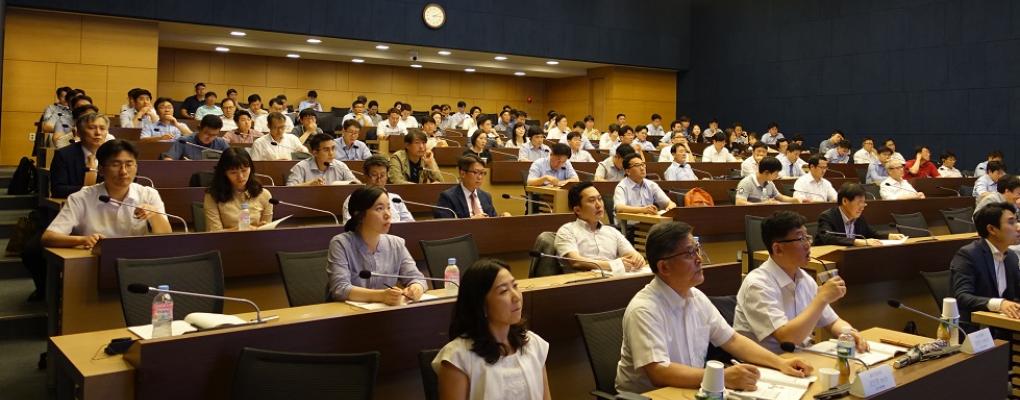
A new wave of Public Private Partnerships (PPP) market development has been emerging in Korea since the introduction of the APMG PPP Program Guide in Seoul in June 2016. Following the launch of the APMG PPP Training Program in January this year by P3 Korea, the first CP3P ATO in Asia, many institutional organizations including Central Government, have shown huge interest in whether PPP knowledge and capability can contribute to their future growth and strategic success.
In response to the growing interest in the PPP market and requests from various sectors, the: “PPP SEMINAR ON MAJOR ASIAN PPP MARKET AND BUSINESS ENVIRONMENT" was held in Korea, on 26 June 2017. The event which was the first of its kind in Korea, was held in the Korea Chamber of Commerce and Industry Conference Hall in Seoul.
The first and most important thing to mention is that the Ministry of Land, Infrastructure and Transport of Korean Government, is the official sponsor of this historic event. The key officer of the Ministry has expressed his appreciation of the event and has suggested visible support for its future development.
Approximately 150 delegates from a wide range of sectors, listened to enlightening speeches and presentations from four speakers, fellow Koreans and international visitors. APMG invited Euna Shim, a PPP Specialist from the Asian Development Bank (ADB), to attend the event. We were pleased to receive her gratitude for the rare opportunity to develop future business contacts in this global PPP arena.
Our vision is that P3Korea will be a powerful engine for PPP training, supporting the overall development of the global PPP industry.

Jae Sung Lee, President & CEO, P3Korea
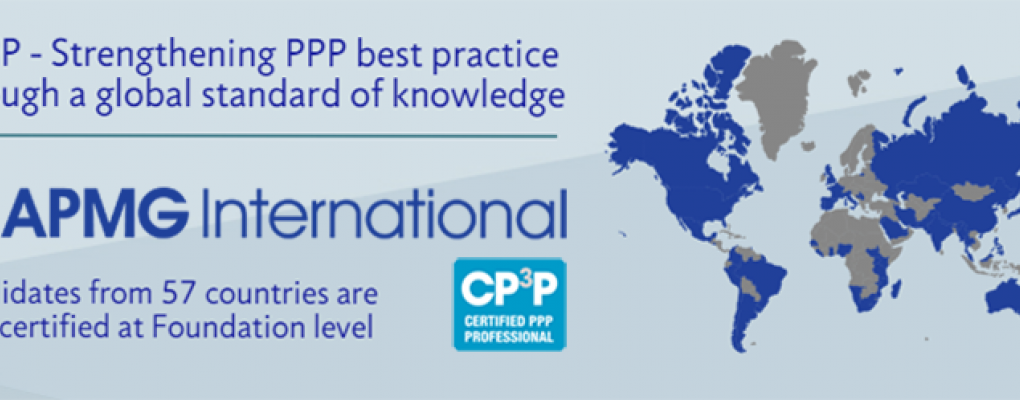
The Certified PPP Professional (CP3P) program continues to go from strength to strength since its launch in March 2016. Please find some of the key highlights to date detailed below:
- The increasing popularity of the scheme has resulted in PPP professionals from 57 countries around the world being certified at Foundation level
- A total of nine Accredited Training Organizations (ATOs) and four Affiliated Partners are now capable of delivering face-to-face training in support of the PPP Program. These are all subject to our industry renowned, rigorous assessment and surveillance procedures, designed to maintain the integrity and quality of CP3P training services they offer
- A number of the Multilateral Development Banks (MDBs) involved in supporting the scheme, have subsidised training for public sector workers in PPP communities in the regions in which they operate. These include: Serbia, Uganda, Rwanda, Kenya, Singapore and the US.
- Over 83,000 people have downloaded our PPP Certification Guide on which the certification is based
- French, Chinese and Latin American Spanish versions of the PPP Guide and exams are on schedule to be available by the end of 2017 to support the increasing global demand
- Foundation level exams are available at preferential rates through the World Bank Group, other MDBs and ATOs. PPP Units are eligible to apply for exam vouchers at preferential rates. For more information on obtaining exam vouchers at preferential rates, please contact partnerships@apmg-international.com

Helen Platt
Project Manager at APMG.

The Foundation level training, aimed at candidates from public sector institutions in Lesotho, was delivered in Maseru by Training Byte Size, an accredited training provider. Candidates from ministries and municipalities with a mixed skill set and experience level in delivering PPPs attended the course. Due to the various levels of understanding of the topic, the course is structured in such way that provided sufficient detail and understanding for the beginner level and also served as a refresher course for the candidates that have been involved in the PPP market for some time.
The training sessions were promoted in an interactive environment which included presentations and references to real PPP projects from across the world as well as exam simulations. The debates and discussions were very engaging as the local market already had an example of the PPP project running in Lesotho. Mixed skill sets allowed for various discussion topics including legal PPP framework in Lesotho, financial instruments used and the role of the public sector pre, during and post signature of the PPP agreement.
Contract management was one of the big topics discussed as many candidates acknowledged that the Value for Money is derived during the service period where monitoring of the delivery of services are closely related to the monetary value of the project.
Serah Njere Njoroge from World Bank Group said, “PPPs and private financing have the potential to increase access to infrastructure in Africa. PPIAF is currently supporting the government of Lesotho in the development of the PPP framework and building much needed capacity for PPP implementation. In June 2017, with support from PPIAF 20 government officials in Maseru, Lesotho were offered the PPP certification training. Participants were drawn from various ministries including Finance, Health, Works, Development Planning and Energy”.
The training has received very positive feedback from the candidates who also concluded that one of the big success factors was preparation before the course by reading through the available material and the guide published on the APMG site. As a stepping stone towards becoming a Certified PPP Professional (CP3P), the candidates successfully undertook Foundation exam at the end of the course.
Credits : Written by Irina Unkovski
Irina is a qualified Quantity Surveyor and holds a Master’s Degree in Building specializing in various Infrastructure Procurement Methods. She has more than 15 years of experience working with both Public and Private sector on various Infrastructure initiatives. Currently, Irina is with Deloitte South Africa, leading Corporate Finance Infrastructure Capital Project Team.

Irina Unkovski
Irina is a qualified Quantity Surveyor and holds a Master’s Degree in Building specializing in various Infrastructure Procurement Methods. She has more than 15 years of experience working with both Public and Private sector on various Infrastructure initiatives. Currently, Irina is with Deloitte South Africa, leading Corporate Finance Infrastructure Capital Project Team.
Irina has completed various consulting assignments mostly at National and Provincial Government levels specifically development of infrastructure on PPPs within transport, healthcare and commercial buildings. As a result she is familiar with various vehicles, which could be used in alternative service delivery, be it by National, Provincial or Local Government.
Currently, Irina is developing a methodology for Project Management of existing and operating PPPs which will assist government officials in successful delivery, as well as provide a tool for managing the PPP inception for both Transaction Advisors and government officials. She has been involved in projects of monitoring nature such as Gautrain, as well as assisting clients in the public sector with monitoring and assurance of the adjudication of tenders over R 30bn in value.

‘Direct procurement for customers’ (direct procurement for short) is a new delivery model for the regulated UK water sector, proposed by Ofwat (the UK water sector economic regulator) in December 2015[i]. Similar to PPP/P3, direct procurement is expected to drive value for customers by encouraging more competition in the sector, particularly in the financing and operation of water assets. Given this, water companies can apply existing frameworks such as the World Bank PPP/P3 methodology and the UK HM Treasury’s Better Business Case principles to help design, deliver and manage high-quality direct procurement schemes.
What is ‘direct procurement’?
Direct procurement requires UK water companies to consider long-term, DBFOM[ii] partnership arrangements for the delivery of large-scale assets. Ofwat’s guidance currently defines this as assets with a whole-life total expenditure of more than £100m. The final details of direct procurement, including the expenditure threshold, are currently under consultation, but Ofwat intends for it to come into force from 2020. Direct procurement may be applicable to a wide range of assets, from new reservoirs, to upgrades of existing treatment works and transfer pipelines.
Why has Ofwat introduced it?
By guiding companies to use direct procurement, Ofwat aims to introduce greater competition into the financing, delivery and operation of water assets. Ofwat hopes that direct procurement will deliver lower financing costs, based on the experience at the Thames Tideway (a major wastewater infrastructure programme currently underway in London, UK), where competition for financing led to an extremely low cost-of-capital. In addition, Ofwat believes direct procurement will introduce efficiencies into the water sector through:
1.Better allocation and management of risk;
- More focused long-term incentivisation and better value-driven trade-offs between opex and capex;
- Innovation: direct procurement investors are likely to have wide-ranging international and cross-sector experience – and therefore be able to bring new ideas;
- Greater clarity and certainty of costs and outcomes
Sound familiar?
PPP/P3 offers lessons for direct procurement
UK regulated water companies are privately owned and operated, and as such, direct procurement schemes will not be strictly public-private partnerships. However, direct procurement aims to bring more competition into the financing and operation of water assets through the creation of long-term partnership arrangements, much like PPP/P3 schemes in the public sector. As outlined above, the benefits Ofwat wishes to produce are very similar to those delivered by PPP/P3. Therefore, we believe that PPP/P3 experience offers many lessons that Ofwat and UK water companies can apply to direct procurement.
World Bank PPP/P3 framework and HM Treasury Better Business Case training will help water sector organisations deliver better direct procurement schemes
Direct procurement is significantly different to traditional models of asset delivery in the UK water sector. As a result the water industry are working to build experience and capacity in direct procurement-style models. Given the similarities between direct procurement and PPP/P3, the World Bank PPP/P3 framework will help water sector organisations understand how to design, implement and manage direct procurement schemes. Water companies can also apply HM Treasury’s Better Business Case principles to rigorously appraise and select the most appropriate schemes for direct procurement. We should expect demand for these skills to increase strongly in the UK water sector over the coming two to three years.
Water companies don’t need to ‘reinvent the wheel’ for direct procurement
Direct procurement represents a shift for how water companies design, deliver and operate water assets on behalf of their companies. Given this, delivering direct procurement will bring some challenges for the water industry. However, direct procurement shares many similarities with PPP/P3 which will be to the benefit of companies. For PPP/P3 there are existing frameworks to help companies select the most appropriate schemes and implement high-quality arrangements – such as the World Bank PPP/P3 framework and HM Treasury’s Better Business Cases guidance. Smart water companies will make the most of these existing frameworks to help them deliver high-performing direct procurement schemes. This will help direct procurement deliver Ofwat’s anticipated benefits, and change the UK water sector for the better.
Credits: Written by Will Nixon, Infrastructure Expert at PA Consulting and Mark Williams, Property and Infrastructure Lead / CP3P and BBC Trainer at PA Consulting.
[i] Water 2020: Regulatory framework for wholesale markets and the 2019 price review, Ofwat, 10 December 2015
[ii] Design-Build-Finance-Operate-Maintain

Mark Williams
Mark Williams, Director and Property & Infrastructure Lead at PA Consulting and member of CIPFA's Governments Faculty Board - specializes in providing financial and commercial advice on a range of complex contract PPP/PFI savings projects across defence, transport, education and health.

The problem with any new or rebranded methodology is that every consultancy rebadges its consultants to demonstrate they have significant track record in this particular discipline and are therefore should be the advisor of choice when you want to access the professional skills. Business Process Re-engineering (BPR) was one such methodology, I remember having to sit through a seminar at a large global consultancy where the new BPR methodology was explained, and I was told how all my previous work on my CV needed to be rebadged as BPR! However, time moves on, and I accept that badging and branding changes.
Unfortunately, PPP (Public Private Partnerships) suffered from this behaviour and as the awareness of something called PPP grew, true to form, consultancies identifying a new pot of gold started to rebrand their consultants. It is amazing that according to CVs, Linked-in etc, with relatively few procurements internationally badged as a PPP (a few thousand at most) compared to the overall number of project based contracts signed every year that literally thousands of consultants appear to have been involved specifically on a PPP project.
In many cases, because understanding was limited, all procurements that included outsourcing were rebadged and rebranded as PPP. This has proven to be a major pitfall in the effective development of PPP.
It also appears that despite every possible international definition of PPP specifically excluding privatisation from the scope of PPP there are those that still think it is part of the PPP spectrum of government partnering – after all isn’t privatisation about the private sector taking on public sector services!
This approach to rebadging consultants has had one of two impacts. Either consultants
- have continued to undertake traditional outsourcing and procurement projects and said that they are PPPs, or
- have taken an existing PPP best practice manual from one country and copied and pasted into a new manual for another. In turn, the “new” manual will be copied by the same or another set of consultants and adopted by another country.
This has happened without any tailoring or understanding of PPP or the specific environment and needs of the country.
I have heard presenters at conferences explaining why PPP has not worked for them, only to learn that the “PPP” projects referred to have few or no characteristics of a PPP and that the consultants used clearly had little knowledge or experience of PPP projects.
The clamour to undertake something called PPP and the potential to earn a living had created an environment of confusion, continual reinvention of the wheel and, nugatory cost to the public sector and international agencies alike. However, by taking the lead in developing the CP3P curriculum the World Bank through APMG has developed a tool that puts an end to this confusion.
The team that has developed the curriculum must be congratulated as they have had to identify best practice from across the world, and then separate the generic (principles that can be applied everywhere) from the specific (something that may work well in a particular or limited location). They have done this whilst at the same time creating a common global language for all. Thus, enabling conversations to take place that are meaningful between all parties without the confusion that has existed to date.
The team has created a compendium of learning and understanding that can be accessed at a high or detailed level by PPP practitioners, the private sector, third sector, politicians and at a high level by others who need to have sufficient knowledge to be engaged and to ask the right questions, when
- procuring consultants,
- devising a PPP framework,
- taking a view on whether a project will work well as a PPP or
- undertaking a PPP project.
Together with the generic approach (with specific options and ideas), the curriculum accesses important case studies that support the learning and identifies tools that can be used.
Therefor we now have a truly global framework with common concepts and approaches that can support public servants, lawyers and financiers as well as procurement and project consultants and commercial professional that want to undertake PPP work. Not every PPP will be successful but this is a great curriculum that provides knowledge that is required to maximise the opportunity for success and deliver effective - sustainable, bankable, affordable and value for money - public private partnerships.

Maurice Diamond
Maurice is a Fellow of the Institute of Public Finance and Accountancy and has a degree in Economics and Public Administration. Maurice has worked on PPP and its UK variant, PFI, since its inception. He has over 25 years PPP experience and was on the PwC Board that worked with the UK Government to develop and launch best practice.
As a consultant at PA Consulting, Maurice was the technical lead on the complex procurements interest group where he continued to develop and contribute to PPP best practice. He was also asked to review existing PPP contracts and feasibility studies on behalf of government clients in the UK and Middle East.

The universal discourse around the issue of infrastructure deficit within Emerging Markets and Developing Economies (EMDE) has gained considerable traction, particularly over the last few decades. The ability to attract financial investments in developing economies, and particularly in Africa, has proved daunting mainly as a result of insufficient infrastructure. However, infrastructure in itself is an investment which has equally proved daunting for governments in such countries to undertake, given the sheer financial and technical requirements.[1]
Indeed, Africa’s absolute and relative lack of infrastructure points to the existence of untapped productive potential, which could be unlocked through scaling up investments in the sector.[2] According to a recent report issued by the World Bank[3], sub-Saharan Africa lags other developing regions in virtually all dimensions of infrastructure performance. Efforts to track and address some of the germane causes to the global infrastructure imbalance between developed and less-developed economies have resulted in some commendable reforms to institutional and legal Public-Private Partnership (PPP) frameworks across many EMDEs. And though advances in reforms during recent years are impressive, they have yet to commensurately translate to the desired private sector financial investment in infrastructure, owing partly to the weaknesses in the capacity and processes to deliver PPPs within these frameworks.
The concept of private participation in public sector infrastructure projects has been in existence for centuries. Research reveals that the Brooklyn Bridge in New York City was built with private sector capital as far back as 1883.[4] Since then, and especially from the 20th century, PPP, as a model for delivering and managing public infrastructure projects, has developed and refined in scope and practice. Much of government motivations for private sector participation – private sector finance and efficiency – have guided the use and preference for PPPs in both developed and emerging markets and have given rise to initiatives to stimulate private parties to invest their resources in public infrastructure. But in a growing number of cases, especially within developing economies, the optimism accompanying the choice of PPPs is often dashed either by the public sector’s inability to develop sufficient pipeline of bankable projects or by project failures due, substantially, to distorted understanding or application of PPP solutions.
PPP expertise is not readily available within the public sector, predominantly amongst developing countries.[5] This lack of adequate public sector capacity and experience has blighted many otherwise promising PPPs across EMDE. Furthermore, innumerable data indicate that inadequate capacity is the foremost intangible constraint to the public sector’s ability to respond to the demands of preparing and delivering successful PPP projects in emerging market economies. The private sector is almost always several notches ahead of the public sector when negotiating PPP arrangements and contracts[6], which often leads to the question of loss of value for money for the public sector.[7] As noted in The Farrell Review on Public Service,[8] “the widening skills gap between the public and private sectors is as much about the quality and type of expertise than the quantity of staff”. To further underscore this point, the Review noted that, “it is the people rather than the policies that make the biggest difference at a local level. Crudely put, good people can work round bad polices but good policies cannot work round bad people”[9]. The forgoing reasoning is extremely logical because PPPs, by their nature, require special skill sets that are distinct from the conventional skills usually available within public sector project teams. Governments seeking to realise their potentials to deliver economic growth through PPPs must therefore adopt a proactive and systematic approach to equipping relevant public officials.
A more subtle challenge with regards to delivering successful PPPs, however, lies within the theory of PPP in itself. For example, given the differing definitions and processes attributed to PPP by various institutions and resources, PPPs have come to invariably mean different things to different people. Consequently, governments sometimes embark on PPPs without due regard to jurisdictional nuances, leading to complications or associated project failures. The consequence of this misunderstanding of PPPs and misapplication of the PPP processes is often under emphasized when analysing the capacity gaps within PPP project teams. But it is conceivable that the asymmetries between private and public sector capacity, together with the distortions in understanding and applying the PPP solutions are risks which are almost impossible to hedge. This thought process considerably informed the development of the APMG-Certified Public-Private Partnership Professional (CP3P) Body of Knowledge (BoK), as the CP3P program aims to adequately equip PPP teams with the necessary understanding and create a consistency of terms, as well as a common PPP approach for PPP practitioners world-wide.
As PPP arrangements steadily gain momentum within African countries, and with governments in Africa, and other emerging market economy countries, increasingly adopting it as a model for the procurement of infrastructure facilities and related services, the CP3P provides an effective pathway to sustainable project success. The CP3P is even more relevant for countries contemplating PPPs or where PPPs are at the cradle stage. As aptly stated by the United Nations Economic Commission for Europe, (UNECE), “knowledge gap leads to the use of business proposals put forward by private companies that are ‘unsolicited’ by the public sector and which is not desirable as a method of (or reason for) launching a PPP”[10]. Moreover, since it is the government, and not the private sector, that “fixes the parameters in which the partnership is formed”[11], the government must take responsibility for equipping its PPP project teams with the capabilities to, at least, match those of the private sector partner. Simply put, equipping public sector project teams with the CP3P is tantamount to reassuring the potential private sector partner of the existence, within the public sector, of the specialist knowledge to assess and develop a business case for PPP projects; including the capability to structure, implement and manage PPP projects to successful completion.
Given the endorsement of the CP3P program by the World Bank and other multilateral partners, such reassurance is more certain to activate the attention and finance of the private sector to public infrastructure projects and services. The World Bank reports[12] that growth in the EMDEs is projected to reach 4.1 percent in 2017 and 4.5 percent in 2018, buoyed, amongst others, by infrastructure, stabilizing investment, and improving confidence. The CP3P provides a veritable springboard for actualizing the region’s projected economic growth, by retooling project teams and, in effect, boosting private sector confidence to undertake the necessary investments in infrastructure.
[1] In Nigeria, for instance, a ball-park estimation of the amount of investment required to expand energy generation capacity from 10 000 MW to 30 000 MW is between USD 25 and USD 30 billion. Anyanwu, J. C. (2009) ‘Public-private Partnerships in the Nigerian Energy Sector: Banks Roles and Lessons of Experience,’ in Tobin, J. B. and Parker, L. R. (eds) Joint Ventures, Mergers and Acquisitions, and Capital Flow. Nova Science Publishers, New York.
[2]African Development Bank. (2010, Sept.). Infrastructure Deficit and Opportunities in Africa. Retrieved from https://www.afdb.org/fileadmin/uploads/afdb/Documents/Publications/ECON%20Brief_Infrastructure%20Deficit%20and%20Opportunities%20in%20Africa_Vol%201%20Issue%202.pdf
[3] World Bank. (2017, April). An analysis of issues shaping Africa’s economic future. Retrieved from http://documents.worldbank.org/curated/en/348741492463112162/pdf/114375-REVISED-4-18-PMWB-AfricasPulse-Sping2017-vol15-ENGLISH-FINAL-web.pdf.
[4] Earlier use of Concession in France in 1782 has been reported. See McCarthy, S. and Perry J, (1989) BOT Contracts for Water Supply. London: World Water.
[5] See Herbert Robinson, Patricia Carrillo, Chimay J. Anumba, Manju Pate. (2010) Governance and Knowledge Management for Public-Private Partnerships. Wiley-Blackwell, U.K
[6] The Central Electric Authority (CEA) Report on India’s Dabhol Power Project stated in part that the “entire MOU was one-sided”. See Abhay Mehta (2000) Power Play: A Study of the Enron Project, p.28.
[7] One of the main reasons for cancelling the Dabhol Power Plant Project in Maharashtra, India was due to the overwhelming capacity of the private sector partner which resulted in the contract being greatly tilted in favour of the private sector partner.
[8] Finn Williams, (2015). Available at http://www.farrellreview.co.uk/_downloads/champions/Public_Service.pdf
[9] The Farrell Review. 2014, p.149
[10] UNECE (2012) Introduction to Public-Private Partnerships: Can public-private partnerships improve infrastructure and deliver better public services, p.6. Retrieved from https://www.unece.org/fileadmin/DAM/ceci/images/ICoE/Introductionppp.pdf.
[11] Id. at p. 21
[12] World Bank. (2017, June). Global Economic Prospects: A Fragile Recovery. Retrieved from https://openknowledge.worldbank.org/bitstream/handle/10986/26800/9781464810244.pdf

Attorney Michael Uwaechie
Attorney Michael Uwaechie is a Director at Weircapacity Limited, Nigeria, where he heads the firm’s training and Public-private Partnership (PPP) unit. He has advised on various PPP projects Africa and is specialized in designing the PPP Institutional, Legal and Regulatory Frameworks. Michael has been accredited by APMG, U.K as a CP3P (Foundation) trainer and routinely delivers capacity building courses on PPPs.

A significant number of government and business leaders across Africa have come to accept the benefits of Public Private Partnerships as a strategic option, an alternative procurement and financial structuring methodology. An increasing number of African countries are developing PPP policies supported by a PPP framework that typically reflects on the required institutions, procedures, and rules stating how PPPs will be implemented in that country. PPP Units are being established whilst staff dealing with the regulatory and or technical advisory services are being appointed and upskilled.
International, Regional and National Development Finance Institutions are gearing up to support country governments in developing significant pipelines. The African private sector seemingly is slow in tracking these new developments whilst detractors, government and or private sector sceptics are sitting on the side-line.
What will it take to enhance infrastructure and services on the African Continent and can PPPs significantly contribute to address the infrastructure and service delivery backlogs? The NEPAD Business Foundation (NBF) a Johannesburg based NGO and an APMG Accredited Training Organisation suggest that:
- Governments should at least use the relevant PPP principles i.e. life cycle cost consideration to improve its decision making regarding major project procurement. Using these principles will enhance the governments long term integrated financial planning and budget processes required as well as highlight the significant contingent liabilities should the PPP option be utilised.
- Government project teams should be aware of the conditions of project preparation funds that may favour traditional procurement methodologies. These benefactors also typically negotiate/require that they provide a significant portion if not 100% of the required balance sheet based finance. It should also be noted that the World Bank in a recent publication “Easing the Transition to Commercial Finance for Sustainable Water and Sanitation” August 2017 paved the way for increased participation by commercial financiers.
- Consideration and application of sustainability imperatives starting at the pre-feasibility and options analysis phases and incorporating it across the entire life cycle of the project to deliver optimal results. We are specifically referring to the exceptional work done by the UK water utility company, Anglian Water in successfully managing its significant carbon footprint and correlating operational costs. “HM Treasury Infrastructure Carbon Review, November 2013”.
- Government departments and or its utilities should empower their decision makers and the key project team members to be able to;
- Find and contract, if required, with a suitable project preparation facility
- Procure an external transaction advisory (TA), team
- Properly interact and instruct the TAs from a position of strength
- Appoint a winning bidder through a regulated and competitive process with the support of the TA
- Monitor and manage the construction- and the operations up to hand back phase.
African governments cannot afford utilising the well-meant TA support from IFIs whilst the project team is not fully empowered. This capacity building need to take place well in advance and probably represent a very first step once the decision to consider PPPs as an alternative procurement methodology has been taken.
The NBF since its accreditation during February 2017 successfully trained government and private sector PPP practitioners thereby supporting the development and structuring of viable and sustainable infrastructure and service delivery projects in Africa. Andre Kruger reports that the NBF has trained:
- Government PPP practitioners from National, Regional and local governments, State Owned Companies. A great focus was placed on electricity generation, transmission and distribution PPPs whilst water and sanitation PPP focus was probably the second most requested topic
- Private sector PPP practitioners represented construction, consulting engineering companies, lawyers and bankers.
The NBF is planning its next general PPP training event in Johannesburg on 24-25 October 2017. November 2017 will see the NBF presenting a training event in Tanzania and from February 2018, monthly training events across Africa.
André Kruger, Lead Trainer
The NEPAD Business Foundation, An Accredited Training Organization of APMG International

Andre Kruger
Mr Kruger, with a career in banking, has been working for Barclays Africa and the banking industry for a period of 30+ years. He specialised in infrastructure finance and public private partnerships and is a passionate proponent of increased private sector participation in the delivery of services to the communities.
Mr Kruger is the Nepad Business Foundation, program manager for the Africa Investment and Integration Desk (AVID). He currently actively market and deliver the internationally accredited Certified PPP Professional Training course program across the African continent. The NBF and Mr Kruger has been accredited to deliver the World Bank designed program, accredited by APMG.

It was announced today at the 3rd China PPP Financing Forum that World Bank Group (WBG) and China Public Private Partnerships Centre (CPPPC) signed a Memorandum of Understanding (MOU) stating that both parties will work together regarding PPPs and promoting APMGs PPP Certification Program CP3P in China.
CPPPC will be responsible for the policy research, consultancy and training, capacity building, financial support and informational cooperation related to public-private partnerships (PPPs). CPPPC aims to develop cooperation and communication of best practices with respect to PPP work with international organisations and institutions. It plans to do so by promoting WBGs PPP Certification Program in China that is delivered by APMG.
The World Bank Group (WBG) along with Multilateral Development Banks (MDBs) - the Asian Development bank (ADB), the European Bank for Reconstruction and Development (EBRD), the Inter-American Development Bank (IDB), the Islamic Development Bank (IsDB) and the Multilateral Investment Fund (MIF) have contributed towards developing the PPP Certification Program with part funding from the Public-Private Infrastructure Advisory Facility (PPIAF).
The APMG PPP Certification Program aims to foster a common knowledge and understanding amongst individuals working on PPPs. The PPP Certification Program Guide, which is the core of the Certification Program, has been authored by a team of international experts working in the PPP sector. This is a free, easy to download PPP Guide and essential reading material for those studying for the CP3P certification program.
This Certification Program involves three stages to help professionals within the PPP industry to achieve the CP3P credential; Foundation, Preparation and Execution exam.
“The guidance incorporated into the PPP Certification Program will be invaluable in increasing the breadth of dependable, qualified PPP practitioners in China. It’s impeccable timing for the MOU as China continues to invest in infrastructure and healthcare. I’m confident that China will become the benchmark for the successful delivery of PPPs,” says Richard Pharro, CEO, APMG International.
The MOU coincides with APMG’s announcement that the PPP Certification Program’s Preparation exam are now available. The Preparation Level builds on the program’s Foundation Level and is aimed at candidates looking to further progress their PPP careers. Candidates can choose to self-study or go on a training course with one of APMG’s Accredited Training Organisations (ATOs). Training courses are available in 61 countries.
For more information on the WBG/APMG PPP Certification Program visit https://ppp-certification.com/
About APMG International
APMG International is an award-winning, global examination institute that offers a broad portfolio of professional certifications for knowledge-based workers. APMG certifications are designed to provide professional career development for individuals, equipping them with the skills, knowledge, tools and techniques to help them and their organizations perform more effectively.
In addition, APMG provides accreditation services for individuals and organisations around the world that provide high quality training and consultancy services in support of our certifications.
Committed to quality, APMG’s certification and accreditation processes are developed and managed in accordance with a robust quality management system accredited by the United Kingdom Accreditation Service (UKAS). www.apmg-international.com

Shruti Deshpande
Marketing Campaign Manager, APMG

The much-awaited Preparation exam for APMG’s PPP Certification Program was launched today at the Regional Round Tables on Infrastructure Governance, in Cape Town, South Africa.
The Preparation exam is the first of the two higher level exams which enables PPP practitioners to demonstrate a higher level of understanding and experience in the field of PPPs. APMG’s PPP Certification Programme aims to strengthen PPP best practice through a global standard of knowledge. After passing the Foundation level exam, candidates can study further by taking the Preparation exam or the Execution exam which is due to be launched in 2018. Candidates that pass all three examinations will be entitled to use the Certified Public-Private Partnerships Professional (CP3P) credential.
About the Preparation exam
The Preparation exam is based on chapters 2 to 5 of the PPP Certification Guide and will test a candidate’s understanding of the PPP framework and application on PPP Project Identification, Screening, Appraisal and Preparation Processes in a given governmental context.
The exam is based on a fictional infrastructure PPP scenario and candidates will be required to apply their knowledge of the PPP Guide to the given situation. Candidates will be tested by a 2.5 hour complex multiple-choice exam with a pass mark of 50%. A pass on the Foundation exam is a prerequisite for the Preparation exam. A sample exam paper will be provided to candidates that register to take this exam.
Target audience for the Preparation exam
This exam is suitable for those involved in the development or implementation of Public-Private Partnership frameworks or the initiation and preparation of PPP projects. Public sector officials and PPP practitioners, as well as their advisors and consultants will find the exam beneficial to enhance their delivery of PPPs.
The private sector will also have an interest in this certification to better understand the PPP concept as an asset/business opportunity, government objectives and institutional arrangements.
Getting certified
Candidates will be able to take the exam at the end of an accredited training course via APMG’s network of Accredited training organisations (ATOs). A training course is typically five days long and includes time for candidates to sit the Preparation exam.
Candidates can also self -study by downloading chapters 2 to 5 of the PPP Guide prior to taking the Preparation exam.
The other higher-level exam of the Certification Program, Execution, is due to be launched in 2018. Candidates who successfully pass all three exams will be awarded the CP3P credential.
For more information contact the APMG PPP team via email partnerships@apmg-international.com or visit www.ppp-certification.com
About APMG International
APMG International is an award-winning, global examination institute that offers a broad portfolio of professional certifications for knowledge-based workers. APMG certifications are designed to provide professional career development for individuals, equipping them with the skills, knowledge, tools and techniques to help them and their organizations perform more effectively.
In addition, APMG provides accreditation services for individuals and organisations around the world that provide high quality training and consultancy services in support of our certifications.
Committed to quality, APMG’s certification and accreditation processes are developed and managed in accordance with a robust quality management system accredited by the United Kingdom Accreditation Service (UKAS). www.apmg-international.com

Shruti Deshpande
Marketing Campaign Manager, APMG

The PPP Certification Guide, a key reading material for APMG’s PPP Certification Program is now available in Spanish and in English. Candidates can download this PPP Guide by clicking on the ‘Download PPP GUIDE for FREE’ button on the PPP certification website.
This PPP Guide is a FREE downloadable resource to help candidates prepare for the PPP Certification Program. Two levels of the this three-tiered program are now released, Foundation and Preparation.
Candidates can self-study for this exam or can undertake training via 17 Accredited training Organisations (ATOs) worldwide.
For more information contact the APMG PPP team via email partnerships@apmg-international.com or visit https://ppp-certification.com.
About APMG International
APMG International is an award-winning, global examination institute that offers a broad portfolio of professional certifications for knowledge-based workers. APMG certifications are designed to provide professional career development for individuals, equipping them with the skills, knowledge, tools and techniques to help them and their organizations perform more effectively.
In addition, APMG provides accreditation services for individuals and organisations around the world that provide high quality training and consultancy services in support of our certifications.
Committed to quality, APMG’s certification and accreditation processes are developed and managed in accordance with a robust quality management system accredited by the United Kingdom Accreditation Service (UKAS). www.apmg-international.com

Shruti Deshpande
Marketing Campaign Manager, APMG

The PPP Certification Guide, a key reading material for APMG’s PPP Certification Program, is now available in Chinese. The PPP Guide is already available in Latin-American Spanish and English. Candidates can download this PPP Guide by clicking on the ‘Download PPP GUIDE for FREE’ button on the PPP certification website. To access the chapter 1 of the PPP Guide in Chinese click here.
This PPP Guide is a FREE downloadable resource to help candidates prepare for the PPP Certification Program. Two levels of this three-tiered program are now released, Foundation and Preparation, with the third exam, Execution, due in the next few months. More information on the certifications can be found here.
The Foundation exam is also being translated into Chinese, allowing candidates to take the exam in their local language as well. Availability of the translated exam will be announced in due course.
Candidates can self-study for this exam or can undertake trainings via 18 Accredited Training Organisations (ATOs).
For more information contact the APMG PPP team via email or visit www.ppp-certification.com.
About APMG International
APMG International is an award-winning, global examination institute that offers a broad portfolio of professional certifications for knowledge-based workers. APMG certifications are designed to provide professional career development for individuals, equipping them with the skills, knowledge, tools and techniques to help them and their organizations perform more effectively.
In addition, APMG provides accreditation services for individuals and organisations around the world that provide high quality training and consultancy services in support of our certifications.
Committed to quality, APMG’s certification and accreditation processes are developed and managed in accordance with a robust quality management system accredited by the United Kingdom Accreditation Service (UKAS). www.apmg-international.com

Shruti Deshpande
Marketing Campaign Manager, APMG

Matthew Perna is a PPP practitioner and one of our first successful APMG PPP Certification Program’s Preparation Exam candidate. We caught up with Matthew Perna to understand his PPP journey and how the PPP Certification Program adds value to his career. Matthew Perna is currently the president of Primer Construction Corp - a general contractor, constructing government projects in the NYC area, and Primer Construction Management Corp, which provides PPP consulting services, including construction risk analysis through site inspections and schedule analysis.
APMG: What first prompted you to get started in public private partnerships?
MP: Governments around the world are experiencing increasing demand for improved infrastructure. As they do not have the fiscal availability to invest in all projects, an alternate means of funding is required. We have created a company positioned to assist stakeholders in the analysis of PPP deals, utilizing our construction experience and finance experience. Prior to working in construction, I spent eight years working in finance as a portfolio manager and trader of securitized bonds. In this capacity, I performed credit analysis on individual deals and analysed the portfolio versus benchmarks. With college bachelor’s degrees in both finance and engineering and a masters degree in financial engineering, I was educated in both areas. Hence this felt like a natural progression.
APMG: Can you please give us a background on your (PPP) job role emphasising on the PPP sector that it is related to.
MP: I am the president of Primer Construction Corp, a general construction company that has been constructing municipal projects for over thirty years, including bridges, wastewater plants, parks, and roads. Primer Construction Management Corp is a consulting company that specializes in construction risks and performs analysis and site inspections to update and help mitigate.
APMG: What prompted you to get certified, how did you hear about APMG’s PPP certification program?
MP: As we see PPP projects as the future of construction due to financing needs and the expertise required, we wanted to have the certifications in this area to learn, as well as document our skills. To date, I have obtained my professional engineering license, project management professional certification (PMI PMP), and 6 Sigma Lean Black Belt certification. In researching all available PPP certifications on the internet, I located APMG’s program.
APMG: Take us through your thought process while deciding to get certified.
MP: Working in the construction industry, I have seen that performing work duties alone does not provide the necessary education required to advance. There are many aspects of the work that must be considered at all times. I wanted to become certified in order to have a consistent framework to utilize.
APMG: Why did you choose APMG’s PPP certification program and how did it help?
MP: APMG’s PPP certification program is the most comprehensive program that I have located. The program exams are modelled after the certification guide, which can be studied from and also be used as a reference guide while practicing. Other programs require individual courses and you would have to create your own guide, which would vary from other participants.
APMG: What are your key strengths and how have you used them in your current PPP role?
MP: I am excellent at multi-tasking, which makes me a great project manager. Being able to see the larger picture, I assist on everyday construction issues that arise, but ultimately focus on the project as a whole. My financial skills are very strong as well, from my education and previous experience managing billions of dollars for clients.
APMG: What factors of your role as a PPP practitioner are easy?
MP: While I would not consider any parts of being a PPP practitioner easy, there are certainly easier stuff to deal with than others. When projects happen according to plan, being a PPP practitioner can be easy. However as projects progress, there are numerous challenges to deal with; it is the preparation about how to deal with the unknown, what to do, and being agile that makes the job more challenging. Experience and a good framework to work with are very important.
APMG: What characteristics and skills do you think make a better PPP professional or a successful one?
MP: Having a good understanding of all aspects of PPP is extremely important. The combination of project management skills, knowledge of all PPP aspects, and experience make successful PPP professionals. Keeping informed of new developments in the area is important to remain successful.
APMG: What is next in line for you, how are you planning to utilise the knowledge gathered from doing the Foundations and Preparation exams of this PPP Certification Program?
MP: We are looking to further develop Primer Construction Management Corp and increase our consulting business to assist more PPP’s.
APMG: What is your advice for new comers or other PPP practitioners on helping deliver successful projects in the PPP world?
MP: Obtaining project management skills, analysing PPP projects and case studies, and obtaining APMG’s PPP certifications would help deliver successful projects in the PPP world.
ENDS

Shruti Deshpande
Marketing Campaign Manager, APMG

The third and final exam within APMG’s PPP Certification Program will be available soon. The Foundation and Preparation exams are already available, giving individuals the opportunity to demonstrate, through passing the Foundation exam, that they have a good knowledge of the PPP process and terminology as described in chapter 1 of the PPP Certification Guide. Individuals who have gone on to pass the Preparation exam have demonstrated an understanding of how to apply and tailor processes, roles and responsibilities to determine how the government selects implements and manages PPP projects, as described in chapters 2 to 5 of the PPP Guide.
The purpose of the Execution certification is to confirm whether the candidate has achieved sufficient understanding of how to apply the structuring & drafting process of PPP tender documents and the PPP contract, the tendering and awarding of PPP contracts, and the management of PPP contracts during the Construction and Operations Phases.
The Execution exam will be based on chapters 5 to 8 of the PPP Certification Guide and will have the same format as the Preparation exam. Therefore, the exam will be based on a fictional scenario, be 2½ hours in duration, will have 4 main questions each worth 20 marks and the pass mark will be 40 out of a possible 80 marks. As with the Preparation exam, candidates will be permitted to refer to the PPP Certification Guide during the examination.
All candidates must have already passed the Foundation exam to be eligible to sit the Execution exam. Candidates may wish to only take one of the two higher level exams (whichever is most relevant to their role), therefore it is not mandatory to have passed both the Foundation and Preparation exams before taking the Execution exam. However, to get a holistic understanding of the PPP process cycle, we recommend that all three exams are taken.
The target audience for the Execution exam is individuals who are involved in the structuring & tendering of PPP projects, and the management of PPP contracts. This will mostly be public sector officials and practitioners and their advisors and consultants. However, individuals from the private sector will also be interested.
Candidates will, once again, have the option of downloading the PPP Guide for free and studying chapters 5 to 8 in preparation for taking the exam online directly with APMG. Alternatively, our existing network of Accredited Training Organisations will be adding this course to their portfolio and will offer the Execution training course and exams to individuals around the world. The recommendation course duration is 5 days, but please check the full details with the course provider before booking.
Sign up to our newsletter for more updates on this.

Helen Platt
Project Manager at APMG.

The PPP Certification Guide, a key reading material for APMG’s PPP Certification Program, is now available in French. The FREE to download PPP Guide is already available in Latin-American Spanish, Chinese and English. To access the chapter 1 of the PPP Guide in French click here.
This PPP Guide is a FREE downloadable resource to help candidates prepare for the PPP Certification Program. Two levels of this three-tiered program are now released, Foundation and Preparation, with the third exam, Execution, due in the next few weeks. More information on the certification can be found here.
The Foundation exam is also available in French, making the certification accessible to more PPP practitioners worldwide. Availability of the translated exam for the Preparation and Execution levels will be announced in due course.
Candidates can self-study for this exam or can undertake training via 18 Accredited Training Organisations (ATOs). For more information contact the APMG PPP team via email partnerships@apmg-international.com or visit the website www.ppp-certification.com
About APMG International
APMG International is an award-winning, global examination institute that offers a broad portfolio of professional certifications for knowledge-based workers. APMG certifications are designed to provide professional career development for individuals, equipping them with the skills, knowledge, tools and techniques to help them and their organizations perform more effectively.
In addition, APMG provides accreditation services for individuals and organisations around the world that provide high quality training and consultancy services in support of our certifications.
Committed to quality, APMG’s certification and accreditation processes are developed and managed in accordance with a robust quality management system accredited by the United Kingdom Accreditation Service (UKAS). www.apmg-international.com

Shruti Deshpande
Marketing Campaign Manager, APMG

APMG had the opportunity to chat with first ever successful candidates to have completed the Preparation exam of APMG’s PPP Certification course from our ATO in Korea - P3Korea, thus getting closer to achieving the coveted CP3P credential. Find out more about their experience and how they intend to use their knowledge in advancing their professional life.
Here we have, Ms. Joo Eun (Jener) Jeung, a specialist in Project Financing and Vice President of Sumitomo Mitsui Banking Corporation, Seoul, Korea, and Mr Jon-Il Eum, Director of Dong - A Steel technology Company Ltd.
1. What's your future dream as a certified PPP expert?
Joo Eun (Jener) Jeung
After passing the Preparation exam of APMG’s PPP Certification program, I feel that I would like to continue the study of PPP, especially in relation to ethical investment / ESG standard and climate change. I am interested in these areas because Sustainable Development is an important agenda in our world today and because I believe PPP plays a role in these areas. In the long term, I’d like to work in providing PPP and project finance education to help produce the next generation of PPP experts who would together achieve Sustainable Development of the world through their projects.
Jong -Il Eum
When I decided to study the PPP Guide and further take the PPP exams, I assumed several scenarios for my future career i.e. to get a job in an international organization or multi-lateral development bank such as PPIAF, ADB, etc, or to remain employed in a private company as a PPP business development specialist. As I’ve proceeded with this program, I became more interested in the former scenario. The process of studying and taking a PPP specific course and exam has helped me gain a better understanding of how best I can implement it in my professional life.
2. Give us some thoughts into how you prepared and passed the PPP Preparation Exam?
Joo Eun (Jener) Jeung
I studied the APMG PPP Certification Guide which is an essential material for the exam. Attending classes at an ATO (P3Korea) was also very helpful for me. In addition, personally I was able to draw on my real-life experience as a PPP practitioner and to consolidate my knowledge based on such experience plus the written study materials.
Jong -Il Eum
As simple as it would be, no guaranteed or royal way to succeed in the exam. I tried not to just read but to understand the implied meaning of various concepts in the text books. I recommend candidates who want to pass the exam to invest significant amount of time and effort in researching and referring to relevant data during the preparation for both Foundation and the Preparation exams. It will be of great help.
3. What do you expect from the network of the international CP3P community once you have established yourself?
Joo Eun (Jener) Jeung
I think it would be helpful if the community members can share their experience (to the extent permitted by their confidentiality obligation, of course) in a particular country or sector, among themselves (on one-to-one basis, or through case study articles / seminars), so that members can keep expanding their PPP knowledge by mutual cooperation and apply such expanded knowledge towards resolving difficult problems and successfully closing their live projects.
Jong -Il Eum
I expect the so-called CP3P Community to play an important role in developing infrastructure worldwide, especially in EMDE countries, as a specialized entity equipped with PPP expertise. Also, it could be a core communication path between the ones who want to develop, who want to finance and who want to construct.
4. Do you think PPP knowledge and practice could be important resources for the development of infrastructure in EMDE countries?
Joo Eun (Jener) Jeung
Absolutely. Particularly, in view of the high demand for new infrastructure in EMDE countries that is forecast for the coming decades, I think it is essential to develop well-trained PPP professionals in sufficient numbers in order to prepare and execute the projects in pipeline successfully. Therefore, the role of CP3P training and certification in fulfilling the infrastructure development goal of EMDE countries around the world would be very important.
Jong -Il Eum
Yes, I agree that the PPP knowledge and its practice is key to the development of infrastructure in EMDE countries. It is especially in these EMDE countries that governments find it difficult to secure necessary funding and match it to the ever-increasing infrastructure needs. Considering the dynamic economic growth in EMDE countries, the need for new infrastructure often grows exponentially but possibly without enough funding source. PPP could be an excellent substitute for the traditional tax-funded procurement and the governments should be well prepared with PPP knowledge for success.
5. What would you recommend aspiring PPP Professionals regarding APMG’s PPP Certification Program?
Joo Eun (Jener) Jeung
Given the forecast demand for new infrastructure as mentioned above, I think the CP3P certification has been introduced at an appropriate time and that it would be a highly relevant qualification for many years in the global PPP market. Therefore, I would recommend aspiring PPP professionals to make the effort to obtain this valuable certification. In my opinion, the PPP knowledge would be beneficial especially to government officials in countries with little PPP experience but ambitious infrastructure development programs.
Jong -Il Eum
We are in the middle of a transition period, I believe, from the long-lasting design-bid-build practice to a more innovative and flexible procurement system, PPP. Currently PPP occupies about twenty-five (25) per cent of overall global infrastructure projects and it has the potential to surely grow to a significantly higher level. It’s the right time to get involved in this CP3P program.
ENDS
You can find more information about P3Korea on their website www.p3korea.com
For more information on the PPP Certification Program Guide click here
For more information on the PPP Certification Program click here.

Shruti Deshpande
Marketing Campaign Manager, APMG
Since its launch in June 2016, APMG's PPP Certification Program has grown by leaps and bounds. This infographic provides a visual summary of the certification program so far. (As of 31 January 2018)
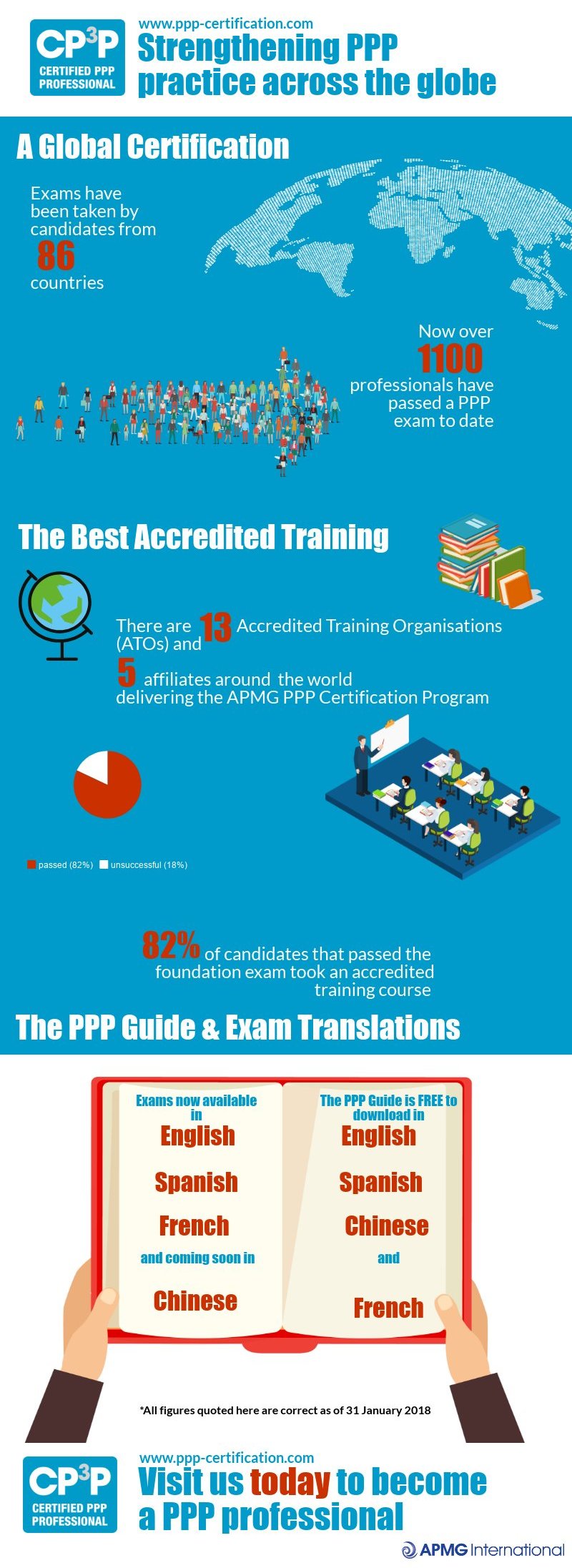

Shruti Deshpande
Marketing Campaign Manager, APMG

The European Network on Debt and Development, an NGO operating in the Public Private Partnerships sector, has called upon The World Bank Group (WBG) to stop funding and promoting PPPs, until they are thoroughly reviewed and confirm their effectiveness.
There has been sufficient evidence to highlight the concern over the failure of public service projects using PPPs. Over 80 signatories from across three continents have addressed an open letter to WBG highlighting the growing concerns over negative experience of PPPs. European auditors have said that EU public private partnerships are not economically viable and only have limited benefits, resulting in billions of euros being inefficiently spent.
The European Court of Auditor’s (ECA) reported that both value for money and transparency in the PPPs were “widely undermined” by unclear policy and strategy, inadequate analysis, off-balance sheet recording of PPPs and unbalanced risk-sharing arrangements. In 2017 more than 150 organisations signed up to Eurodad’s PPP Global campaign manifesto and Eurodad’s letter pointed in a UK National Audit Office report that, 'in some cases PPP projects costed 40% higher than those financed by government borrowing’. By contrast in his article Public-private partnerships offer transformative positive change, Laurence Carter, Senior WBG Director, states: PPPs are fully committed to helping countries achieve the Sustainable Development Goals (SDGs). The scale and ambition of these goals require new solutions, greater collaboration, and a global partnership that includes public authorities, civil society, communities, and the private sector.
PPP procurement needs to be well-prepared and well-executed. It is important that the public and private sectors align for successful PPPs. “The openness, transparency and good governance needs to sit at the heart of public private partnerships” suggests Andrew Burn, a PPP professional who has 20 years of PPPs expertise. To help get a common minimum level of knowledge and understanding amongst individuals working on PPPs, APMG International launched the APMG’s Public Private Partnership Certification Program in 2016. This Certification Program is an innovation of ADB, EBRD, IDB, IsDB, the MIF and WBG, and is part funded by the PPIAF.
The PPP Guide which is a fundamental Body of Knowledge for this certification and contains chapters that form part of the process to attaining the CP3P credential that certifies professional’s knowledge in the field of PPPs. The PPP Certification Guide was compiled by a team of internationally experienced PPP practitioners and has now been downloaded by over 80,000 interested parties. The certification scheme is designed to foster and maintain training infrastructure which will enable candidates to obtain quality training to achieve the certification. To date over 1400 people have passed the exams since its release.
Establishing a critical mass of well informed and qualified individuals will help to enhance the capacity for delivering well prepared and well executed PPPs for those infrastructure projects, particularly in the Global South countries of Latin America, Asia and Africa, referred to in the NGO’s Global Campaign Manifesto.
Find out more about APMG’s PPP Certification program.

Shruti Deshpande
Marketing Campaign Manager, APMG
The much-anticipated Execution exam for APMG’s Public-Private Partnerships (PPP) Certification Program is now live. The Execution exam is the 2nd of the two higher level exams and completes the certification program.
About the Execution Exam
The purpose of the Execution certification is to confirm whether the candidate has achieved sufficient understanding of how to apply the structuring & drafting process of PPP tender documents and the PPP contract, the tendering and awarding of PPP contracts, and the management of PPP contracts during the Construction and Operations Phases.
The Execution exam is based on chapters 5 to 8 of the PPP Certification Guide. The exam is based on a fictional scenario, is 2½ hours in duration, and has 4 main questions each worth 20 marks and the pass mark is 40 out of a possible 80 marks. As with the Preparation exam, candidates will be permitted to refer to the PPP Certification Guide during the Execution examination.
All candidates must have already passed the Foundation exam to be eligible to sit the Execution exam. Candidates may wish to only take one of the two higher level exams (whichever is most relevant to their role), therefore it is not mandatory to have passed both the Foundation and Preparation exams before taking the Execution exam. However, to get a holistic understanding of the PPP process cycle, we recommend that all three exams are taken.
Target Audience for the Execution exam
The target audience for the Execution exam is individuals who are involved in the structuring & tendering of PPP projects, and the management of PPP contracts. This will mostly be public sector officials and practitioners and their advisors and consultants. However, individuals from the private sector will also be interested.
Getting certified
Candidates will be able to take the Execution exam at the end of an accredited training course via APMG’s network of Accredited training organisations (ATOs). A training course is typically 5 days long and includes time for candidates to sit the Execution exam.
There is a self-study option for candidates who wish to download and study the PPP Guide, although there will be no free online-training for the Execution exam.
All candidates who pass a CP3P exam will be awarded an e-certificate and a digital badge to prove their success.
CP3P Credential
Candidates who pass all three examinations (Foundation, Preparation and Execution) will automatically be awarded the CP3P credential. The credential is a digital badge and e-certificate which demonstrates that the holder has a full knowledge of the PPP lifecycle, as documented in the PPP Guide. Digital badges can be shared with colleagues and friends via social media networks.
For more information contact the APMG PPP team via email partnerships@apmg-international.com

Helen Platt
Project Manager at APMG.
APMG is delighted to announce that P3Korea has been approved to deliver the Execution level of the Public-Private Partnerships (PPP) Certification Program (CP3P). P3Korea is the first training organisation in the world to gain approval from APMG to deliver all three courses and examinations within the CP3P certification program.
All candidates are required to pass the Foundation level exam, before taking one or both of the higher level exams: Preparation and Execution.
Students who pass all three examinations are awarded the CP3P credential to demonstrate they have a full understanding of the PPP lifecycle, as detailed within the PPP Certification Guide.
Dr Jae Sung Lee, President and CEO of P3Korea said, “We are highly honoured to be the first ATO that has achieved the accreditation to deliver courses and exams for all three levels of the PPP Certification. Without the strong desire of the P3Korea’s applicants to take the Execution course, we would not have made this early decision to apply for approval to deliver the Execution course and examination. We’re delighted that P3 Korea can now contribute to the career development of PPP professionals from various industrial sectors.
“Especially when they have to make a critical decision for a successful PPP project, PPP practitioners would feel the high necessity to understand the whole PPP lifecycle and the ability to apply this knowledge into the real project situation. APMG’s Execution course and examination provides the opportunity for them to achieve those requirements. In this context, the CP3P Execution course should be introduced as early and widely as possible to achieve the initial vision of CP3P certification program.”
Upon the awarding of accreditation to P3Korea for the Execution course and exam, Richard Pharro, CEO of APMG International said, “By offering the full suite of the PPP Certification Program, P3Korea is the first to give professionals access to the training needed to become a fully-fledged PPP practitioner, in one place. P3Korea is at the forefront of realising the ambition of all those involved in creating the program; equipping professionals globally with the competencies needed to deliver world-class PPPs.”
APMG’s PPP Certification Program is an innovation of the Asian Development Bank (ADB), the European Bank for Reconstruction and Development (EBRD), the Inter-American Development Bank (IDB), the Islamic Development Bank (IsDB), the Multilateral Investment Fund (MIF), the World Bank Group (WBG) and part-funded by the Public-Private Infrastructure Advisory Facility (PPIAF). The aim of the certification program is to enhance PPP performance globally through the adoption of a common language across PPP project teams in both the public and the private sector.
About P3Korea
P3Korea is a specialized firm in PPP training. The founders have deep experience in PPP project development and project management as well.
As one can surmise from our company name, we are based in Korea. Korea has a very special and unique history in the world: Korea was built from scratch after the Korean War and has achieved its current strong economic position in about thirty years.
P3Korea would like to share our country’s experience and learning with other countries, especially EMDEs, who have the same needs as we had in the past. We’d like to provide our support to the government officials who want to have clear knowledge on PPPs and to establish a suitable PPP framework for their country.
P3 Korea recognizes that there are more parties who want to apply a PPP method into new business development. P3Korea would run to meet any parties who want to learn or to consult about PPP knowledge and its application.
Our reply to any queries and discussions are warranted by visiting: www.p3korea.com
About APMG International
APMG International is an award-winning, global examination institute that offers a broad portfolio of professional certifications for knowledge-based workers. APMG certifications are designed to provide professional career development for individuals, equipping them with the skills, knowledge, tools and techniques to help them and their organizations perform more effectively.
In addition, APMG provides accreditation services for individuals and organisations around the world that provide high quality training and consultancy services in support of our certifications.
Committed to quality, APMG’s certification and accreditation processes are developed and managed in accordance with a robust quality management system accredited by the United Kingdom Accreditation Service (UKAS). www.apmg-international.com

Helen Platt
Project Manager at APMG.
I first discovered the CP³P certification when, in anticipation of business resulting from Saudi Arabia’s recently announced Privatization Program, I was asked to conduct some PPP training workshops for my corporate banking colleagues. Initially the PPP Guide helped me to step back and focus on the fundamental questions which those new to PPPs would be likely to ask.
Having been in the banking industry for several years, it has struck me how project finance is an area for which there are comparatively few courses and textbooks, and certainly no globally coordinated credential such as this whose curriculum consolidates many of the required skills and specialist knowledge. Practitioners tend to come from diverse professional backgrounds and disciplines and, at least in my experience, they tend to learn on the job or in an unstructured way. I believe the CP³P credential goes a considerable way to plugging this gap.
For veterans, the PPP Guide cites a comprehensive wealth of publicly available global guidance and relevant case studies, not all of which will be familiar. Personally, the course raised my awareness of the public sector perspective such as the importance of a proper regulatory framework, stakeholder engagement, and achievement of value-for-money. These aspects became especially relevant to me because while taking the exams I transitioned from a private sector banking role into government advisory.
Besides the satisfaction of being one of the first to have gained all three certificates, one of the key benefits will be applying and disseminating concepts and principles behind successful PPPs in the confidence that these are shared and endorsed by other world experts. Hopefully this common ground will result in more productive discussions and outcomes, and be a catalyst for knowledge sharing and capacity building, particularly useful here in Saudi Arabia where the PPP journey is just beginning.

Christopher Nixon
Christopher Nixon, Director, Advisory
National Center for Privatization & PPP
Saudi Arabia
ABOUT THE AUTHOR:
Christopher is an internationally experienced infrastructure & project finance professional based in Saudi Arabia with a background in originating, arranging & advising on specialized financial and funding solutions for large-scale projects, PPPs, concessions, joint ventures, top-tier corporates and state-owned enterprises. In his current role with Saudi Arabia’s National Center for Privatization & PPP he provides strategic advice and support to government sectors targeted for privatization, identifying potential opportunities, ensuring project technical and financial readiness, and guiding transactions from concept through to structuring, tendering and execution.
Since the launch in June 2016 APMG's Public-Private Partnerships Certification Program has grown from a concept into a globally adapted program. PPP's involve many stakeholders which is reflected the diverse cross-section of the professionals who have achieved certification. Engineers, ministerial advisors, consultants, accountants and lawyers are just a few of the roles who have benefitted from the certification program. South Korea leads the way, with the highest number of exams taken, but the program has been truly global - check out our infographic for the highlights:

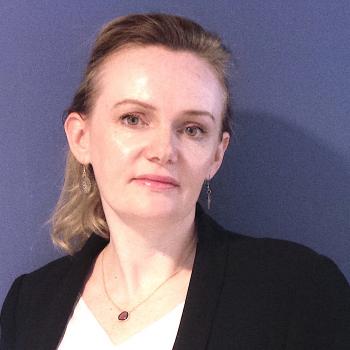
Alicia Holbrook
As Head of Marketing for APMG International I work closely with the World Bank Group, the MDB's and the PPIAF to help PPP professionals access best practice information.
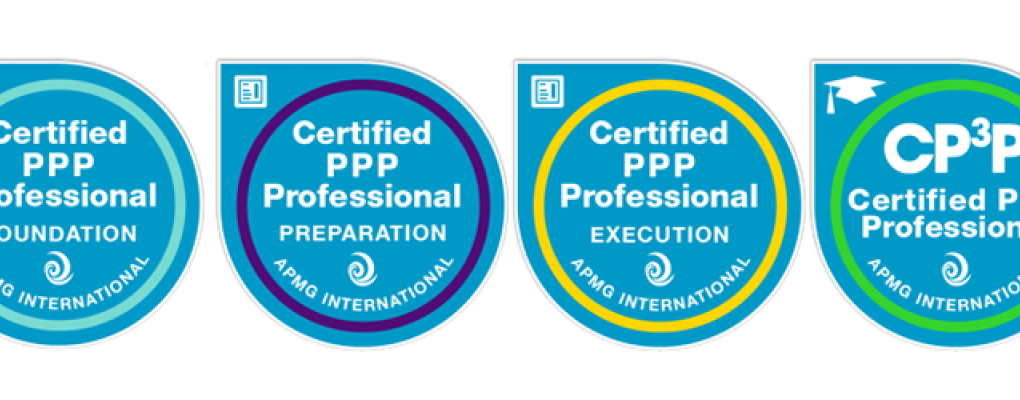
Claim and share your digital badges on social media and add them to your online CV and email signature to broadcast your certified skills to employers and other interested parties.
Successful candidates can now claim a digital badge to embed on an email signature, website, social media platforms or a digital CV. With just one click employers, clients, customers and other interested parties can easily view and verify credentials and skills.
To deliver the digital badges, APMG has partnered with Acclaim, a global leader who supply open badges for a wide range of academic institutions and global businesses. Candidates accessing their website badges on the Acclaim platform can also access labour market insights data which tags skills earned from the certification to available jobs searchable by location, employer, and salary range. Applying for a job is just a few clicks away.
Open badges are secure digital representations of credentials. Through a single click employers can verify the certification and learn more about the qualification.
Digital badges are available for the Foundation, Preparation and Execution exams. Candidates who have passed all three exams can claim an additional CP3P badge to demonstrate their Certified Public-Partnerships Professional credential. This credential indicates to potential employers and peers an in-depth level of knowledge and competency of PPP best practice.
Share your success on social media
Candidates can also raise their profile and share their exam success by clicking on the Twitter, Facebook, LinkedIn and WeChat buttons in the candidate portal. Sharing your certification success demonstrates:
- You are committed to continual improvement
- Your skills are current
- You are a highly skilled PPP professional
How to claim your badge
To embed your digital badge simply log into the APMG candidate portal and click on the create badge button. This will take you to the Acclaim portal where you will be requested to set up an account in order to access your digital badge.

Alicia Holbrook
As Head of Marketing for APMG International I work closely with the World Bank Group, the MDB's and the PPIAF to help PPP professionals access best practice information.

APMG International is pleased to announce that chapters 2 to 5 of the PPP Guide and the CP3P Preparation exam are now available in Chinese. The PPP Guide is a FREE downloadable resource to help candidates prepare for the PPP Certification Program.
Earlier this year, chapter 1 of the PPP Guide and the Foundation exam were translated into Chinese and this new translation now means that individuals can download chapters from the PPP Guide and study in their native language for both the Foundation and Preparation exams, helping them take the steps towards achieving the CP3P credential.
To access chapters of the PPP Guide in Chinese, click here: https://ppp-certification.com/chinese-ppp-guide
The PPP Certification Program comprises three examinations: Foundation, Preparation and Execution. The Foundation exam is a pre-requisite for sitting the two higher level exams.
“This is an important milestone: the first time that Chapter 2-5 of the PPP Guide is available in a non-English language. Releasing it in Chinese is a timely response to the growing importance of PPPs in China, as well as the increasing demand for global knowledge exchange of PPP good practices. We’re seeing significant interest in the Practitioner Level exams and expect that PPP professionals in China will benefit from this release. ” Abha Joshi-Ghani, Senior Advisor, Head of infrastructure, Analytics, and Programs, World Bank.
The Institution of Public Private Partnerships, China, carried out the translation work of both the Foundation and Preparation level materials and chairman, Walter Chan said, “The Institution of Public Private Partnerships recognises the Chinese translation of the PPP Certification Guide can play an important role in enhancing knowledge and establishing good practices for PPP professionals in China. The PPP Guide enables the governments and the private sectors to benefit from the PPP experience worldwide and improve the delivery of PPPs.”
To receive further updates on the PPP Certification Program, please subscribe to our newsletter via the PPP website (https://ppp-certification.com/) or follow our LinkedIn page (https://www.linkedin.com/showcase/apmg-public-private-partnerships/)
About the PPP Guide
The PPP Certification Guide is an innovation of the Asian Development Bank (ADB), the European Bank for Reconstruction and Development (EBRD), the Inter-American Development Bank (IDB), the Islamic Development Bank (IsDB), the Multilateral Investment Fund (MIF), the World Bank Group (WBG) and part funded by the Public-Private Infrastructure Advisory Facility (PPIAF) with a shared vision of enhancing PPP performance globally.
About APMG International
APMG International is an award-winning, global examination institute that offers a broad portfolio of professional certifications for knowledge-based workers. APMG certifications are designed to provide professional career development for individuals, equipping them with the skills, knowledge, tools and techniques to help them and their organizations perform more effectively.
In addition, APMG provides accreditation services for individuals and organisations around the world that provide high quality training and consultancy services in support of our certifications.
Committed to quality, APMG’s certification and accreditation processes are developed and managed in accordance with a robust quality management system accredited by the United Kingdom Accreditation Service (UKAS). Visit: www.apmg-international.com

Helen Platt
Project Manager at APMG.

APMG International is pleased to announce that chapter 1 of the PPP Guide is now available in Japanese. The PPP Guide is a FREE downloadable resource to help candidates prepare for the PPP Certification Program.
This new translation now means that individuals can download the PPP Guide and study in their native language for the Foundation exam, helping them take the first step towards achieving the CP3P credential.
To access the PPP Guide in Japanese, click here.
The PPP Certification Program comprises three examinations: Foundation, Preparation and Execution. The Foundation exam is a pre-requisite for sitting the two higher level exams. Candidates who sit all three exams can collect their CP3P digital badge to share on social media demonstrating they are a Certified PPP Professional.
“Releasing the Japanese translation allows more PPP professionals to study for the exam in their own language, building a common PPP lexicon around the globe. We wish this release a tremendous success and are confident that candidates will benefit greatly from this PPP Certification Program,” said Abha Joshi-Ghani, Senior Advisor, Infrastructure, Head of Infrastructure, Analytics, and Programs, World Bank.
Crown Agents Japan who are responsible for the translation said, “In 2015, the Japanese Government introduced a scheme called “Grant Aid for Concession (GAC)”, creating a hybrid scheme (co-financed PPPs), from Japan’s Official Development Assistance (ODA) to promote development of infrastructure project in developing countries. CA was appointed as procurement agent for projects in Kenya and the Philippines.
The definition and the focus of PPPs described in the PPP Guide is almost identical to Japan’s GAC scheme. Translation to a Japanese version is highly relevant to promote Japan’s GAC scheme, and beneficial not only for the Japanese Government, but also for Japanese consultants, engineers, contractors, financial institutes and other stakeholders of ODA and infrastructure industries. Considering such benefits, CAJ contacted APMG and proposed the Japanese version which is now being launched. CAJ has established a CP³P training team to provide the Foundation exam training. The team leader has over 15 years of experience in large-scale international infrastructure project management and 20 years of experience in Japanese and international PPP projects.”
To receive further updates on the PPP Certification Program, please subscribe to our newsletter via the PPP website (https://ppp-certification.com/) or follow our LinkedIn page (https://www.linkedin.com/showcase/apmg-public-private-partnerships/)
About the PPP Guide
The PPP Certification Guide is an innovation of the Asian Development Bank (ADB), the European Bank for Reconstruction and Development (EBRD), the Inter-American Development Bank (IDB), the Islamic Development Bank (IsDB), the Multilateral Investment Fund (MIF), the World Bank Group (WBG) and part funded by the Public-Private Infrastructure Advisory Facility (PPIAF) with a shared vision of enhancing PPP performance globally.
About APMG International
APMG International is an award-winning, global examination institute that offers a broad portfolio of professional certifications for knowledge-based workers. APMG certifications are designed to provide professional career development for individuals, equipping them with the skills, knowledge, tools and techniques to help them and their organizations perform more effectively.
In addition, APMG provides accreditation services for individuals and organisations around the world that provide high quality training and consultancy services in support of our certifications.
Committed to quality, APMG’s certification and accreditation processes are developed and managed in accordance with a robust quality management system accredited by the United Kingdom Accreditation Service (UKAS). Visit: www.apmg-international.com
About Crown Agents
Crown Agents Limited (CA) is an international development company that partners with governments, aid organisations and companies in over 100 countries. CA founded the Japanese office in 1967 and established Crown Agents Japan Limited (CAJ) in 2013 as one of the its three key global businesses. Its business areas includes CA Training and Professional Development which trains 1000 delegates a year worldwide. Visit: https://www.crownagents.com

Helen Platt
Project Manager at APMG.

Fang Wei is CP3P and discusses the insights the program gave him and how the framework has helped with project delivery.
1. What first prompted you to a career in public private partnerships?
New trends in the Latin-American infrastructure market, nowadays PPP has gradually become the main engineering contracting form for more and more Latin-American governments.
2. Can you give us a background on your (PPP) job role emphasising on the PPP sector that it is related to?
As a business manager, in the process of develop new project opportunity, I need to know how the PPP project is structured, how to control and allocate the risk, so that can help our project development work and reduce development risks.
3. What prompted you to get certified, how did you hear about APMG’s PPP certification program?
I always pay attention to PPP news and new tendency, I heard about the APMG PPP certification program from the PPP blog of the World Bank Group. Before the PPP certification came out, I could not find a reliable way to test and prove my PPP knowledge, and as an innovation of the World Bank Group, the PPP certification provide me a widely accepted way to get certificated in the PPP field.
4. Take us through your thought process while deciding to get certified.
I am passionate about learning more about PPP, the PPP certification give me a complete systematic, clear way to achieve it, so I decide to get certified.
5. Why did you chose APMG’s PPP certification program and how did it help? You could include some details regarding the PPP Certification Guide that was a fundamental reference material for this certification.
ALL the content is organized in a systematic way which can give the full cycle knowledge about PPP.
6. What are your key strengths and how have you used them in your current PPP role?
Have a clear mind about structure projects and risk allocation.
7. What factors of your role as a PPP practitioner are easy? You could use an example here to explain about it.
Project full process management ideas to learn, to development the PPP project.
8. What characteristics and skills do you think make a better PPP professional or a successful one?
Have to know clearly about all the PPP cycle from the PPP project identification to Appraising , structuring to Post-Project Manager.
9. What is next in line for you, how are you planning to utilise the knowledge gathered from doing the Foundation and Preparation exams of this PPP Certification Program?
Considering the actual situation in the work, I will apply the PPP knowledge to my daily work to help me in the PPP project development
10. What is your advice for newcomers or other PPP practitioners on helping deliver successful projects in the PPP world?
Think and learn in a systematic way, through the overall knowledge framework, because you can't see the forest for the trees.

I have six years cross-cultural project management and group structuring experience in the Ibero-America market, currently working on the development and management of infrastructure projects in Latin America.

APMG International and IFC are pleased to announce that Foundation Level PPP Guide, training, and exam is now available in Russian, thanks to the support of the Swiss State Secretariat for Economic Affairs (SECO). The PPP Guide is a FREE downloadable resource to help candidates prepare for the PPP Certification Program.
“The Russian language translation was organised by IFC, a member of the World Bank Group, with the support of SECO” said Georgi Petrov, IFC PPP Transaction Advisory Manager for Europe and Central Asia (ECA) “We hope that the PPP Guide will introduce more people to PPPs in ECA and motivate businesses and authorities to engage in this model more frequently.”
SECO supports the language adaptation of the PPP Guide into Russian to enhance PPPs which are based on international standards and increased private sector participation developments in ECA.
Abha Joshi-Ghani, Senior Advisor, Infrastructure, PPP, and Guarantees Department, the World Bank, said “The PPP Certification program is the definitive credential that demonstrates one’s knowledge and understanding of international PPP good practice. We are seeing increasing uptake on this program worldwide, and hope that PPP professionals in ECA find the program as useful as our other regions have found it.”
Marek Waskiewicz, Associate, Infrastructure Project Preparation Facility (IPPF) at EBRD, said “Since April 2017, EBRD’s Infrastructure Project Preparation Facility delivered the Foundation level trainings and examinations to public servants in Serbia, Belarus, Ukraine, Romania and Egypt. One of the major challenges we faced was related to language abilities and participants’ fluency in English. We are therefore very keen to see the Body of Knowledge translated into Russian and other languages. This allows us to build PPP capacity more effectively in EBRD Countries of Operation.”
The PPP Certification Program comprises three examinations: Foundation, Preparation and Execution, and the Foundation exam is a pre-requisite for sitting the two higher level exams. Chapter 1 of the PPP Guide and the Glossary are the core reading materials for candidates taking the Foundation Level exam.
Since the launch of the PPP Certification Program in English two years ago, the Foundation exam and PPP Guide have been translated into Spanish, French and Chinese, and now also into Russian. To access Chapter 1 (Foundation Level) of the PPP Guide in any of these languages, please visit the official website: https://ppp-certification.com/pppguide/download
To receive further updates on the PPP Certification Program, please subscribe to our newsletter via the PPP website or follow our LinkedIn page
About the PPP Guide
The PPP Certification Guide is an innovation of the Asian Development Bank (ADB), the European Bank for Reconstruction and Development (EBRD), the Inter-American Development Bank (IDB), the Islamic Development Bank (IsDB), the Multilateral Investment Fund (MIF), the World Bank Group (WBG) and part funded by the Public-Private Infrastructure Advisory Facility (PPIAF) with a shared vision of enhancing PPP performance globally.
About APMG International
APMG International is an award-winning, global examination institute that offers a broad portfolio of professional certifications for knowledge-based workers. APMG certifications are designed to provide professional career development for individuals, equipping them with the skills, knowledge, tools and techniques to help them and their organizations perform more effectively.
In addition, APMG provides accreditation services for individuals and organisations around the world that provide high quality training and consultancy services in support of our certifications.
Committed to quality, APMG’s certification and accreditation processes are developed and managed in accordance with a robust quality management system accredited by the United Kingdom Accreditation Service (UKAS).

Helen Platt
Project Manager at APMG.

Компания APMG International и Международная Финансовая Корпорация (МФК) рады сообщить о том, что первый том Руководства по Государственно-частному партнерству (ГЧП) и иные материалы для подготовки и сдачи экзамена по Основам ГЧП теперь доступны на русском языке благодаря поддержке Швейцарского Государственного секретариата по экономическим вопросам (SECO). Руководство по ГЧП является БЕСПЛАТНЫМ ресурсом, размещенным олнайн и доступным для загрузки дляс целью помощи кандидатам, готовящимся к сдаче экзаменов по программе «Сертифицированный специалиста в области ГЧП».
«Перевод на русский язык был осуществлен по заказу МФК, входящей в Группу Всемирного банка, при поддержке SECO, - сообщил Георгий Петров, менеджер Группы МФК по консалтингу в области ГЧП, регион Европа и Центральная Азия: Мы надеемся, что Руководство по ГЧП будет содействовать тому, что большее число людей в Европе и Центральной Азии познакомится с ГЧП, способствуя мотивированности бизнеса и органов власти к более активному использованию данной модели осуществления проектов».
SECO поддерживает языковую адаптацию Руководства по ГЧП и его перевод на русский язык с целью поддержки проектов ГЧП, которые базируются на международных стандартах и содействуют росту частного участия в развитии инфраструктуры в странах Европы и Центральной Азии.
Абха Джоши-Гхани, старший советник Департамента инфраструктуры, ГЧП и гарантий Всемирного банка заявила: «Программа сертификации по ГЧП представляет собой полноценное подтверждение профессиональной квалификации в данной области, которое демонстрирует знание и понимание ее обладателем лучшей международной практики в области ГЧП. Мы видим, что в мире растет число людей, которые проходят обучение по данной программе и надеемся, что профессионалы в области ГЧП в странах Европы и Центральной Азии найдут ее полезной, как это уже произошло в других регионах мира.»
Марек Васкевич, банкир Фонда подготовки инфраструктурных проектов (IPPF) Европейского банка реконструкции и развития (ЕБРР) сказал: «С апреля 2017 Фонд подготовки инфраструктурных проектов ЕБРР осуществил проведение тренингов и экзаменов по Основам ГЧП для государственных служащих в Сербии, Беларуси, Украине, Румынии и Египте. Одним из главных препятствий, с которыми мы столкнулись, было то, что у некоторых участников уровень владения английским языком был недостаточен для успешного прохождения программы. В связи с этим мы весьма заинтересованы в том, чтобы Руководство по ГЧП было переведено на русский и иные языки. Это позволит нам более эффективно содействовать наращиванию компетенций в области ГЧП в странах операций ЕБРР.»
Программа по сертификации в области ГЧП включает в себя три экзамена: Основы ГЧП, Подготовка ГЧП и Реализация ГЧП, при этом успешное прохождение экзамена по Основам ГЧП является условием для сдачи двух экзаменов более высокого уровня. Глава 1 Руководства по ГЧП и Глоссарий являются основными материалами, изучение которых требуется для подготовки к сдаче экзамена по Основам ГЧП.
С того момента, как Программа по сертификации в области ГЧП стартовала два года назад, экзаменационные материалы уровня Основы ГЧП и Глава 1 Руководства по ГЧП были переведены на испанский, французский и китайский языки, а сейчас - также и на русский язык. Главу 1 (Основы ГЧП) Руководства по ГЧП на любом из указанных языков можно загрузить с официального веб-сайта: https://ppp-certification.com/pppguide/download
Для получения информационных сообщений о Программе по сертификации в области ГЧП можно подписаться на нашу рассылку новостей на сайте, посвященном Сертификации по ГЧП (https://ppp-certification.com/) или на нашу страницу в сети LinkedIn (https://www.linkedin.com/showcase/apmg-public-private-partnerships/)
О Руководстве по ГЧП
Руководство по сертификации в области ГЧП представляет собой инновационную разработку Азиатского банка развития, Европейского банка реконструкции и развития, Межамериканского банка развития, Исламского банка развития, Многостороннего инвестиционного фонда и Группы Всемирного банка. Финансирование было частично предоставлено Фондом консалтинговой поддержки государственно-частных инфраструктурных проектов, который разделяет видение вышеупомянутых международных институтов развития в части содействия успешному применению ГЧП в мире .
Об APMG International
APMG International - отмеченный наградами глобальный институт, специализирующийся на экзаменационных программах и предлагающий большой портфель профессиональных сертификаций по широкому перечню специализаций. Сертификационные программы APMG преследуют задачу содействия развития профессиональной карьеры путем передачи знаний, обучения навыкам и методикам, которые позволят организациям и их сотрудникам более эффективно осуществлять свои функции.
Помимо этого APMG предоставляет в различных странах мира услуги аккредитации для индивидуумов и организаций, предоставляющих тренинговые и консалтинговые услуги по продвижению наших программ сертификации.
Преследуя высокий уровень качества, APMG формирует свои программы сертификации и аккредитации и управляет ими в соответствии с высокими стандартами системы управления качеством, принятой Службой аккредитации Великобритании (UKAS). Для ознакомления: www.apmg-international.com

Helen Platt
Project Manager at APMG.

The Netherlands Taskforce Financing International Water Centre (TF IWC) finished its first CP3P Foundation course, delivered by Marcel van de Broeke on behalf of K-Infra at the beginning of December 2018. The 12 participants successfully took the exam, with an average score of 88%, the best scores of a group of candidates trained by K-Infra. With even one colleague achieving a 100% score. The unanimous reaction was; this is an excellent course because we now understand all aspects of PPP and within the Taskforce, we speak the same language on PPP.
Participants are members of the Taskforce Financing and were from the Ministry of Infrastructures, Foreign Affairs (including the staff of the Netherlands Embassy in Hanoi), Economic Affairs (RVO- Infrastructure Team) and the Netherlands Foreign Investment Bank (FMO). This team supports the work of the International Water Cluster of the Netherlands in developing, structuring and (financially) supporting projects in the 17 partners countries of the Netherlands.
The goals were firstly to understand the complete PPP cycle, international best practice and challenges on different topics in different countries. Secondly, within IWC, NL-TAS Unit , our Investment Bank and infrastructure team has to speak the same language. Thirdly to invest in our mutual cooperation and discuss different projects and frameworks. With the help of the trainer, Marcel van den Broek of K-infra, a former colleague of the Netherlands PPP Unit, all these aims where met and surpassed our expectations. Some quotes from the course attendees;
- when countries apply for Netherlands grants or loans for PPP project the applying government should have a bonus if they have done this training;
- with this knowledge, the Netherlands can support PPP development in our priority countries much better
- this should almost be mandatory for all PPP project team and governments around the world who do PPP projects
- having an official exam does lift the quality of the course, but also was very exciting to do an exam in your professional career again
The Netherlands has been contributing to the body of Knowledge from the beginning. Our main reasons where firstly that knowledge is essential for developing projects and access to funding. Secondly, to have a system that helps to have one voice on PPP. Now I have done this course, it really does address these topics fully, even beyond my expectations. But I also underline a formal (by the way demanding) exam; it separates the men (women) from the boys (girls) in PPP. If countries really want to have well-developed projects and access to financial resources, this is an essential start.
Infrastructure investment by MDB’s and Netherlands: https://ienw.smartgraph.bi/
About K-Infra
K-Infra was founded in 2016 by Andres Rebollo, the lead author of the PPP Certification Guide, the Body of Knowledge of the PPP Certification Program developed by APMG, with the support of the World Bank and other Multilateral Development Banks.
K-Infra’s core activity is to provide training services specialized in PPPs, as a tool for contracting and management of infrastructures and services for governments, as business line for construction companies, services operators and infrastructures operators, and as investment asset for financial investors and banks.
About APMG International
APMG International is an award-winning, global examination institute that offers a broad portfolio of professional certifications for knowledge-based workers. APMG certifications are designed to provide professional career development for individuals, equipping them with the skills, knowledge, tools and techniques to help them and their organizations perform more effectively.
In addition, APMG provides accreditation services for individuals and organisations around the world that provide high quality training and consultancy services in support of our certifications.
Committed to quality, APMG’s certification and accreditation processes are developed and managed in accordance with a robust quality management system accredited by the United Kingdom Accreditation Service (UKAS). Visit: www.apmg-international.com

Helen Platt
Project Manager at APMG.

The sixth language translation of the APMG Certified Public-Private Partnerships has arrived. Brazilian Portuguese is the latest translation to be added to the rapidly growing CP3P program which has certified almost 3000 professionals in over 100 countries.
The translation has been curated and approved by the InterAmerican Development Bank, as a part of the Bank’s effort to support the implementation of effective PPPs in Latin America. “The certification program is one of the most disruptive innovations in the context of MDB’s support of the use of PPP in a long time. It addresses the long-standing challenge of capacity building in emerging markets from a very innovative approach: creating a universal language and common ground so governments, investors and other stakeholders can understand each other, learn from each other and build, together, a common ground,” said Marcos Siqueira, PPP Senior Specialist of the Inter-American Development Bank.
“The Portuguese version will add professionals from some of the most active PPP markets in the world to a growing network that incorporates links every day. This will create and disseminate knowledge and good practices and ultimately promote IDBs vision of Improving Lives through better and effective infrastructure.”
South American training organisation Radar PPP says, “Brazil is a continental-size country. For instance, we have over 5,700 different public authorities at municipal level. And, due to a number of circumstances - such as fiscal crisis and, more recently, a rising concern about the quality of government spending - there is increased demand in private investment in public infrastructure. Because of this, the search for the knowledge that can be found in the PPP Guide has significantly increased in the past year. However, it was restrained by the language limitation and it’s outstanding that APMG International, together with the MDB’s, quickly managed to provide a solution to make to make the knowledge available for everyone,” said Guilherme Naves, Partner, Radar PPP.
The Brazilian Portuguese translation of Chapter 1 of the PPP Guide is a free downloadable resource to help candidates prepare for the foundation exam. Candidates can also choose to take the Foundation exam in Brazilian Portuguese.
“The Portuguese translation of the PPP Guide is another essential component of the PPP Certification program. The combined efforts of APMG, Inter-American Development Bank and the World Bank to bring this translation to market, reflect our commitment to the smart and sustainable use of PPPs in Brazil,” said Abha Joshi-Ghani, Senior Advisor, Head of infrastructure, Analytics, and Programs, World Bank Group.
The PPP Certification Program comprises three examinations: Foundation, Preparation and Execution. The Foundation exam is a pre-requisite for sitting the two higher level exams. Candidates who sit all three exams can collect their CP3P digital badge to share on social media demonstrating they are a Certified PPP Professional.
To receive further updates on the PPP Certification Program, please subscribe to our newsletter via the PPP website (https://ppp-certification.com/) or follow our LinkedIn page (https://www.linkedin.com/showcase/apmg-public-private-partnerships/)
About the PPP Guide
The PPP Certification Guide is an innovation of the Asian Development Bank (ADB), the European Bank for Reconstruction and Development (EBRD), the Inter-American Development Bank (IDB), the Islamic Development Bank (IsDB), the World Bank Group (WBG) and part funded by the Public-Private Infrastructure Advisory Facility (PPIAF) with a shared vision of enhancing PPP performance globally.
About APMG International
APMG International is an award-winning, global examination institute that offers a broad portfolio of professional certifications for knowledge-based workers. APMG certifications are designed to provide professional career development for individuals, equipping them with the skills, knowledge, tools and techniques to help them and their organizations perform more effectively.
In addition, APMG provides accreditation services for individuals and organisations around the world that provide high quality training and consultancy services in support of our certifications.
Committed to quality, APMG’s certification and accreditation processes are developed and managed in accordance with a robust quality management system accredited by the United Kingdom Accreditation Service (UKAS). Visit: www.apmg-international.com

Alicia Holbrook
As Head of Marketing for APMG International I work closely with the World Bank Group, the MDB's and the PPIAF to help PPP professionals access best practice information.
APMG International is pleased to announce that Foundation Level PPP Guide, Training, and Exam taking is now available in Serbian, thanks to the Swiss State Secretariat for Economic Affairs (SECO) support. The PPP Guide is a FREE downloadable resource to help candidates prepare for the PPP Certification Program. The version in Serbian has been promoted at the today’s 2nd Serbian Public Private Partnership Conference in Belgrade https://www.pppconference.rs
The Serbian language translation was organised by IFC, a member of the World Bank Group, with the support of SECO. “This in-depth certification program builds on a vast pool of international experience in PPPs to equip public officials with the knowledge they need to develop and manage PPPs,” said Georgi Petrov, Regional Manager for IFC’s PPP Transaction Advisory Services department. “Adopting internationally recognized good practice will help national and municipal governments in Serbia deliver projects effectively and efficiently and increase the attractiveness of the country’s PPP program to investors.”
SECO supports the language adaptation of the PPP Guide into to enhance PPPs which are based on international standards and increased private sector participation developments in ECA.
Jordan Schwartz, Director of the Infrastructure Finance, PPPs & Guarantees Group of the World Bank, said, “With Serbian translation, the PPP Certification Program has now been translated to seven languages, addressing the growing need for high-quality knowledge-sharing in PPPs. We’re very proud of the program—which strengthens global capacity to design and implement sustainable PPPs—and this translation makes it accessible to even more practitioners.”
Matthew Jordan-Tank, Head of Infrastructure Project Preparation Facility (IPPF) at EBRD, said “EBRD places a distinct focus on the importance of knowledge transfer and capacity building for our client countries . At the end of the day, this is the pathway to sustainable PPP delivery — when a critical mass of professionals at the local level understand the concepts, structures and language of PPPs, countries will begin to ramp up their delivery of PPP investments. We consider the MDB-supported PPP Certification training course with APMG to be a critical point of EBRD’s capacity building efforts, and are pleased to support Serbia in this effort.”
The PPP Certification Program comprises three examinations: Foundation, Preparation and Execution, and the Foundation exam is a pre-requisite for sitting the two higher level exams. Chapter 1 of the PPP Guide and the Glossary are the core reading materials for candidates taking the Foundation Level exam.
Since the launch of the PPP Certification Program in English, the Foundation exam and PPP Guide have been translated into Spanish, French, Chinese, Brazilian Portuguese, Russian and Serbian. To access Chapter 1 (Foundation Level) of the PPP Guide in any of these languages, please visit the official website: https://ppp-certification.com/pppguide/download
To receive further updates on the PPP Certification Program, please subscribe to our newsletter via the PPP website (https://ppp-certification.com/) or follow our LinkedIn page (https://www.linkedin.com/showcase/apmg-public-private-partnerships/)
About the PPP Guide
The PPP Certification Guide is an innovation of the Asian Development Bank (ADB), the European Bank for Reconstruction and Development (EBRD), the Inter-American Development Bank (IDB), the Islamic Development Bank (IsDB), the World Bank Group (WBG) and part funded by the Public-Private Infrastructure Advisory Facility (PPIAF) with a shared vision of enhancing PPP performance globally.
About APMG International
APMG International is an award-winning, global examination institute that offers a broad portfolio of professional certifications for knowledge-based workers. APMG certifications are designed to provide professional career development for individuals, equipping them with the skills, knowledge, tools and techniques to help them and their organizations perform more effectively.
In addition, APMG provides accreditation services for individuals and organisations around the world that provide high quality training and consultancy services in support of our certifications.
Committed to quality, APMG’s certification and accreditation processes are developed and managed in accordance with a robust quality management system accredited by the United Kingdom Accreditation Service (UKAS). Visit www.apmg-international.com

Helen Platt
Project Manager at APMG.
Zahvaljujući podršci Švajcarskog državnog sekretarijata za ekonomske poslove (SECO), APMG International sa zadovoljstvom objavljuje da je Osnovni nivo JPP Vodiča, obuka i polaganje ispita sada dostupan na srpskom jeziku,.
Vodič za JPP je besplatan resurs koji se može preuzeti kako bi se pomoglo kandidatima da se pripreme za JPP sertifikacioni program. Verzija na srpskom jeziku promovisana je na današnjoj drugoj (2.) konferenciji za Javno Privatno Partnerstvo u Beogradu https://www.pppconference.rs
Prevod na srpskom jeziku organizovao je IFC, član grupe Svetske Banke, uz podršku SECO. „Ovaj detaljni program za (JPP) sertifikaciju nadovezuje se na ogromnu bazu međunarodnog iskustva u JPP kako bi se javni službenici opremili znanjem koje im je potrebno da razviju i upravljaju JPP“, rekao je Georgi Petrov, regionalni direktor IFC odeljenja za savetodavne usluge za transakcije JPP. „Usvajanje međunarodno priznate dobre prakse pomoći će nacionalnim i opštinskim vlastima u Srbiji da efikasno i u brzom roku isporuče projekte i povećaju privlačnost programa JPP za investitore.“
SECO podržava prilagođavanje Vodiča za JPP u cilju poboljšanja JPP koji se zasnivaju na međunarodnim standardima i povećanog razvoja učešća privatnog sektora u ECA.
Jordan Schvartz, direktor za finansiranje infrastrukture, grupe za JPP i garancije Svetske Banke, rekao je: “Sa srpskim prevodom, PPP sertifikacioni program je sada preveden na sedam jezika, koji rešava rastuću potrebu za visokokvalitetnom razmenom znanja u JPP. Veoma smo ponosni na program - koji jača globalni kapacitet za dizajniranje i implementaciju održivih JPP - i sa prevodom bice dostupan mnogim profesionalcima.”
Matthev Jordan-Tank, šef odeljenja za pripremu projekata za infrastrukturu (IPPF) u EBRD, rekao je da se „EBRD fokusira na važnost prenosa znanja i izgradnje kapaciteta za drzave koji su nasi klijenti. Na kraju krajeva, ovo je put ka održivoj isporuci JPP - kada kritična masa stručnjaka na lokalnom nivou razume koncepte, strukture i jezik JPP, zemlje će početi da povećavaju svoju isporuku investicija za JPP. Smatramo da je obuka za JPP sertifikaciju, koju podržava MDB u kolaboraciji sa APMG, EBRD-ev kritični cilj za izgradnju kapaciteta, i sa zadovoljstvom podržavamo Srbiju u ovim naporima. ”
JPP Program za sertifikaciju sastoji se od tri ispita: Osnovni nivo, Priprema i Izvršenje. Osnovni nivo je preduslov za polaganje dva ispita višeg nivoa. Poglavlje 1 Vodiča za PPP i Rečnik su osnovni materijali za čitanje kandidata koji polažu ispit na Osnovnom nivou.
Od lansiranja PPP sertifikacionog programa na engleskom jeziku, Osnovni nivo i PPP vodič su prevedeni na španski, francuski, kineski, brazilski portugalski, ruski i srpski jezik. Da biste pristupili Poglavlju 1 (Osnovni nivo) Vodiča za PPP na bilo kojem od ovih jezika, molimo vas da posetite zvaničnu veb stranicu: https://ppp-certification.com/pppguide/download
Da biste dobili dodatne informacije o PPP sertifikacionom programu, molimo vas da se pretplatite na naš bilten preko PPP veb stranice (https://ppp-certification.com/) ili pratite našu LinkedIn stranicu.
JPP Vodic za sertifikaciju predstavlja inovaciju Azijske razvojne banke (ADB), Evropske banke za obnovu i razvoj (EBRD), Inter-američke razvojne banke (IDB), Islamske razvojne banke (IsDB), i Grupacije Svetske banke (WBG), koja se delom finansira od strane Savetodavnog tela za javno-privatnu infrastrukturu (PPIAF) sa zajednickim ciljem da se performansa JPP poboljsa na globalnom nivou.
O APMG International kompaniji
Osvajač nagrada, APMG International je globalni institut za ispitivanje znanja koji nudi širok portfolio profesionalnih sertifikata za profesionalce. APMG sertifikati su osmišljeni tako da pružaju profesionalni razvoj karijere za pojedince, opremujući ih veštinama, znanjem, alatima i tehnikama kako bi pomogli pojedincima i njihovim organizacijama da rade efikasnije.
Pored toga, APMG pruža usluge akreditacije za pojedince i organizacije širom sveta kroz kvalitetnu obuku i konsultantske usluge kao podršku sertifikatima.
Posvećeni kvalitetu, APMG-ovi procesi sertifikacije i akreditacije se razvijaju i upravljaju u skladu sa robusnim sistemom upravljanja akreditovanim od strane Ujedinjenog Kraljevstva (UKAS). Posetite: www.apmg-international.com

Helen Platt
Project Manager at APMG.

The Certified Public-Private Partnerships Professional (CP3P) program celebrates its second year by fulfilling its vision of fostering a common minimum level of knowledge and understanding, plus provide certification for practitioners engaged in PPPs.
Since the inauguration of the scheme in June 2017 over 4000 candidates from 125 countries have taken an APMG PPP Certification Program exam. One of the main goals of the program is to share best practice knowledge and make it freely available to everyone. The PPP guide is now available in eight languages to make it accessible to even more PPP practitioners.
Demand for best practice information across all stages of the PPP cycle has been huge. Over 1 million visitors have downloaded or accessed the PPP Guide online, which uses principles and models to convey knowledge across a range of subjects including planning and funding, tendering, contracts, operating and maintaining projects.
Feedback from the global PPP community has been overwhelmingly positive with many candidates commenting that the program has led to an improved approach to PPPs. Fang Wei works on the development and management of PPP projects in Latin America. Wei successfully passed all three exams earlier this year and has been awarded a CP3P certificate. He commented on the scheme, “the certification has helped me to understand how to structure projects and consider risk allocation, to think and learn in a systematic way through the overall knowledge framework. I will apply the PPP knowledge to my daily work to help me in the PPP project development.”
“The APMG PPP Certification Program has made a positive impact to the professional development and career prospects of thousands of individuals across the globe,” says Richard Pharro. “Becoming a CP3P professional demonstrates to stakeholders and employers that you have the underpinning knowledge needed for the successful deliver PPPs.”
There has been a strong global demand for training across the PPP lifecycle including private finance banks, government departments and construction companies. This year Accredited Training Organisations have trained candidates working for a variety of organisations including the International Trade Center, Guateng Infrastructure Financing Agency, Road and Highway Department, Bangladesh, VIVEKA, Hyundai Engineering and Construction Co, Orange Business Services and K-Water.

Alicia Holbrook
As Head of Marketing for APMG International I work closely with the World Bank Group, the MDB's and the PPIAF to help PPP professionals access best practice information.

1. What first prompted you to a career in public private partnerships?
I've had my first contact with PPPs in Law school in my freshman year. Then, I ended up starting an internship program at Dal Pozzo Law Firm, where I still work, and had the opportunity to work in the structuring and drafting of one of the very first PPP contracts in the basic sanitation sector in the country in the city of Rio Claro. This PPP contract is still in effect and already delivering top quality public service.
2. Can you give us a background on your (PPP) job role emphasising on the PPP sector that it is related to?
I've been working with PPPs since 2006, when I worked in the structuring and drafting of Rio Claro PPP (see previous answer). I also work with legal contract management of several toll road and other basic sanitation user-pays PPPs since 2009, public transportation user-pays PPPs since 2013. I have also been part of the team that was responsible for translating the PPP Guide Chapter 1 into Brazilian Portuguese.
3. What prompted you to get certified, how did you hear about APMG’s PPP certification program?
I heard about the Guide in early 2017 and, after reading it, I realized that getting certified would be a great step. Therefore, I took my exam in December 2017.
4. Take us through your thought process while deciding to get certified.
When I read the guide and saw the incredible effort turned reality by all those renowned professionals led by Andrés Rebollo, I decided that it would make total sense to get certified, because the Guide is a state-of-the-art body of knowledge. Also, other professions, such as project managers, have had certifications for a long time and it adds a lot of value to the holder’s expertise. I believe so much in the Guide that I proposed the translation effort to APMGs ATO in Brazil, Radar PPP, when I took the course for Foundation. It took nearly fourteen months until it was released in Brazilian Portuguese considering all steps of the process, but it was incredibly worth the effort. I also decided to join the team of accredited trainers in Brazil. My accreditation was issued in April 25th, 2019.
5. Why did you chose APMG’s PPP certification program and how did it help? You could include some details regarding the PPP Certification Guide that was a fundamental reference material for this certification.
I chose it because, to the extent of my knowledge, there is no similar certification in the world. If we add the fact that is was backed by the greatest Multilateral Banks in the world and it turns out to be an easy decision. The guide is incredibly sharp when it comes to concepts. Take the PPP concept for instance: a long term contract between a public and a private entity with significant risk transfer in order to develop (or significantly improve our rebuild) an infrastructure asset where the private party provides significant part of the finance and payments are significantly linked to performance in order to keep the alignment of interests. It comprises all essential features and proves how deep is the knowledge put into building it. The entire Guide presents solid concepts and presents best practices with excellent examples.
6. What are your key strengths and how have you used them in your current PPP role?
My main skill is related to drafting main documents such as the PPP contract, but my main role nowadays is liaising with clients, MoS of them SPVs in charge of executing PPP contracts, to analyse and evaluate legal and regulatory risks and helping them to make the best possible corporate decision on how to face them.
7. What factors of your role as a PPP practitioner are easy? You could use an example here to explain about it.
I sincerely don't think there's anything easy in PPP practice, especially in Brazil where legal stability is always hanging on the balance. But among PPP factors, maybe the ones less difficult or complex could be the monitoring of media, that is something that has lots of interesting tools for tracking news and social media posts. The hard part is how to assess them and respond properly in the shortest possible notice.
8. What characteristics and skills do you think make a better PPP professional or a successful one?
Resilience is the most important thing: dealing with PPPs demands a lot of dedication and time since projects are complex and take a lot of time to come to light. It is also needed to understand practices from multiple areas of expertise comprising finance, technical, economical, legal and social, political and environmental aspects. In that case, curiosity and eagerness to learn are a must.
9. What is next in line for you, how are you planning to utilize the knowledge gathered from doing the Foundation and Preparation exams of this PPP Certification Program?
I intend to further develop my skills to take on the Execution Exam and keep on taking new challenges in the PPP market. I also intend to prepare myself to become an accredited trainer for Preparation and, when certified, Execution Levels.
10. What is your advice for newcomers or other PPP practitioners on helping deliver successful projects in the PPP world?
Be resilient, curious and eager to learn.

Renan Marcondes Facchinatto

Benson Poon shares his thoughts on the PPP Guide and how he took the PPP exam as a stepping stone to getting involved with real Public-Private Partnership Projects.
1. What first prompted you to a career in public private partnerships?
I believe soon; PPP will be the leading procurement route for the infrastructure in Hong Kong.
2. Can you give us a background on your (PPP) job role emphasising on the PPP sector that it is related to?
Unfortunately, I have not yet been involved in any PPP project. I am looking for such golden opportunities.
3. What prompted you to get certified, how did you hear about APMG’s PPP certification program?
From my friend who is now working on PPP projects in UK and has taken the PPP exam.
4. Take us through your thought process while deciding to get certified.
Having been practicing as a professional quantity surveyor for several years, I have become a bit bored with the traditional quantity surveying work. When I heard the PPP certification programme, I was excited by such opportunity for me to step into the real PPP projects.
5. Why did you chose APMG’s PPP certification program and how did it help? You could include some details regarding the PPP Certification Guide that was a fundamental reference material for this certification.
I was impressed with the PPP certification guide which is easy for non-PPP practitioners like me to comprehend the principles and application of PPP. That’s why I chose APMG’s PPP certification programme.
6. What are your key strengths and how have you used them in your current PPP role?
My strength is procurement strategy formulation, contract structuring and tendering. I believe such strength can ensure good value of money resulted from the PPP.
7. What characteristics and skills do you think make a better PPP professional or a successful one?
He or she must be an open-minded person and a good team player.
8. What is next in line for you, how are you planning to utilise the knowledge gathered from doing the Foundation and Preparation exams of this PPP Certification Program?
My next goal is to complete postgraduate diploma programme in accounting. After reading the PPP certification guide, I realize that accounting knowledge is necessary for a good PPP practitioner.
9. What is your advice for newcomers or other PPP practitioners on helping deliver successful projects in the PPP world?
Read the PPP certification guide and journals related to PPP.

Benson Poon
Project Quantity Surveyor at Airport Authority Hong Kong

Seyed Hossein Hosseini Nourzad is an Assistant Professor of Construction and Project Management at University of Tehran and is also CP3P certified. He discusses the insights the program gave him and how the framework has helped with project delivery.
1. What first prompted you to a career in public private partnerships?
When I started my first job as a civil engineer in a mega infrastructure project, I realized the gap in planning and controlling of the project. So, I joined the PMO team of the project where I got involved in project management activities, like scheduling and budgeting. It was then when I realized the root causes of project failures are public inefficiency and lifecycle cost management. After studying several reports and papers, I discovered that one of the best solutions for such a problem is “Public-Private Partnership”. Hence, I decided to move to a BOT project. At the same time, I began my MBA training and I took the opportunity to define my MBA focus on economic influences of risks in BOT projects. It was the start of my journey to the world of PPP!
2. Can you give us a background on your (PPP) job role emphasizing on the PPP sector that it is related to?
During last 15 years, I worked on PPP projects in several sectors including water, transportation and health. Because of multidisciplinary background, my responsibilities in these projects spans two major class of activities: (i) financial modelling, economic assessment, commercial viability and value for money analysis; as well as (ii) project planning and management. In our projects, during early stages of planning, we develop a financial model as the heart of our analysis. My role as the leader of financial modeling is to use appropriate tools (e.g., COMFAR software or Microsoft Excel) to ensure that the financial model is flexible enough to analyze scenarios and provide a solid basis for our assessments. My other role, as a project management consultant is to ensure that the PM principles are effectively implemented throughout the entire project lifecycle.
My experience has not been limited to the private sector (as explained above), because I think, to succeed in PPP projects, both the public and private sectors should mature enough. Therefore, I did my best to contribute in our PPP policies and framework at the country level. I helped the government (i.e., the planning and budgeting organization) to establish related policies and regulations. I also consulted our Parliament to assess and enhance the recent PPP bill.
3. What prompted you to get certified, how did you hear about APMG’s PPP certification program?
It was in 2015 when I was surfing the web to study about recent movement in the PPP domain and I realized that the WBG and other MDBs had been collaborating to release a PPP program (including training and certification) by the help of APMG. The more I read about the program, the more I absorbed in it. In general, I see professional certifications as journeys to the worlds of such professions. In specific, I believe the CP3P program is the unique journey to the world of PPP. Therefore, soon after the launch of the program, I planned to sit for the foundation exam and I passed it successfully. The same happened for the launch of the preparation and execution levels. A fantastic three journey!
4. Why did you chose APMG’s PPP certification program and how did it help? You could include some details regarding the PPP Certification Guide that was a fundamental reference material for this certification.
PPP projects have complex structures with many stakeholders from public and private sectors with so many different perspectives. In such a complex structure, lack of common language leads to a chaotic environment, in which everybody is a loser. Also, lack of deep knowledge and expertise works as a catalyst for such a failure. These entire in mind, I believe there is no other way but a structured and sustainable program and CP3P is designed to be so. The two main features of the program are its comprehensiveness and coherency. It covers the whole project life cycle as well as the entire domains. It also creates a common language among all stakeholders and thus provides a win-win atmosphere for all of them.
In addition, the program benefits from the support of many prestigious institutions, including the Asian Development Bank (ADB), the European Bank for Reconstruction and Development (EBRD), the Inter-American Development Bank (IDB), the Islamic Development Bank (IsDB), the World Bank Group (WBG) and is partly funded by the Public-Private Infrastructure Advisory Facility (PPIAF). This is enough for a movement to succeed!
Another important strength of the CP3P program is its comprehensive and structured body of knowledge developed by several highly knowledgeable and experienced professionals led by Andres Rebollo. While there are a huge body of reports and studies about PPP, countries cannot easily connect their results to find a sound solution for their cases. The PPP Certification Guide provides a well-structured and solid (yet flexible) foundation for practitioners.
Overall, I anticipate the CP3P program to be a very effective and efficient movement in enhancing PPP practices globally. This is why I call the CP3P program as the unique absorbing journey to the world of PPP.
5. What are your key strengths and how have you used them in your current PPP role?
I like planning and problem-solving approach, thus I have worked with project management teams to establish solid PM framework and procedures. In addition, I have a strong background in analytical and computational tasks. Therefore, I have focused on financial modelling, economic assessment, and commercial viability of PPP projects. Finally yet importantly, I am good at considering the details in a micro level when having the big picture in mind simultaneously. It helps me a lot in PPP projects to ensure the lifecycle approach, which is vital in PPP projects.
6. What characteristics and skills do you think make a better PPP professional or a successful one?
The key points to succeed in PPP field include but are not limited to having deep knowledge and insight, knowing the common international language, building a sound relationship with other stakeholders in the field, using efficient and innovative approaches and having a whole lifecycle viewpoint. The good news is that the CP3P program covers all of the above.
7. What is next in line for you, how are you planning to utilize the knowledge gathered from doing the Foundation, Preparation and Execution exams of this PPP Certification Program?
Soon after the first step of getting certified as a CP3P (i.e., foundation), I started to build my international relations in the field. I negotiated with K-Infrastructure to collaborate as an accredited CP3P trainer. I also worked with UNESCAP on a project titled “Infrastructure Financing for Sustainable Development in Asia and the Pacific” which was launched recently. To promote PPP globally, I volunteer in WAPPP (World Association of PPP Units & Professionals) which resulted in initiating a mutual collaboration between WAPPP and APMG. In summary, I invested my last four years of life in the program and I do believe in its effectiveness for bridging the worldwide infrastructure gap. Therefore, I have many plans to be implemented internationally, next in line. Stay tuned!
8. What is your advice for newcomers or other PPP practitioners on helping deliver successful projects in the PPP world?
- Make sure you know the state-of-the-art guidelines. The PPP body of knowledge (i.e., the PPP Certification Reference Guide) is a great and comprehensive guide in the field.
- Be focused on developing a win-win relation between public and private sectors. To do so, you should know the common language of the field. Getting certified as a CP3P will help you a lot!
- To succeed in PPP projects, governments should start planning from very early stages of the project. To do so, it is very important for key stakeholders to have a whole lifecycle (WLC) approach. Again, the CP3P program promotes the WLC approach.
- Connect with other professionals in the field to ensure you know the best practices. To help you, WAPPP (World Association of PPP Units & Professionals) is designed to act as a home for PPP professionals. In addition, the CP3P international Linked-in group is formed to connect the PPP practitioners.

Hossein Nourzad is an Assistant Professor of Construction Project Management at University of Tehran, an Accredited CP3P Trainer at K-Infrastructure (based in Spain), and a PPP consultant. Prior to working at UT, he was a PhD Student at Department of Civil, Architectural, and Environmental Engineering at Drexel University. Hossein Nourzad also has an MBA (focusing on economical risks of infrastructure projects), a Master of Science as well as a Bachelor of Science in Civil Engineering. During the last 13 years of his mixed academic and professional experience, his main focus has always been related to “bridging the infrastructure gaps globally”. He loves networking with other professionals in the field (both in academia and industry) to share the state-of-the-art knowledge and experience. Hossein completed his professional certifications (CP3P, PMP, PMI-RMP, MCP, ENV SP, and CCM) while participating in industry chapters and focus groups. His current focus is on Infrastructure development through “Public-Private Partnership” and “Sustainability”.
Visit Hossein's website here.

The PPP Guide, a free downloadable resource to help candidates prepare for the PPP Certification Program, has been fully translated to Chinese. Chapter 6: Tendering and Awarding the contract, Chapter 7: Strategy, Delivery and Commissioning and Chapter 8: Operation and Feedback are the final chapters to be translated making the PPP Guide fully available in Chinese.
The vision of the APMG Certification Program and PPP Guide is to foster a common minimum level of knowledge and understanding, plus provide certification for practitioners engaged in PPPs.
The PPP Certification Program comprises three examinations: Foundation, Preparation and Execution. The Foundation and Preparation exams are already available to sit in the Chinese language and work is underway to translate the Execution exam.
Fatouma Toure Ibrahima, Manager of the Infrastructure Programs and Analytics unit of the World Bank, said, “With this Chinese translation, the PPP Certification Program is now available in eight languages, addressing the growing need for high-quality knowledge-sharing about PPPs. In particular, the launch of Chinese version is a significant milestone: this is the first time the complete PPP Guide and all three exams have been translated into a non-English language, expanding the outreach to China and other countries in Asia.
We’re very proud to provide the leading training program that strengthens global capacity to design and implement sustainable PPPs. Countries around the world need more resources to build modern, reliable infrastructure to meet their citizens’ needs—and reach climate change goals. Part of this puzzle is ramping up the private sector’s involvement, responsibly.”
"The Institution of Public Private Partnerships is to promote exchange of PPPs knowledge for the Belt and Road Initiative and the PPPs market in China for which it is gaining ground since 2014. We found the World Bank Group’s PPP Certification Program CP3P can substantially provide the PPP practitioners with the Body of Knowledge of PPPs underlying principles and invaluable experience in the delivery of PPP projects worldwide”, said Walter Chan, Chairman, The Institution of Public Private Partnerships.
“We believe the members of the Institution can benefit from participating the PPP Certification Program CP3P to attain a proper level of PPPs knowledge and understanding. With this inspiration in mind, the Institution of Public Private Partnerships was determined to translate the PPP Program Guide into Chinese to share the PPPs knowledge for the members and the PPP practitioners in China. We hope the PPP Certification Program CP3P in China will be the definitive credential to demonstrate to the peers in the world that the participant’s abilities are aligned with international PPP good practice," Chan says.
“Over 4250 exams have been sat and feedback from candidates has been overwhelmingly positive. There has been specific interest in the certification program from China, which is a global leader in PPPs. The Chinese translations are intended to support all Chinese PPP practitioners and those working in PPPs such as lawyers, advisors or those who would like to pursue a career in PPPs. Becoming CP3P demonstrates to peers and employers that you have specialist knowledge,” says Richard Pharro, CEO, APM Group.
Since the launch of the PPP Certification Program in English, the PPP Guide has also been translated into Spanish, French, Portuguese, Japanese, Russian and Serbian.
To access chapters of the PPP Guide in Chinese, click here: https://ppp-certification.com/chinese-ppp-guide
About the PPP Guide
The PPP Certification Guide is an innovation of the Asian Development Bank (ADB), the European Bank for Reconstruction and Development (EBRD), the Inter-American Development Bank (IDB), the Islamic Development Bank (IsDB), the World Bank Group (WBG) and part funded by the Public-Private Infrastructure Advisory Facility (PPIAF) with a shared vision of enhancing PPP performance globally.
Since the inauguration of the scheme in June 2017 over 4000 candidates from 125 countries have taken an APMG PPP Certification Program exam. One of the main goals of the program is to share best practice knowledge and make it freely available to everyone. The PPP guide is now available in eight languages to make it accessible to even more PPP practitioners.
Over 1 million visitors have downloaded or accessed the PPP Guide online, which uses principles and models to convey knowledge across a range of subjects including planning and funding, tendering, contracts, operating and maintaining projects.

Alicia Holbrook
As Head of Marketing for APMG International I work closely with the World Bank Group, the MDB's and the PPIAF to help PPP professionals access best practice information.

Bahodir Amonov, Chief specialist at the PPP development agency under the Ministry of Finance of the Republic of Uzbekistan, explains how he started his PPP journey and become CP3P Certified with APMG.
1. What first prompted you to a career in public private partnerships?
I used to work in private sector. But I wanted to do something good for the sake of people. Because, I, as an ordinary citizen, witnessed shortage of public infrastructure and then opened a vacancy at newly established agency. I immediately submitted my CV.
2. Can you give us a background on your (PPP) job role emphasising on the PPP sector that it is related to?
My role is expertise projects for compatibility for PPP mechanisms. Moreover, I coordinate PPP projects in transport and energy sectors.
3. What prompted you to get certified, how did you hear about APMG’s PPP certification program?
I have heard about the program from my colleagues who took part in the first session of APMG's PPP certification program.
4. Take us through your thought process while deciding to get certified.
Since my job responsibilities are directly linked with PPP, I wanted to get more knowledge about PPPs, that was the main driver for me to proceed with getting APMG's PPP program certification.
5. Why did you chose APMG’s PPP certification program and how did it help?
I chose APMG's PPP certification program because it provides deep insight on PPP mechanism, terminology with practice cases
6. What are your key strengths and how have you used them in your current PPP role?
I think my key strengths is in my ability to adapt to a new environment quickly and develop required skill sets in a comparatively short period of time. This came really helpful after I got applied for a job within the PPP Agency.
7. What factors of your role as a PPP practitioner are easy? You could use an example here to explain about it.
I do not think there are easy parts in my role as a PPP practitioner, because by from international experience PPP cannot be squeezed into a box and it always needs a space for flexibility. But, since I love what I do currently, through assessing in delivery of any PPP project, I feel that I am doing something good, even in a very small portion, for my country.
8. What characteristics and skills do you think make a better PPP professional or a successful one?
In terms of soft skills, I think that PPP professional should be very diplomat and good at communications. However, PPP professional should also obtain some skills in risk assessment, financial analysis, and strategic view.
9. What is next in line for you, how are you planning to utilise the knowledge gathered from doing the Foundation and Preparation exams of this PPP Certification Program?
I am planning to use knowledge gathered from the program primarily in every project that I am taking part.
10. What is your advice for newcomers or other PPP practitioners on helping deliver successful projects in the PPP world?
I would advise to have some understanding of PPP before deciding to earn PPP certification. For practitioners, I would advise to utilize all the knowledge that they got from the program in real world, in real projects.

Bahodir Amonov
Chief Specialist at Public-Private Partnership Development Agency
PPP Specialist with a demonstrated history of working in the public and private sector. Skilled in negotiation, data analysis and project management.

Imad Fakhoury, the Director of Infrastructure Finance, PPPs & Guarantees Global Practice at the World Bank gave a video statement congratulating to the IIGF Institute for becoming the first government entity to be an accredited training organisation.
Here's the full transcript:
We are part of the bank that along with other multilateral development bank partners, PPIAF and APMG have worked to develop the CP3P certification.
I want to heartily congratulate the IIGF Institute as it becomes an accredited trainer for the certification. The certification trainings have reached over 50 countries but this is the first time any government has taken a step to move this expertise in-house. This achievement underlines Indonesia’s position at the forefront of promoting Indonesia’s standardised best practice for public private partnerships. It’s timely in the context of your presidents five year new plan that focuses on increasing private capital smartly and carefully for infrastructure.
We understand that more than 150 of your government officials have been trained. 100 more will be trained this year. We look forward to hearing about your progress and expect to learn from your experience. Congratulations for this pioneering effort in Indonesia.

Alicia Holbrook
As Head of Marketing for APMG International I work closely with the World Bank Group, the MDB's and the PPIAF to help PPP professionals access best practice information.

Since 1990 China has committed $193,701 billion to PPPs and has 1,655 projects reaching financial closure. PPPs in China are amongst the most ambitious in the world, enabling the successful delivery of complex projects inluding Guangzhou-Shenzhen Superhighway, Zhangzhou Houshi Power Plant and the Hangzhou - Shaoxing - Taizhou Railway.
To support Chinese PPP practitioners and help them to foster a common level of knowledge, the PPP Guide, which is the body of knowledge for the APMG Certification program was translated into Chinese in 2019. We are now delighted to announce that all three exams for the APMG CP3P Certification Program—Foundation, Preparation and Execution—are available in Chinese.
The APMG Certification Program informs candidates about the key principles and models of PPP projects. Candidates who successfully pass all three exams are awarded a CP3P digital badge which demonstrates to employers they have the skills and knowledge to act as an informed member of a PPP team.
The Chinese PPP Guide is a free downloadable resource to help candidates prepare for the PPP Certification Program and an excellent reference for all elements of the PPP cycle including finance models and contracting best practice. Over 1.25 million visitors have accessed the guide among all its language versions.
“The launch of the CP3P exams in Chinese is an important milestone,” said Imad Fakhoury, Director of Infrastructure Finance, PPPs & Guarantees at the World Bank “While the Foundation exam has been translated into seven languages, this is the first time all three exams and the complete PPP Guide have been translated.” He continued, “We’re pleased to know that our work to establish consistent good practices in PPPs will benefit practitioners in China as well as in other countries.”
“We published the Chinese translation of the PPP guide last year and it has quickly become one of our most in-demand translations. China is globally recognised as a leader in PPPs delivering ambitious infrastructure projects. The APMG PPP Certification Program supports Chinese PPP practitioners to deliver best practice on the full PPP lifecycle to deliver maximum value for money. The Chinese translations of the CP3P exams will help Chinese PPP practitioners demonstrate their skills to employers and act as an informed member of a PPP team,” says Richard Pharro, CEO, APM Group.
To access chapters of the PPP Guide in Chinese and to book an exam, click here: https://ppp-certification.com/chinese-ppp-guide

Alicia Holbrook
As Head of Marketing for APMG International I work closely with the World Bank Group, the MDB's and the PPIAF to help PPP professionals access best practice information.
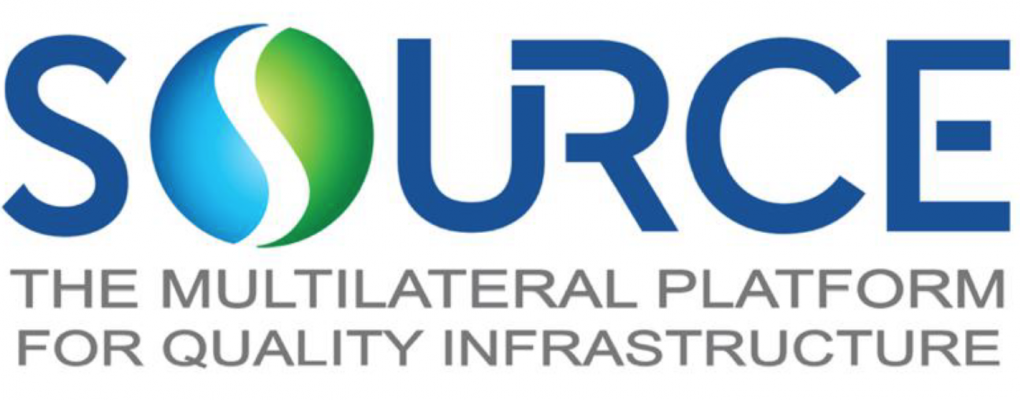
APMG International and Sustainable Infrastructure Foundation (SIF) have signed a Memorandum of Understanding (MoU) for the APMG PPP Certification Program.
SIF, a not-for-profit Swiss foundation headquartered in Geneva, coordinates the provision of SOURCE, the multilateral platform for quality infrastructure, it is now aligned with the APMG PPP Guide on project preparation, facilitating public agencies to take sound decisions and better allocation of resources.
The standardized templates available on SOURCE include the APMG PPP Guide’s best practices across all project preparation stages in tooltips and checklists. While SOURCE is a multilateral platform regularly updated with the latest international best practices, it can be adapted to local regulatory contexts and connected to existing country-specific management information systems.
By participating in an APMG PPP Certification Program and using SOURCE as a mechanism to prepare the case for sustainable infrastructure projects, public sector officials will obtain the following benefits :
Increased likelihood of developing and implementing a successful PPP program that delivers the right projects effectively and efficiently, providing Value for Money solutions for social infrastructure needs, and measuring progress on the Sustainable Development Goals and Paris Agreement via the SOURCE platform.
Facilitated access to global investors on SOURCE following internationally recognized best practices as set out in the PPP Guide, including the UK's Five-Case model, OECD’s PPP principles, IaDB's Sustainable Infrastructure Framework and the Global Delivery Challenges. Enabling governments to attract private sector participation in their PPP programs, while achieving Value for Money with a positive impact on society and the environment;
Reinforced knowledge transfer to public officials and their advisors from a vast pool of international PPP experience, and by sharing lessons-learned amongst organizations using the SOURCE platform.
Easier access to technical assistance from Multilateral Development Banks and affiliated international organizations via the “PPF Finder” functionality on SOURCE
Improved quality of project preparation thanks to the “Consistency Checks” functionality and the Global Infrastructure Hub (GIH)’s “PPP Risk Allocation Tool” embedded in SOURCE.
“PPP investors, financiers, construction companies, infrastructure operators, as well as advisors and consultants will also benefit from an appropriate understanding of infrastructure requirements in emerging markets via the SOURCE public pipeline once information is published by governments,” says Pierre Sarrat, Chief Operating Officer, SOURCE.
“This is a great partnership. APMG’s PPP Certification Program and the SOURCE platform will improve the capability of governments to fill the global infrastructure gap, not only by empowering public officials and their advisors to develop efficient and sustainable PPPs, but also by promoting private sector understanding and confidence in PPP programs, especially in developing economies,” says Richard Pharro, CEO, APMG International.
The PPP Certification Guide identifies the underlying principles and good practice elements that are applicable in most circumstances for emerging markets and developing economies, while recognizing local variations.
About the PPP Guide
The PPP Certification Guide is an innovation of the Asian Development Bank (ADB), the European Bank for Reconstruction and Development (EBRD), the Inter-American Development Bank (IDB), the Islamic Development Bank (IsDB), the World Bank Group (WBG) and part funded by the Public-Private Infrastructure Advisory Facility (PPIAF) with a shared vision of enhancing PPP performance globally.
Since the inauguration of the scheme in June 2017 over 5500 candidates from 125 countries have taken an APMG PPP Certification Program exam. One of the main goals of the program is to share best practice knowledge and make it freely available to everyone. The PPP guide is now available in eight languages to make it accessible to even more PPP practitioners.
Over 2 million visitors have downloaded or accessed the PPP Guide online, which uses principles and models to convey knowledge across a range of subjects including planning and funding, tendering, contracts, operating and maintaining projects.

Alicia Holbrook
As Head of Marketing for APMG International I work closely with the World Bank Group, the MDB's and the PPIAF to help PPP professionals access best practice information.

The first CP3P Professional level training course (Preparation level) in Russian language was organised by IFC, and delivered by PPP Experts Ltd,to the PPP Development Agency Ministry of Finance of the Republic of Uzbekistan.
Sarvar Tilabov, Leading Specialist, PPP Development Agency Ministry of Finance of the Republic of Uzbekistan commented upon the training, “We particularly value that apart from the skilful delivery of the CP3P syllabus to a 100% pass rate for both exams, the accredited trainer Sergey Samolis and his colleagues provided so much more valuable knowledge on PPPs, project finance and mega project management to the programme participants. Using in-depth local case studies, taking advantage of their profound experience in PPPs and making it a highly enjoyable and exciting experience, APMG CP3P training became an important factor for moulding the first generation of PPP professionals in Uzbekistan”.
Tilabov continues, “The understanding of PPPs and skills that the first cohort of CP3P professionals in Uzbekistan developed helped many of them in terms of career progress, putting them in critically important positions for the development of the PPP framework and driving first PPP projects in Uzbekistan. We are confident that the CP3P programme is the best vehicle for enhancing the public sector capacity for delivery of PPPs efficiently in our country.
Moreover, we admire how quickly and efficiently IFC, PPP Experts, and APMG rose to the challenge of the COVID-19 crisis and enabled the online competition of the CP3P Preparation training and exam for the Government of Uzbekistan”, says Tilabov.
In 2019-2020 all 42 delegates from Uzbekistan successfully passed the CP3P Foundation exam, and 19 of them also completed successfully the Preparation training and passed the exam. Accredited Trainer Sergey Samolis said, “The APMG Certification Program has proved to be a valuable tool for building PPP capacity in emerging markets. We delivered Russian language CP3P training courses of the first two levels to circa 150 participants from Kazakhstan, Kyrgyzstan, Russia, Ukraine and Uzbekistan with 100% exam success rate. Now that the Execution level materials are also available in Russian, we hope to see many fully certified PPP Professionals in Eastern Europe and Central Asia.”
One of the Preparation course participants with prior PPP experience - Remir Mukumov was Senior Advisor to the Minister of Finance, who put together two learning cohorts and provided valuable insights during the Uzbekistan Preparation level training, linking the CP3P Guide recommendations with the context of Uzbekistan PPP framework and nascent projects pipleline. "It is really rewarding to see the CP3P learning almost instantly used by course participants in real PPP projects," says Mukumov. He continues, "For each course the trainer and candidates establish chat groups, which stay very much alive after the course is over. We respond to our graduates' questions, they share career updates, discuss PPPs and look for work opportunites. Basically, it is a vibrant international community of Russian-speaking certified PPP professionals."
“The adoption of the APMG PPP Certification Program in Russian will go far to help practitioners deliver maximum value for money throughout the PPP lifecycle,” said Imad Fakhoury, Director of Infrastructure Finance, PPPs & Guarantees at the World Bank. He continued, “We’re pleased to know that our work to promote consistent good practices in PPPs continues to expand globally.”
All three levels for the APMG PPP Certification Programme are available in Russian language thanks to the efforts of IFC, who contracted PPP Experts Ltd to do the adaption into Russian language, in cooperation with the Swiss SECO and Austrian BMF. The PPP Guide, a FREE downloadable resource, is now fully available in Russian language to help candidates prepare for the PPP Certification Program.
The Execution exam is scheduled to be launched in 2020 which will complete the program, enabling Russian PPP practitioners to study all three levels of the program to become CP3P.
To access chapters of the PPP Guide in Russian and to book an exam, click here: https://ppp-certification.com/ppp-certification-guide/russian
To receive further updates on the PPP Certification Program, please subscribe to our newsletter via the PPP website (https://ppp-certification.com/) or follow our LinkedIn pages (https://www.linkedin.com/showcase/apmg-public-private-partnerships/ and http://linkedin.com/company/ppp-expertise-eurasia)

Alicia Holbrook
As Head of Marketing for APMG International I work closely with the World Bank Group, the MDB's and the PPIAF to help PPP professionals access best practice information.

We received several questions from delegates during the 'PPPs and Covid-19 Webinar.' The panel has provided the following written responses.
The full recording of the webinar is now available on YouTube.
Answers by Natalia Korchakova-Heeb, Managing Director SDG.17 Consulting GmbH, leader PPPHealth4All
Q. What are the business opportunities in post-Covid world?
A. The business opportunities in post-Covid world are connected to:
1) Digitalization. Successful businesses will have a combination of resilience and agility and will have to digitalize their services wherever is possible and this is also applicable to the public partners. Digitalization of processes and creation of digital services will be more and more in demand and I personally see a lot of business opportunities especially for PPPs in the healthcare sector. Digitalization of processes in PPPs in the healthcare sector improves availability and 24/7 monitoring, so reducing unavailability risk.
2) Use of new technologies for PPPs. New technologies (e.g. artificial intelligence, blockchain, big data, drones, BIM/ digital twins for PPP infrastructure projects) enhance the resilience and create new business opportunities. The benefits include improved performance and cost reductions.
3) Innovative PPPs. As far as the health sector is concerned, the investments in digitalization of healthcare projects are often undertaken with PPPs. PPPs are applied for m-health, e-health, telemedicine and health information technologies.
I have also mentioned today in my presentation that more multi-stakeholder approaches are necessary during and after COVID-19 pandemic to mobilize stakeholder ecosystems in the case of emergency or a need to provide a quick response. "Platform-approach" and “platform" as a service is a new business trend.
Answers by David Baxter, International Development Consultant, PPP Navigator
Q. Will risk assessment reverse cost of PPPs?
A. It will be increasingly important to revisit risk allocation and make sure that it is allocated to the relevant party - the one part that can mitigate this. If allocated to the wrong party there is a great risk of failure and then an increase in project cost. It will be important to revisit what is meant by force-majeure as well and who is responsible for a catastrophic force-majeure event impacts. In the current situation where both the public and private sectors are impacted it might not be wise to allocate it to one party, especially in Black-Swan events. It will be important to clearly define what a pandemic is so that it can be addressed in all existing contracts. The onus cannot be placed on the private sector on its own as they are reeling from impacts. PPP projects cannot fail because of bad force-majeure risk decisions on risk. There will be a cost to evaluate projects, but it will fix future problems. We need to revisit risk assessments and consider retro-reallocating them.
Q. What are mechanism for gov to support new projects?
A. We have two scenarios - short term - we need innovative procurements to address critical issues and needs now. In long term projects - there will be a need for revising projects and deciding which projects are a priority - we will need projects that offer value for money and consider People First PPPs. New feasibility studies that address Sustainability and resilience will be critical considerations for new PPP projects or they should not be considered.
Q. Do we have scenarios with Covid-19 situations? What are the implications?
A. We have short, medium, and long-term scenarios.
Short-term are the rescuing actions. This includes avoiding unnecessary disputes, setting up project round tables that are focused on solving problems and include solutions that are forward looking.
In the medium term we need to look at applying lessons learned, and revisiting enabling environments - are they conducive to mitigating future events,
In the long term we will need to revisit projects for commercial and economic viability. This means that future projects will have to have a people focus and must have elements of sustainability and resilience. In the long term governments will need to revisit their PPP projects and chose ones that carry merit in the post-covid-19 world. This will require the cumulative reallocation of the public and private sector resources towards meritorious projects.
Q. How can businesses help those suffering from the impacts of Covid-19?
A. There are a variety of PPPs that range from philanthropy to structured contractual agreements, Philanthropic partnerships can offer arrangements where companies (which have corporate social responsibility programs) can reach out to the public to help with recovery from the pandemic impacts. Formal PPPs have a great area for making impacts in healthcare and food security initiatives. It will be important to find innovative applications of technology through APPS that can improve food-supply chains, tracking of needs and delivery of essential services in partnerships between the public and private sectors. Innovation will also help create PPPs in countries like the USA where the healthcare system is privatized and not accessible for all. What would be important would be for the public and private sectors to come together to bridge investment and resources gaps by sharing resources and leveraging their expertise.
Q. What sectors would benefit the most from using PPPs in a post-covid-19 world?
A. It needs to be determined by country specific needs. They will need to be tied to countries specific SDGS. Education will be a big focus- especially in the area of delivering education remotely while students cannot attend classes. This will require the sharing of ideas and innovations of the private sector tech providers in partnership with public education systems. This will require collaborative PPPs where the resources of both parties are leveraged. In order to expedite such agreements during the pandemic, governments should explore ways to expedite procurement of projects to support critical PPP projects, in the heathcare, education, and WASH sectors. This could include developing prequalified pools of providers who have proven that they can be good PPP partners. Agricultural outreach programs that improve food security should be considered (i.e. strategic food storage warehouses). Supporting WASH projects and prioritizing them should be considered as bad sanitation will lead to the spreading of pandemic diseases. Until economies recover, more popular PPP projects such as transportation should be put on the back-burner. Affordability of projects will most certainly be a consideration that could also see mega-projects being put on hold.
Q. Do you see less appetite for emerging markets from investors and developers in the short and long term?
A. Investors will continue to be interested in projects that are well structured. Governments are going to have to do a better outreach to the private sector through market sounding to find out what types of PPP projects the private sector is interested in. The private sector will be watching how governments handle the crisis in their PPP markets and this will determine the private sectors interest in re-entering markets in the post-covid-19 era.
Q. What lessons are to be learned from the impact of the pandemic and what to do in future if faced with a similar situation? See combined response.
A. Current events have proven that most countries healthcare systems are not resilient to pandemic shocks due to poor integration of their healthcare systems - both nationally and internationally.
Healthcare preparation for shock events was non-existent and was under estimated in PPP force-majeure clauses in contracts.
What is critically needed are partnerships between the public and private sectors that address short-, medium-, and long-term challenges.
PPP recovery strategies should implement short-, medium-, and long-term phased actions that build on enduring partnerships that encourage robust relationships between stakeholders. We most certainly need to identify long-term corrective strategies that will address future Covid-19 type virus pandemics that many epidemiologists believe could become increasingly common due to long-term PPP contracts (20+ years)
We should explore building a holistic PPP healthcare ecosystem - at both national and international level for pandemic events
The longer the required commitment of the PPP partnership, the more formalized the relationship between the public and private sectors needs to be to ensure longevity.
In centralized national healthcare systems, partnerships should focus on creating healthcare enabling environments that allow the private sector to be meaningful partners and a back-up to the national healthcare system (e.g. private hospitals being incentivized to seamlessly align with national systems in a time of crises).
In privatized healthcare systems the focus would be different. In this case of the USA, for example, private hospitals could be incentivized to align themselves with the Veteran’s Hospital system as well as Department of Defense facilities in the case of national emergencies.
Stronger government led coordinated relationships supported by private sector innovators need to be established for existing and future project designing, planning, operations, and maintenance.
Longer-term and larger procurements (i.e. healthcare infrastructure) that are address ongoing long-term goals should undergo a more rigorous sustainability and resilience review that assesses them for value for money, commercial viability, and bankability.
All procurements should be competitive and transparent – with very few exceptions for emergency actions (this should apply to short-term actions only)
Flexible force-majeure requirements need to be included in PPP procurement terms and conditions so that healthcare PPPs are not exposed to punitive measures for missed deliverables which are not the fault of the operator
Reviews of long-term works, services, and goods must have an added filter that stringently applies sustainability and resilience into the required best practices
What is needed are robust and resilient PPP procurement systems that are flexible enough to respond to any unknown force majeure healthcare emergency.
It is important to avoid the current situation where institutions (both the public and private sectors) are pitted against each to procure emergency supplies and services “competitively.”
Answers by Marc Frilet, Managing Partner Frilet Société d’Avocats
Secretary of the UNECE PPP Center of Excellence Policies Laws and Institutions
Infrastructure and PPP expert French National Bar Council
Visiting professor Construction and Project Development University of Paris Pantheon Assas and Stuttgart
Q: Force majeure evolution In PPP; Who will be the beneficiary Public or Private?
A: Force majeure means that the loss lies where it falls and this may lead to drastic and inequitable consequences in PPP more particularly for Concession PPP. It is possible by contract to mitigate some negative consequence of force majeure. Many modern users fee PPP contracts for events like COVID permit to limit the private partner losses beyond a certain threshold by reference to the contract economic balance . The trend for restoring a minimum economic balance is guided by a joint interest of the PPP partners to continue to operate the public service in an equitable manner. No real winner or loser. Well drafted clause should permit to develop more resilient PPP.
Q: If dispute related to COVID how will local court will decide?
A: In practice very few PPP related disputes go to local court and I do not think that the Covid event will make exception. By nature many PPP projects which provide for public services cannot fail.
Renegotiation is the rule and modern approach to renegotiation by reference to the financial and economic viability of the project expressed simply with good indicators deserve to be considered in many PPP.
PPP contracts should better focus on dispute avoidance and make use of modern techniques .
The partnering process where representatives of the parties at different level meet on a regular basis around the table for exchanging in an organized and transparent manner on their respective views and issues on contract implementation is an efficient dispute avoidance tool.
For large and complex PPP Projects Dispute Boards comprising generally three authoritative person informed of all aspects of the project, exchanging with both parties and proposing equitable solutions to consider have a good track record for resolving disputes. It is recommended that the contract provides for Standing Boards meeting jointly the parties on a regular basis and providing advice even in the absence of Dispute.
When a dispute has crystallized PPP contracts should preferably refer the matter to arbitration administered by an experienced arbitration institution. Depending on applicable law and precedents additional reference may be made to equity or lex mercatoria.
Remember that with notable exceptions of some civil law countries local courts have very little experience and cannot rely on authoritative precedents on several cause of dispute specific to PPP.
Q: Many global multi-stakeholders platforms exist for PPP but it seems that none of theme is useful in reality. Are there any global or UN type platform to recommend?
I can mention the UNECE PPP Centre of Excellence program and related UNECE website. UNECE for several years now attempt to identify and promote the rules and best practices for developing resilient PPP meeting the SDG’s. UNECE promote the PfPPP delivery form to which I have contributed with the International PPP Centre of Excellence Policies Laws and Institutions. PfPPP for low and middle income countries is supported now by series of UNECE standards, best practices report and templates. Several of them have been endorsed by the UN member States and UNECE runs a program gathering State representatives and experts from around the world twice a year in Geneva.
Natalia also indicates good initiatives from WEF on how private sector help to combat COVID and she runs a platform on Healthcare PPP.
Q: What lessons learned for the design of flexible PPP contracts?
A: Many lessons have been learned already for the more complex and risky PPP contracts which are Concession PPP where the private partner recovers entirely or mostly from users fees. If the contract draws a wall between the parties allocating all identified risks in full to one or the other (ex-demand risk) there are many chances that the contract will become a pathologic PPP after few years .
Several modern best PfPPP contractual practices derives from the painful experience of the rigidity of many contracts mitigated by authoritative case law in civil law countries like France, Italy, Spain and Latin Amercica where according to UNECE over 2500 Concessions contracts are under way.
A UNECE program has addressed the PPP contracts flexibility issues digging into that bulk of experience leading to a list of inclusive contract clauses and guiding principles for Concession PPP for low and middle income countries .This document has been endorsed by the UN members States as recommended best practices .Several work stream toward the promotion of flexible and resilient PPP are under way.
Q: What advice to government in developing PPP market faced with fiscal limitation; How to use COVID 19 experience to better identify and develop projects within the fiscal crisis?
The fiscal crisis will further limit the potential to conclude PPP funded by public budgets.
It is worth to explore further how much it is possible to develop more contracts, which could trigger users fees in an acceptable manner for stakeholders. Several international development on the related methodology look promising. Of course users fee create some additional situations of risks and is unpopular in many circles but there are nowadays several possibilities to avoid, assign or share much better the risks such as COVID.
COVID may foster a real “partnership relationship” based on precedents inter alia from modern Concession PPP (PfPPP). The focus of such contracts start by the expression of common goals as part of the contract linked to set of clauses which permits to adjust some contractual obligation impaired by the disruptive events. This may include changing needs and scope of service for best continuity in the delivery of the service and satisfaction to end users. The contract sets the framework for a real partnership process having some flavor of company law. The practice has developed various set of economic and financial references to facilitate the making of such “collaborative decisions” when necessary.
Q: What are the lessons learned given the impact of the Pandemic? What to do different faced with similar situation in the future?
A: Allow me to propose a bullet point answer by referring to existing PPP contracts and more particularly on PfPPP which is the PPP delivery form initiated and developed by UNECE with the support of the PPP Specialized Centre of Excellence in Policy Laws and Institutions. The Center has produced several analysis, reports and templates related to sustainability and resilience of PPP focusing on the PPP contract itself and more precisely for contracts where the private party undertakes to design, build or rehabilitate, finance and operate a public infrastructure which is the support of a public service.
It is fair to say that so far such contracts are not equal when an unforeseeable event occurs preventing performance or rendering performance excessively onerous with the risk of bankruptcy of the private party.
Since PfPPP are designed to meet public needs represented in most cases by the delivery of an essential economic public service several jurisdictions around the world (from Napoleonic Civil law tradition) have developed pragmatic and authoritative case law principles for such « Public Contracts » ( in addition to traditional Force Majeure limited relief) by reference to the contract economic viability as anticipated by the parties upon contract signature and applying to PPP contracts. The case law generally refers to Hardship. Hardship together with several other equitable underlying principles for public contracts is an implied term which mitigates substantially the risks of the private party in case major change of the « economic landscape » while permitting to adapt the contract to new unexpected conditions of various kind. As such the private party facing an excessive loss endangering its survival can rely on Hardship and require the public Party to the contract to restore the « economic balance » of the contract up to a certain threshold notwithstanding the absence of contractual clause to this effect.
Concession PfPPP (ie situation where the private party undertakes to provide directly the service to end users and to recovers entirely or mostly from them) have been developed under the shelter of the above principles in Napoleonic Civil law countries. The parties to modern concession PPP have further developed in their contracts those underlying equitable principles inter alia by reference to the project economic and financial scenario updated in accordance with a Project Acccounting Plan and key economic indicators. Those provisions are becoming more and more usual and often referred to in contract negotiations since they permit to continue the delivery of the public service and to adapt it to new circumstances with a cost minimized for the array of stakeholders involved.
The lessons learned from this pragmatic approach in modern Concession PPP, where the parties know in advance that unknown factors will occur that they cannot foresee and organize a contractual method to adapt the contract with includes often a structured partnering process, can be adapted to many infrastructure and PPP contracts around the world .
In order to disseminate such practices for improved PPP resilience the UNECE International Centre of Excellence has drafted an inclusive list of clauses and guiding principles for Concession PfPPP contracts meeting the SDG’s submitted to the UNECE Working Party of Public Private Partnership in November 2017 (ref UNECE website). This document compiles and summarizes many similar balanced clauses from existing Concession PPP projects irrespective of countries and sectors. Pending a more detailed set of contractual conditions under preparation it is designed to become the basis of the contract conditions in bidding documents or used as reference to the negotiation table.
I hope that this information should at least partially answer your question; what to do different faced with similar situation in the future?
Answers by Mr Thibaut Mourgues, PPP Consultant, 4IP Managing Partner
Q: What will be the impact of Covid-19 on PPP investments? Will private sector cut back participation?
A: Investors will use more stringent criteria to assess projects viability. Because investors have become more risk averse, projects will need to be better prepared with stronger security packages and limit economic risk, especially in those sectors that are more particularly exposed to the downturn such as air transport or tourism. That being said, all stakeholders should sit around the table and develop innovative financing structures such as blended finance with the support of international financial institutions. Anyhow, some projects that were considered viable before the crisis will have to be reconsidered. Pipelines will need to be reassessed toward prioritization of those projects that have best chances to be implemented.
Q: How can businesses most effectively help the millions living below the poverty line who are particularly suffering from the crisis caused by Covid-19?
A: This question would deserve detailed comments but in a nutshell I would suggest as follows:
The most effective answer to poverty is job creations. Government should adequately value the criteria of job creations and particularly local job creations when assessing PPP bids or awarding contracts. Businesses should further train their employees to help them grow and acquire marketable skills.
Businesses should also develop social programs whenever appropriate. Such programs should be aimed at helping to provide basic infrastructure and services in their area of operations to support the local communities
I also believe in corporate social responsibility, which should entice businesses to participate in philanthropic activities in line with their capacities and resources, even though philanthropy is rarely a long term solution to poverty issues.
In a well-functioning market economy, most basic needs are catered by businesses according to the law of supply and demand. Governments have to make sure that the playing ground is not unduly biased and favours investment projects that will increase the society standard of living and create sufficient and sustainable quality jobs.

Alicia Holbrook
As Head of Marketing for APMG International I work closely with the World Bank Group, the MDB's and the PPIAF to help PPP professionals access best practice information.

(Please scroll down for English translation)
PPP資格認定プログラムが日本語でスタート
APMG のPPP資格認定のための試験が日本語で受けられるようになった。これまでは、PPP資格の認定は、英語、中国語、スペイン語、フランス語、ブラジス系ポルトガル語、ロシア語、セルビア語の7 か国語で試験を受けられるようになっていたが、これに日本語が加わることになった。APMGは、PPP資格の基礎試験のテキストとなるPPPガイドの用語集と第1章を2018年12月に日本語で公開していたが、このテキストを活用した試験がようやく日本語で受けられるようになった。
PPP認証プログラムは3つの試験:基礎試験、事業準備試験、及び事業実施試験で成り立っており、基礎試験は、残り2つの試験を受験する前に合格しておかなければならない必修の試験である。3つ全ての試験に合格した受験者は、CP³Pのデジタル認証を獲得し、ソーシャルメディアで共有することによって、認定PPP プロフェッショナルであることを証明できるようになる。
日本語翻訳を担当したクラウンエイジェンツ・ジャパン株式会社(CAJ)PPP事業部の熊谷弘志シニア・アドバイザーは、以下のように述べている。
2014年に日本政府は、日本の政府開発援助(ODA)の無償資金を活用し、発展途上国におけるインフラ・プロジェクトの開発を促進するハイブリッドスキーム(Joint Financed PPP)である「事業・運営権対応型無償資金」を導入しました。CAJは調達代理機関として、日本政府の無償資金を活用し被援助国政府の代わりにPPP事業を発注しています。このPPP事業の発注においてCAJはグローバルスタンダードのPPP事業を促進するためにCP3Pガイドを活用しています。
日本には、PFI法(Act on Promotion of Private Finance Initiative)と呼ばれる法律があります。この法律に基づいて、PPPガイドに記載されているPPPの定義とは異なった民間移転リスクが殆ど無いPPP事業が促進されていることは国際的にはあまり知られていません。具体的には、ファイナンス・リースで施設整備をしたり、公共が施設を所有したまま当該施設の運営権を民間事業者に設定し、その運営権を担保に金融機関から借り入れができる日本特有のコンセッション方式が法律上規定されていたりします。そのため、日本における国際PPP事業に海外のPPP経験の豊富な専門家が参画しようとしても、これらの日本のPFIの特殊性のために、その専門家の知見が活用できる形で事業に関与できないという話が聞こえてきます。
日本では、このような民間へのリスク移転が少ないPPP事業が制度化されているため、PPP事業における事業破綻のケースが極めて少ないというメリットもあります。しかしながら、結果的に、適切な事業リスクを民間に移転する仕組みが不要であるため、リスク移転の仕組みを構築できる専門家が活躍できません。
このような事業背景の中で、日本政府が「質の高いインフラの海外展開」に向けた景気促進施策を打とうとしていますが、インフラ整備ニーズの高い途上国政府が求めているのは、適切にリスクを民間に移転するために民間投資を求めるグローバルスタンダードの民間投資型PPP事業です。ところが、リスクのない日本のPPP事業で育った事業者は、適切なリスク移転の仕組みの検討までも放棄してしまう傾向があることから、案件形成がうまくできないという課題が生じています。
CP3PのFoundation Examの日本語版の試験が可能になったことにより、世界標準の適切な民間リスクの移転に基づいたPPPの理解が促進され、そして、PPPの専門家が育成される機会が増えることによって、民間への適切なリスク移転が行われるPPP事業が促進されると考えています。このようなGlobal StandardのPPP事業の促進によって、適切なリスク移転を構築するPPPの専門家と、適切なリスクを民間投資によって積極的に取りに行く事業者の育成がすすみ、日本のPPP事業をグローバルスタンダードへ転換させる原動力となれば、結果として、質の高いインフラの海外展開にも繋がっていけるのではないかと期待しています。」
世界銀行のインフラストラクチャ・ファイナンスPPPs&保証担当のディレクターであるImad Fakhoury氏は、以下のように述べている。
「APMG PPP資格認定プログラムの日本語翻訳によって、PPPの実務に携わるより多くの人たちにベストプラクティスについての洞察を得る機会がもう一つ与えられたことになります。これによって、世界中の人々に高品質で柔軟性のあるサービスが提供できるようになるでしょう。」
PPPガイドについて:
CP3Pガイドは、アジア 開発銀行(ADB)、欧州復興開発銀行(EBRD)、米州開発銀行(IDB)の多国間投資基金(MIF)、イスラム開発銀行(IsDB)、世界銀行グループ(WBG)および官民連携インフラストラクチャー・アドバイザリー・ファシリティ(PPIAF)が一部の資金を拠出して開発されたものである。このガイドによって、PPP事業に対するアプローチが標準化され、PPPに関連するさまざまなテーマが均等にカバーされ、持続可能な事業の実施体制が確保されることが期待されている。
APMG Internationalについて:
APMG Internationalは、受賞歴を持つ世界的な試験実施機関であり、知的専門職として必要とされる認定が必要な専門資格の幅広いポートフォリオを有している。APMGの認定資格は、個人または個人が所属する組織が、より効果的に機能するために、スキル、知識、ツール、および技術を備えることができるように、個人向けのキャリアデザインを目的に設計され提供されている。
さらに、APMGは、世界中の個人または組織に、認定を支援するための質の高いトレーニング及びコンサルティングサービスを提供する認証サービスも行っている。
品質をコミットするために、APMGの認証及び認証プロセスは、英国認定サービス(UKAS)の認証を受けた信頼できる品質管理システムに従って開発され管理されている。
ENGLISH TRANSLATION
The PPP certification programme started in Japanese
APMG's PPP certification exam is now available in Japanese. Previously, PPP qualification exams were available in seven languages: English, Chinese, Spanish, French, Brazilian Portuguese, Russian and Serbian, Japanese became the eighth language. APMG released the PPP Guide’s “Glossary” and “Chapter 1” as the text for the “foundation exam” of the PPP certification in December 2018 in Japanese, but the foundation exam using this Japanese text is finally available in Japanese.
The PPP certification programme comprises three examinations; Foundation, Preparation and Execution, and the Foundation Exam is the pre-requisite for sitting the two higher level exams. Chapter 1 of the PPP guide and the Glossary are the core reading materials for candidates taking the Foundation Level exam. Candidates who sit all three exams can collect their CP3P digital badge to share on social media demonstrating that they are a Certified PPP Professional.
Hiroshi Kumagae, Senior Advisor of PPP Division of Crown Agent Japan Limited (CAJ), who was engaged in the Japanese translation, said:
"In 2014, the Government of Japan launched a hybrid financial scheme (Joint Financed PPP) called “Grant Aid Assisted Concession (GAAC)”. This scheme uses Japanese ODA grant assistance to promote the development of infrastructure projects in developing countries. CAJ, as a procurement agency, uses the Japanese Government's grant assistance to issue public tender of PPP projects on behalf of the recipient country government. To promote the global standard PPP in the GAAC scheme, CAJ uses the CP3P Guide for reference.
In Japan, there is a law called “The Act on Promotion of Private Finance Initiative (PFI law)”. It is not known internationally that this law promotes PPP projects with little risk transfer to the private sector, which is different from the definition of PPP in the PPP Guide. For example, there are rules to permit finance lease scheme, and there is a legally stipulated Japanese style concession scheme that enforce the ownership of the public facility on public sector and secure the right to use such public facilities by the private sector as collaterals in project loans. For this reason, it has been heard that even if international experienced PPP experts try to participate in the international PPP project in Japan, such peculiarity of the Japanese PPP prevent to participate in the project in a form that they can utilize their expertise.
In Japan, the PPP project with less risk transfer to the private sector is institutionalized. This is the advantage that the number of project failure in the PPP project is extremely small in Japan. However, PPP risk transfer mechanism is not required, PPP contract can be concluded without PPP experts who knows how to transfer the appropriate risk to the private sector.
In such circumstance, the Government of Japan is trying to attempt economic promotion measures of "overseas high-quality infrastructure development strategy ". The governments of developing countries which need public infrastructures are seeking for the global standard PPP with private investment which can transfer certain public risks to the private sectors, however Japanese contractors who nurtured in no risk PPP tend to avoid to develop even appropriate risk transfer mechanism, so project formation is not easy.
The availability of the CP3P Foundation Exam in Japanese will facilitate the understanding of PPPs based on the appropriate risk transfer to the private sector. Then such opportunities for the development of PPP projects will nurture PPP experts. In addition, the promotion of global standardized PPP projects with appropriate risk transfer to the private sector will nurture private operators who will actively take appropriate risk. These PPP experts and risk-taking private operators will be the driving force to convert Japan's PPP project to a global standard, and Japanese high-quality infrastructure development is expected to be expanded overseas. "
“The translation of the APMG PPP Certification Program into Japanese is an opportunity for more PPP practitioners to gain insight into best practices that help deliver quality and resilient services to people around the world” said Imad Fakhoury, Director of Infrastructure Finance, PPPs & Guarantees at the World Bank.
About the PPP Guide
The PPP Certification Guide is an innovation of the Asian Development Bank (ADB), the European Bank for Reconstruction and Development (EBRD), the Inter-American Development Bank (IDB), the Islamic Development Bank (IsDB), the Multilateral Investment Fund (MIF), the World Bank Group (WBG) and part funded by the Public-Private Infrastructure Advisory Facility (PPIAF) with a shared vision of enhancing PPP performance globally.
About APMG International
APMG International is an award-winning, global examination institute that offers a broad portfolio of professional certifications for knowledge-based workers. APMG certifications are designed to provide professional career development for individuals, equipping them with the skills, knowledge, tools and techniques to help them and their organizations perform more effectively.
In addition, APMG provides accreditation services for individuals and organisations around the world that provide high quality training and consultancy services in support of our certifications.
Committed to quality, APMG’s certification and accreditation processes are developed and managed in accordance with a robust quality management system accredited by the United Kingdom Accreditation Service (UKAS).

Alicia Holbrook
As Head of Marketing for APMG International I work closely with the World Bank Group, the MDB's and the PPIAF to help PPP professionals access best practice information.
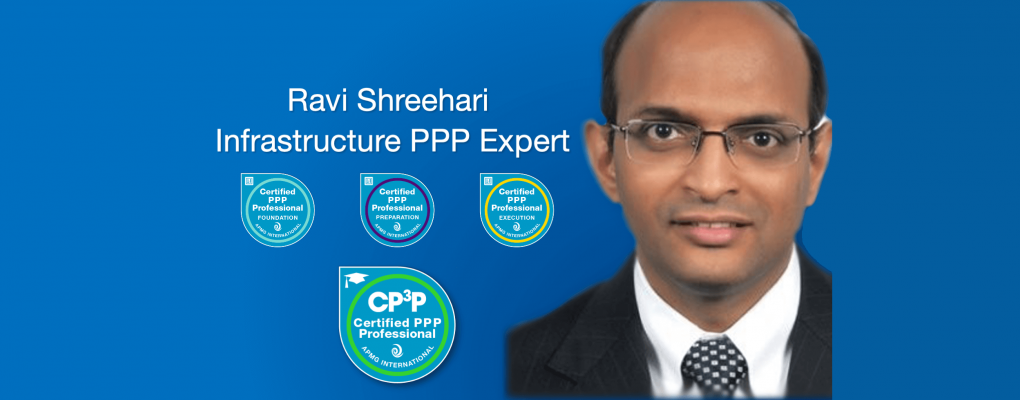
Alas!! I can now proclaim to be a “Certified PPP (CP3P) Professional”. I recently completed the CP3P Foundation, Preparation & Execution levels under the APMG PPP Certification Program. This program was developed in partnership with MDBs Asian Development Bank (ADB), the European Bank for Reconstruction and Development (EBRD), the Inter-American Development Bank (IDB), the Islamic Development Bank (IsDB), the World Bank Group (WBG) and part funded by the Public-Private Infrastructure Advisory Facility (PPIAF) with a shared vision of enhancing PPP performance globally.
My experience background: 20+ years in PPP projects over varied sectors viz. roads, tunnels, bridges, automated car park, education, metro rail, airport, sports stadium and commercial building, across countries - India, China, Philippines, Indonesia, UAE, Qatar, Ukraine, Nigeria, Kenya, Senegal, Botswana, Colombia, Mexico and USA. Over these years, I have worked over numerous ventures in nearly all stages of PPPs i.e. Drafting PPP framework, project identification, project appraisal, project structuring, risk assessment, concession agreement drafting, bid participation & negotiations, financial closure, project construction and project O&M. I have been able to work in all these stages of a PPP cycle given my cooperation with public sector & participation in private sector – for setting up PPP framework, Project documents drafting, bid submission, acquisition in PPP projects and implementation across several projects.
CP3P Program:
With my experience, one would need to believe that passing the CP3P examination ought to be a cakewalk. I thought of it to be the same, but, I was wrong. While the Foundation examination touches upon briefly all aspects of PPP, the level 2 (Preparation level) & 3 (Execution level) examination places the examinee in the decision making position for a specific project situation, to test the candidates’ knowledge to the specified subject. Hence, passing the Foundation level examination is a pre-requisite for attempting the Preparation and Execution level examination. Thorough understanding of every stage of PPP is absolutely vital to be able to answer the Level 1 and Level 2 examination questions.
The study material captures each perspective of PPP and is suitably bolstered with genuine project life examples and reference material well listed at the end of each chapter. This enables the reader to get a good and thorough understanding of the PPP cycle with guidance material to clarify any further doubts. The study material is a valuable document which can be used as a ready reckoner for all practical purposes with modifications as per jurisdiction & local laws. For starters, I would strongly recommend to take time to read & understand every chapter thoroughly and prepare short notes. While the study material captures in detail on activities to be fulfilled (with a check list) while preparation & execution of PPP project from a Government perspective, the checklist should be incorporated by private sector as part of their corporate governance while undertaking Project due diligence to shortlist the project for participating in the bid process.
Need for CP3P Program
After reading the study material, I have learnt usage of some concepts & terminologies, which I would earlier otherwise use very loosely assuming all words to be similar – for example, the word “funding” & “financing” has been used for specific purposes, similarly - CBA & VfM, etc. Having read the study material and passed the three levels, I believe to be in a better position in being able to communicate through a unified PPP language i.e. in utilizing the right word in the right context so as to avoid any misunderstanding or even lack of understanding while communicating with other PPP professionals globally. Now, I also believe that standardization is necessary to align PPP practices internationally in order to deliver a well-structured PPP project successfully.
Conclusion
With the support of MDBs, this has been a big leap forward. I congratulate all stakeholders and contributors for drafting and implementing a precise & elaborative program. All in all, a very well thought out & devised certification program and informative webpage. Kudos to the team.
Suggestions
Study Materials: There is a free online training course which is basic but adequate. More sophisticated training is available from Accredited Training Organisations for a cost. MDBs and APMG should collectively approach PPP qualified professionals to seek suggestions in improving the program. This should include seeking feedback from Certified PPP (CP3P) Professionals. There is a comment box at the end of each Chapter of the guide to leave feedback.
Certification Requirements: Finally, I suggest MDBs to make it mandatory for a Certified CP3P Professional with a minimum PPP experience to be deployed for every PPP Project for the Project to be eligible for consideration for MDBs participating/support. This will drive a country PPP Unit and private sector to develop their staff with the required skill set under CP3P Program. Similar qualification/credentials should be made mandatory for a CP3P Examination trainer as well.

Ravi Shreehari
I am a Freelance Consultant & Director - Deal Advisory, Cities Forum, and have 20+ years in PPP projects over varied sectors viz. roads, tunnels, bridges, automated car park, education, metro rail, airport, sports stadium and commercial building, across the globe.
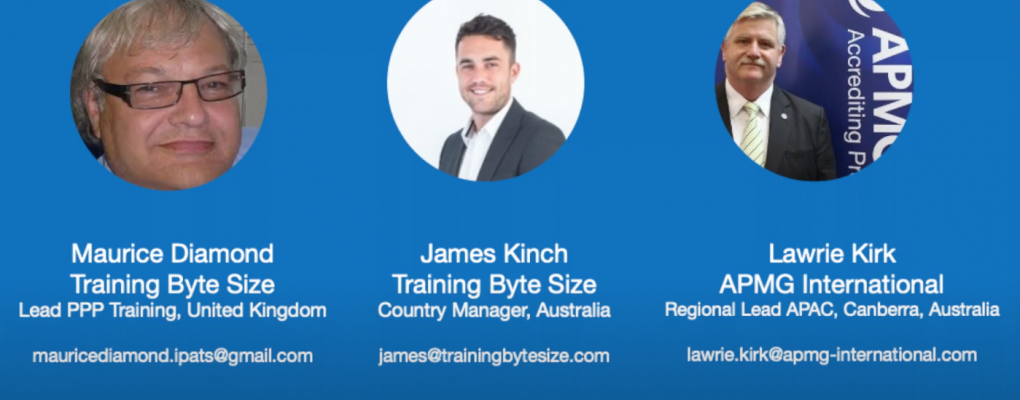
Interested in expanding your career into PPPs? This episode of APMG Midday Mentors is hosted by Lawire Kirk, Regional Lead APAC at APMG, and features guests James Kinch, Country Manager (Australia) of Training Byte Size, and Maurice Diamond, Lead PPP Training of Training Byte Size. Together they discuss how the need for Government and the private sector to work together is increasing, particularly when global resources are scarce, and how Private Public Partnerships (PPPs) are emerging as a way for this collaboration to be achieved.
Click here to watch on YouTube
Connect with James Kinch | https://www.linkedin.com/in/james-kin...
Connect with Maurice Diamond | https://www.linkedin.com/in/maurice-d...
Find out more about the CP3P certification | https://ppp-certification.com/

Alicia Holbrook
As Head of Marketing for APMG International I work closely with the World Bank Group, the MDB's and the PPIAF to help PPP professionals access best practice information.

CP3P is the definitive credential for PPP professionals
Over 7000 candidates from 167 countries are now APMG Certified Public-Private Partnership (CP3P) professionals, and more than two million visitors have accessed the PPP Guide.
The PPP Guide, which was authored and reviewed by 100 contributors from the global PPP community, is a comprehensive source of information for professionals who need best practice advice across the full PPP lifecycle. The PPP Guide is free to access and uses principles and models to convey knowledge across a range of subjects including planning and funding, tendering, contracts, operating and maintaining projects.
Why is CP3P certification important?
The financial impact of COVID-19 means that governments are likely to require more support from the private sector. With this increased requirement for borrowing and scarcity of resources, organisations want to be confident that they are hiring professionals with the competencies to structure investment-ready PPPs. The CP3P program and PPP Guide provide professionals with the tools to build capacity and deliver.
What are the challenges for CP3P in 2021?
The recently published World Bank Benchmarking Infrastructure Development 2020 summarises that the preparation phase of PPPs requires the most development. One of the barriers identified by the private sector is the lack of well-prepared projects which they can consider for investment.
The majority of PPP professionals only study at the foundation level. In order for PPPs to succeed there is an urgent need for professionals to enhance their skills in the preparation phase.
“The CP3P Preparation certification provides professionals with an understanding of the main tasks of identifying projects and preparatory activities to move forward in the PPP cycle. This includes how to draft the scope of a PPP, how to allocate institutional responsibilities for developing and procuring PPPs, and tendering best practice,” says Richard Pharro, CEO APMG International.
CP3P certified professionals are globally recognised as having the skills and knowledge to work on the full lifecycle of a PPP, from tendering and awarding the contract, to strategic delivery and commissioning—and finally operations and handback.
CP3P is a global program
There has been a strong global demand for training across the PPP lifecycle from organisations including private banks, government departments and construction companies. APMG Accredited Training Organisations have trained candidates working for a variety of organisations including Indonesia’s Ministry of Finance, the Government of Bermuda, the International Trade Center, Guateng Infrastructure Financing Agency, Bangladesh’s Road and Highway Department, and VIVEKA.
Exams have been sat in 167 countries. Top countries are:
- Brazil
- Republic of Korea
- South Africa
- USA
- Indonesia
- Nigeria
- India
- Spain
ENDS
About the APMG Certified Public-Private Partnership (CP3P) Program
CP3P and the PPP Guide can improve the quality of PPPs worldwide. PPP professionals around the world can access specialized knowledge and achieve a certification from a globally recognized program.
By helping to build a sounder knowledge around the management of PPPs as an option for governments to deliver basic infrastructure needs, the program intends to build capacity and knowledge access of professionals that are or will be working in their countries’ respective PPP programs, from government officials or their advisors.
The APMG PPP Certification Program is an innovation of the World Bank Group, the Asian Development Bank, the European Bank for Reconstruction and Development, the Inter-American Development Bank, the Islamic Development Bank, and partly funded by the Public-Private Infrastructure Advisory Facility with a shared vision of enhancing PPP performance globally.
Exams have been taken from candidates in over 167 countries and there are over 25 Accredited Training Organisations delivering the APMG PPP Certification Program. Exams are available in English, Brazilian Portuguese, Chinese, French, Japanese, Serbian and Spanish. Exams can be taken remotely online or in a classroom.
For more information please visit: https://ppp-certification.com/

Alicia Holbrook
As Head of Marketing for APMG International I work closely with the World Bank Group, the MDB's and the PPIAF to help PPP professionals access best practice information.

A new Climate-Resilient Infrastructure program has been developed by the Global Centre on Adaptation, with support from the Ministry of Infrastructure and Water Management of the Netherlands and in close partnership with the World Bank Group (WBG), the African Development Bank (AfDB), Asian Development Bank (ADB), European Bank for Reconstruction and Development (EBRD), Global Infrastructure Facility (GIF), Inter-American Development Bank (IDB), the Islamic Development Bank (IsDB), the Public-Private Infrastructure Advisory Facility (PPIAF), and UNOPS.
The program is intended to help build the upstream capacity of PPP practitioners to integrate climate resilience into infrastructure PPPs. Best practice support available includes the Climate-Resilient Infrastructure Officer Handbook, which is free to download, and a free online training course.
To become a certified Climate-Resilient Infrastructure Officer professionals will need to pass an online exam which is available from APMG International.
Learning Outcomes of the Climate-Resilient Infrastructure Officer program
The Climate-Resilience Infrastructure Officer certification is highly relevant for PPP professionals who want to make a positive impact. “APMG International developed this unique certification with GCA to provide professionals with the skills and knowledge to offer advice and deliver sustainable infrastructure projects using Nature-based Solutions. This certification will help professionals stay current and validate the skills needed to work on sustainable projects,” says Richard Pharro, CEO, APMG Group.
What you will learn:
• Understand key concepts around climate adaptation, risk and resilient infrastructure
• Identify the tools and capacity needed to enhance the resilience of infrastructure
• Articulate key policies governing climate adaptation, as well as financing and funding mechanisms for resilient infrastructure
• Understand the key interventions points to integrate climate resilience across the PPP project cycle
Supporting PPP practitioners to integrate climate resilience into infrastructure PPPs
Commenting on the launch, Patrick Verkooijen, CEO of the Global Center on Adaptation said: “The lack of resilient infrastructure harms people and economies. The launch of the Climate-Resilient Infrastructure Officers Program is an important step in building the capacity of public-private partnerships practitioners around the world as GCA continues to work with countries and partners to drive investment into resilient infrastructure on the ground.”
Imad Fakhoury, Global Director for Infrastructure Financing, PPPs and Guarantees at the World Bank said: “Service disruptions seriously undermine people’s safety and their very lives – in addition to affecting economies. The World Bank is making sure that climate adaptation is at the center of development discussions and that green, resilient and inclusive development is baked into infrastructure plans from the beginning.”
The Knowledge Module on Public-Private Partnerships is accessible to infrastructure planners, project developers, public contracting authorities and infrastructure financing institutions around the world directly involved in PPP projects. Through a reference handbook, an online course, PPP practitioners will be able to gain credentials as Climate-Resilient Infrastructure Officers through a certification exam with certification partner, APMG International.
The Global Center on Adaptation Infrastructure & Nature-Based Solutions Program in Africa and Asia will supplement the CRIO Program by providing targeted technical assistance and analytical support to assess and integrate climate resilience into PPP projects. This complements the work of the Public Private Infrastructure Advisory Facility of the World Bank which is investing millions in advisory resources in the coming years to benefit country partners by strengthening their ability to plan for resilience.
For more information about the Climate-Resilient Infrastructure Officer program visit: https://apmg-international.com/product/climate-resilient-infrastructure-officer-crio-certification
About the Global Center on Adaptation
The Global Center on Adaptation (GCA) is an international organization which works as a solutions broker to accelerate action and support for adaptation solutions, from the international to the local, in partnership with the public and private sector, to ensure we learn from each other and work together for a climate resilient future. Founded in 2018, the GCA is hosted by the Netherlands, working from its headquarters in Rotterdam with a knowledge and research hub based in Groningen. The GCA has a worldwide network of regional offices in Abidjan, Ivory Coast; Dhaka, Bangladesh and Beijing, China. Through this evolving network of offices and global and regional GCA teams, the organization engages in high-level policy activities, new research contributions, communications, and technical assistance to governments and the private sector.
About the Public Private Infrastructure Advisory Facility of the World Bank
PPIAF is the only global facility dedicated to building institutions in developing countries that set the stage for private participation in infrastructure and enabling finance for sub-national entities. The Public-Private Infrastructure Advisory Facility (PPIAF) helps developing-country governments strengthen policy, regulations, and institutions that enable sustainable infrastructure with private-sector participation. As part of these efforts, PPIAF promotes knowledge-transfer by capturing lessons while funding research and tools; builds capacity to scale infrastructure delivery; and assists sub-national entities in accessing financing without sovereign guarantees. Donor-supported and housed within the World Bank, our work helps generate hundreds of millions in infrastructure investment. While many initiatives focus on structuring and financing infrastructure projects with private participation, PPIAF sets the stage to make this possible.
About the APMG PPP Certification Program
The APMG PPP Certification Program and the PPP Guide will benefit PPP practitioners and can improve the quality of PPPs worldwide, while PPP professionals around the world can benefit from this opportunity to access this specialized knowledge and achieve a certification from a globally recognized program.
By helping to build a sounder knowledge around the management of PPPs as an option for governments to deliver basic infrastructure needs, the program intends to build capacity and knowledge access of professionals that are or will be working in their countries respective PPP programs, from government officials or their advisors.
The APMG PPP Certification Program is an innovation of the Asian Development Bank (ADB), the European Bank for Reconstruction and Development (EBRD), the Inter-American Development Bank (IDB), the Islamic Development Bank (IsDB), the World Bank Group (WBG) and part funded by the Public-Private Infrastructure Advisory Facility (PPIAF) with a shared vision of enhancing PPP performance globally.

Alicia Holbrook
As Head of Marketing for APMG International I work closely with the World Bank Group, the MDB's and the PPIAF to help PPP professionals access best practice information.

In this episode of APMG lifelong learning our CEO Richard Pharro has a conversation with Sergey Samolis, the founder and CEO of PPP Expertise Eurasia.
Listen to their discusion for free on Spotify covering a whole range of topics including:
- Changing a country's infastructure for the better.
- The real world impact of the CP3P course.
- How private funding isn't always synonomous with money, but efficiency.
- Sergey's industry secrets and the industry leading body of knowledge, CP3P.
We hope you enjoy this episode as much as we did, covering incredible anecdotes, real life implications and all important lessons to be learnt.

Ben Lancaster
APMG Campaign Manager

Stakeholders are described as ‘those groups and individuals who can affect, or are affected by the achievement of an organization’s (project’s) purpose’. This definition vividly limits stakeholders to human beings. Therefore, the natural environment is excluded from the definition even though it is most affected and affects sectors like construction or infrastructures. By externalizing and alienating the Mother Nature we close our eyes on what is ahead for she might be silent now but as steady as she goes, she will eventually outburst and deprive us of what she has while subtly taking our lives away from us! We might be disregarding her rights to speak for herself through strict definitions and clauses we have structured. Still, she will return the favor by providing us with volatile climate conditions, storms, floods, and droughts, causing us not only to lose environmental resources but also valuable lives now and in the future. You might find this writing a bit cynical, but Mother Nature is tired of our neutrality and taking the high road that leads to passive actions.
Why we need balanced stakeholder management
One thing coronavirus has taught us this far is that we all need to be seated at the table to be able to move forward effectively and gracefully to protect ourselves and humanity from unexpected future uncertainties. If we were to reimagine the wheel of life for stakeholder management, each part of the wheel could be assigned to a stakeholder. At the same time, their share is determined by their level of power and interest, and every loop of the wheel could be the steps of stakeholder management. In that case, we can see how flawed the omission of environment can be even if we could fulfill other stakeholders’ wishes to the max. As a result, the broken wheel of decision-making will not be moving as smoothly as we hope to. Thus, we need a balanced stakeholder management that involves and considers Mother Nature as one of its key stakeholders since she has both power and interest at higher levels.
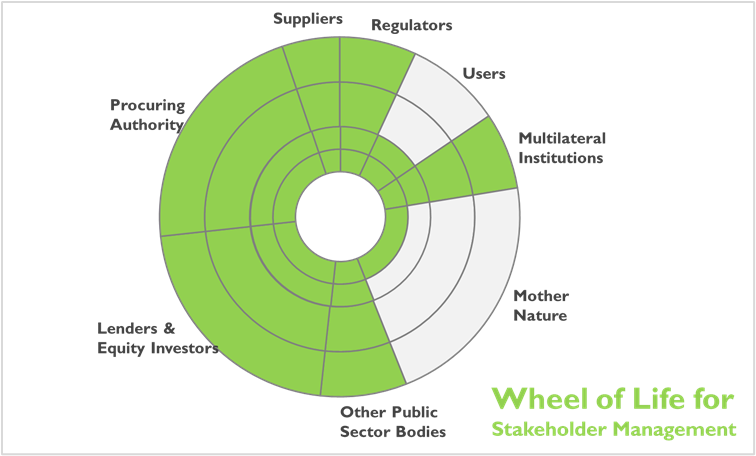
Any business and activity, including construction and infrastructure, lead to two types of costs: direct costs and external costs. The former should be paid for acquiring inputs -like land, labor, etc.- and processing the inputs to desirable outputs. This is the only cost considered in accounting profits. Hence, business managers are reluctant to pay any non-direct costs and attempt to impose them on other sharing parties, like the environment. The latter, external costs, are those associated with the harmful consequences borne by others (i.e., environment and society). The fact that we call them externalities speaks volumes about how we perceive our surrounding environment that encompasses our activities. Bob Willard argues that Mother Nature is our holding company, and if she goes broke, we will too. We call these cost externalities while they are deeply internalized within our business plans.
Mother Nature as a human stakeholder
When looking closely, we realize that the level of influence and ability to impact resources by Mother Nature is at its highest, and thus she becomes a key stakeholder. If Mother Nature was to be treated appropriately as a key stakeholder, there must be guidelines aligned with stakeholder management procedures undertaken for other stakeholders. A stakeholder management plan is used for “planning the engagement of stakeholders, developing strategies to reduce or eliminate resistance, and creating strategies to increase support and buy-in”. Therefore, the inclusion of Mother Nature in our stakeholder management plan comes down to convincing her that the proposed project is, at the least, not harmful for her. If we suppose that stakeholder identification is done and we have her as our key project stakeholder, there are challenges in analyzing her needs and expectations. The identification, consideration and involvement of necessary activities into the stakeholder management plan as well as considering time and costs added to the management plans while translating these actions into monetary values are among these challenges. Furthermore, there needs to be a mechanism in place to identify responsible parties for implementing these activities and their associated risks.
Now that we know the answers to who, why, and when (of course, the sooner, the better), we need to figure out the what and how. We believe giving back Mother Nature her crucial role is not that simple of a task and requires reinvigorating her as a human being by defining her body and soul. Inspired from the idea of socio-technical systems perspective on climate-affected infrastructures proposed in a recent knowledge module developed by the Global Center on Adaptation (GCA) in September 2021, “Climate-Resilient Infrastructure Officer Handbook”, her soul can be represented by a core team of specialist human beings to be seated at her table speaking her mind. However, defining her soul is not sufficient to empower Mother Nature as a human being and we should also think of her bones, muscles, and brain.
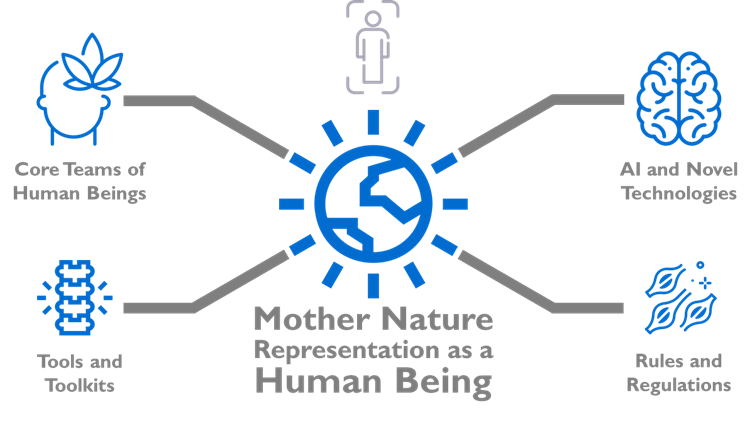
Tools and toolkits can be viewed as the ‘backbone’ for her existence, holding the structure of her body. For example, governments can utilize SOURCE in the initial stages of defining and developing, and managing PPP projects to facilitate early involvement of environmental issues through sector-specific sets of questions, ensuring well-prepared projects in a consistent and transparent way to the international community of contractors, investors, and lenders. Another tool recently developed by the Inter-American Development Bank, “Toolkit for Climate Resilient Infrastructure PPP” can also be viewed as the bones and joints that provide the flexibility to move and yet be stable in the movement. This tool can enable integration of climate risk mitigation, as well as utilizing opportunities to improve resilience through different stages of project lifecycle including project identification, business case, transaction structuring, and contract management.
On the other hand, climate-resilience rules and regulations can be thought of as the ‘muscles’ of Mother Nature’s body that help her move ahead smoothly and correctly. In that, transparency and proper governance can be thought of as an essential moving environment. These rules and regulations enable practitioners to prepare for when she is going to act out (climate change) through the integration of climate change considerations into PPP processes and advocate the utilization of proper tools and techniques.
However, these efforts might still not be enough in giving her a soul and a voice of her own and this is where Artificial Intelligence (AI) tools and methodologies come to the rescue, as her ‘brain’. We would like to leave it to your imagination about the paradigm shift in the infrastructure domain by AI and other novel technologies in the future.

Hossein Nourzad
Hossein Nourzad is an Assistant Professor of Infrastructure Management and a CP3P Accredited Trainer (authorized by APMG, the WB certification arm) working with Training Bytesize (UK), with 16+ years of experience in infrastructure projects and PPP, in specific. He also has extensive project management experience and expertise. As a senior consultant currently working with EQ Consultancy & Project Management, he has helped private companies in planning, preparation, and appraisal phases of infrastructures in transportation, water treatment and desalination, petrochemical, and industrial plants. Globally, he collaborated with United Nations Economic and Social Commission for Asia and the Pacific in writing a book entitled “Infrastructure Financing for Sustainable Development in Asia and the Pacific” released in 2019. Hossein’s major research concentrations include infrastructure sustainability and resilience enhancement systems, as well as novel infrastructure technologies, such as Blockchain, Digital Twins, and Artificial Intelligence. He is also the recipient of several international research and teaching awards from PMI, ASCE, and Drexel University.

Samira Mahmoudkelayeh
Samira Mahmoudkelayeh is a Ph.D. student of Project and Construction Management at the University of Tehran. Her work experience is related to planning, controlling, designing, and supervising construction projects in both the public and private sectors. In addition, as a Teaching Assistant and lecturer, she teaches several Architecture and Project Management courses. Her research interests include sustainability in project management, green buildings, sustainable construction, and infrastructure projects. In her MSc research, she developed a model to choose sustainable material, from which she published a peer-reviewed journal paper. Currently working in Smart-In Research Lab, she is collaborating on a research project to develop a Sustainability and Resilience Enhancement System for Infrastructures in developing and least developed countries. Additionally, she is interested in studying about women empowerment through sustainable project management.

Avin Laali
Avin Laali has graduated from the University of Tehran with a master's degree in Construction and Project Management. Her main research interests include the efficiency of infrastructure projects in BIM-based platforms in terms of sustainability and resilience, and infrastructure risk management. She is currently working on two articles on these topics in order to establish frameworks for automating the assessment and optimization of sustainability in infrastructure projects during the early design stages. In Smart-In Research Lab, she's also working on two projects related to her research interests involving innovative infrastructure technologies and sustainability evaluation systems, as well as her passion for improving people's livelihood around the world and specifically in developing countries through providing efficient, sustainable, resilient, and gender inclusive infrastructure services.
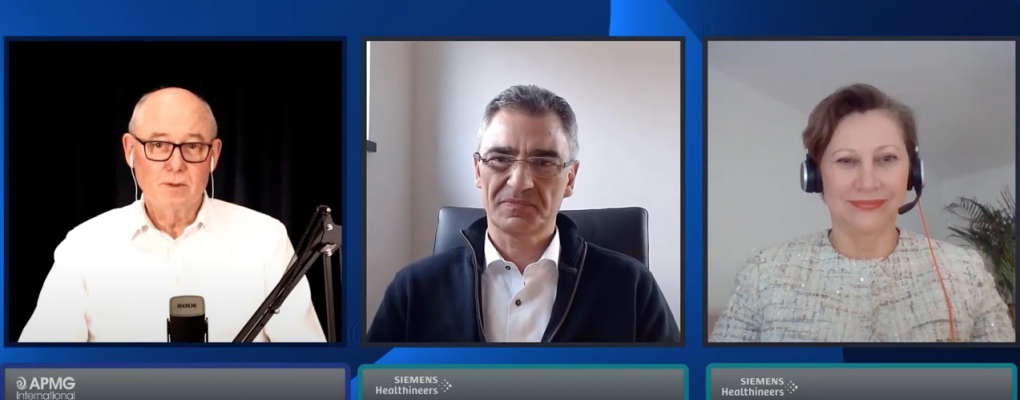
Richard Pharro, CEO of APMG International is joined by two guests - Natalia Korchakova-Heeb, Global Lead for PPPs and Greenfield Hospitals and Renas Rechid Global Head of Sales Enterprise Services at Siemens Healthineers. They discuss sustainable healthcare and highlight the key ingredients that need to be considered to make projects successful; Value for Money, Value for People and Value for Innovations.

Congratulations to all the CP3P professionals who have worked hard to achieve their certification.
The CP3P Scheme is an innovation of the World Bank and has grown from strength to strength over the past five years. The PPP Guide has become the go-to body of knowledge for thousands of PPP professionals across the globe. Now available in nine languages, the PPP Guide has been accessed over a million times. We believe that the program has changed the way PPPs are executed. Find out more about the program highlights by watching the video.

Alicia Holbrook
As Head of Marketing for APMG International I work closely with the World Bank Group, the MDB's and the PPIAF to help PPP professionals access best practice information.
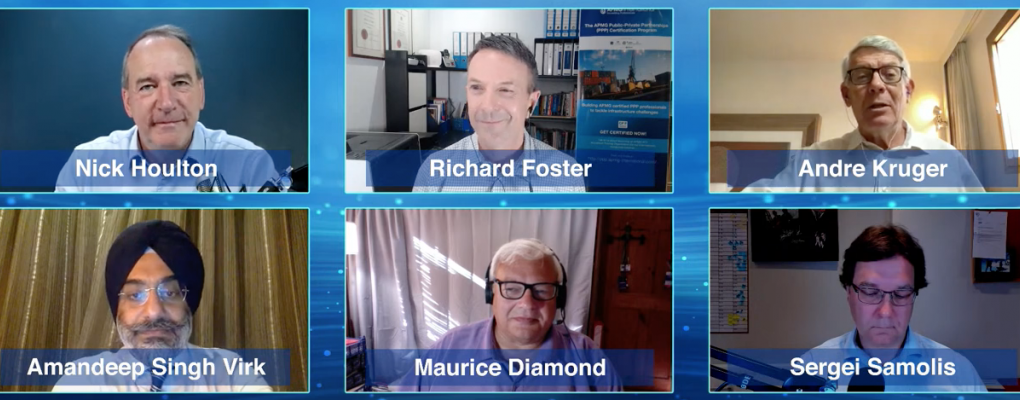
Each week APMG International runs a live show called 'Level up your Career' which is streamed on LinkedIn and Youtube. It's free to join and is a great opportunity to present your questions directly to thought leaders and seasoned industry professionals, all of whom have been selected to provide help and guidance to the community.
Our latest Level up your Career episode explores 'The winning formula for PPPs.' A huge thanks to our pannelists for their thoughts and expertise.
Panelists
Amandeep Singh Virk, Leading International PPP Transaction Advisor, The World Bank
Andre Kruger, Chief Operating Officer, PPP Training Online
Richard Foster, Director, Foster Infrastructure
Sergei Samolis, CEO, PPP Expertise Eurasia
Maurice Diamond, CP3P Tutor and Coach, IPATS Ltd
Your Hosts
Host: Nick Houlton, APMG-International
Question Master Suchitra Jacobs, APMG International
Click on the links below to access the question on YouTube
0:00:00 Introduction
0:01:51 Meet the Panelists
0:06:44 Should governments develop a long-term plan (+/-10 years) that includes a project list of projects to be procured on a traditional or PPP basis?
0:15:26 With expanding public debt in many countries PPPs seem like the answer, but when is a PPP structure not advisable?
0:25:03 Should a government have a PPP law in place to ensure the project's attraction to bidders and is PPPs law similar to governance or part of it?
0:32:48 Some developing countries are embracing visions for 2030, what is the key role of PPPs for such visions?
0:40:47 Do you have any guidance for how to mitigate the risk of corruption?
0:49:52 What is your key piece of advice for ensuring the success of a PPP?
0:56:58 Closing thoughts
1:03:22 The Next APMG Level Up Show
If you would like to be a pannelist on a future show, or have a have a question please contact us - we would love to hear from you!

Alicia Holbrook
As Head of Marketing for APMG International I work closely with the World Bank Group, the MDB's and the PPIAF to help PPP professionals access best practice information.

Ukraine has been working since 2017 to build its capacity to implement public-private partnerships (PPPs). The PPP Guide and APMG PPP Certification Program (CP3P) has been integral to help PPP professionals develop best practice skills and knowledge to deliver a pipeline of quality and sustainable projects in social and economic infrastructure.
To strengthen Ukraine’s capacity to structure and implement sustainable PPPs, Chapter 1 of the APMG PPP Certification Program Guide and Foundation level exam has been translated into Ukrainian.
The impact of the war in Ukraine has triggered a massive humanitarian crisis that has devastated lives and destroyed vital infrastructure. Reconstruction and recovery efforts will require billions of dollars, and PPPs will play a significant role in bringing together resources and expertise from the public and private sectors.
The APMG PPP Certification Program is an innovation of the Asian Development Bank (ADB), the European Bank for Reconstruction and Development (EBRD), the Inter-American Development Bank (IDB), the Islamic Development Bank (IsDB), and the World Bank Group and part-funded by the Public-Private Infrastructure Advisory Facility (PPIAF). This new translation, facilitated by the International Finance Corporation (IFC), part of the World Bank Group, will further support PPP practitioners in Ukraine by equipping them with knowledge and resources in their native language.
“This in-depth certification program builds on a vast pool of international experience in PPPs,” said Mehita Fanny, Regional Manager for IFC’s PPP Transaction Advisory Services in Europe. “Adopting internationally recognized good practices will help national and municipal governments in Ukraine effectively deliver projects that will attract qualified investors and support both long-term development priorities as well as national recovery efforts.”
"Being able to study in one’s native language is critical for capacity building. The team we worked with to bring the translation to market were enthusiastic and dedicated and I very much hope the Ukranian translation will provide help and support to local PPP professionals seeking best practice guidance,” said Richard Pharo, CEO of APMG International.
The Ukrainian PPP Guide Chapter 1 is a free downloadable body of knowledge to help candidates prepare for the APMG PPP Foundation level exam and represents a good knowledge resource for all elements of the PPP cycle, including financial models and best contracting practices. Over 1.25 million visitors have accessed the guide across all its language versions.
The APMG PPP Certification Program is an international success, with CP3P certified professionals in over 112 countries.

Alicia Holbrook
As Head of Marketing for APMG International I work closely with the World Bank Group, the MDB's and the PPIAF to help PPP professionals access best practice information.

Since 2004, Brazil have steadily introduced an impressive number of Public-Private Partnership (PPP) projects to combat the effect of the financial crisis in the early 2000s. This progression has enabled Brazil to better manage public interests and services by private investors. The steady incline of PPP initiatives from the early to mid-2000s is reflected in the World Bank’s report, listing Brazil as not only being in the top five EDME countries during the mid-2000s, but taking the number one spot. The World Bank also stated that the socioeconomic progress of Brazil between 2003 and 2014 lifted 29 million people out of poverty.
However, according to the latest 2017-2020 Global Competitiveness Report by the World Economic Forum, Brazil is ranked 80th out of 137 countries, which arguably does not reflect the potential of a country of this scale. As such, there exists scope for PPP professionals to help Brazil return to growth and reach its full socioeconomic potential.
Angola is a fast-growing and resource rich region that has developed dramatically since the civil war. Angola have experienced a strong growth in the Public Private Partnership sector. Aptly, their transport sector is undergoing nothing short of a revolution—since 2002, road, rail, sea, and air links have been upgraded and rebuilt across the country. There is, however, a need to connect the provinces on a logistical level to allow commerce and growth to thrive—and diminish the inequality currently prevalent in the more rural areas of the country. Thus, there is an increasing demand for PPP professionals to help implement the projects required to help achieve equality.
The PPP Guide and APMG PPP Certification Program (CP3P) has been integral to help PPP professionals develop best practice skills and knowledge to deliver a pipeline of quality and sustainable projects in social and economic infrastructure. To strengthen Angola and Brazil’s capacity to structure and implement sustainable PPPs, Chapters 2 to 5 of the APMG PPP Guide and the Preparation exam has been jointly translated into Portuguese by the IDB and the World Bank.
The APMG PPP Certification Program is an innovation of the Asian Development Bank (ADB), the European Bank for Reconstruction and Development (EBRD), the Inter-American Development Bank (IDB), the Islamic Development Bank (IsDB), and the World Bank Group and part-funded by the Public-Private Infrastructure Advisory Facility (PPIAF). This new translation, facilitated by the InterAmerican Development Bank (IDB), will further support practitioners by equipping them with knowledge and resources in their native language.
Richard Pharro, CEO, APMG International quote:
The World Bank Group and IDB’s leadership in translating the CP3P guide into Portuguese will be of great benefit to the large number of project professionals who will be required for the wide range of infrastructure projects in the Portuguese speaking world. Project success depends on qualified and committed teams so this initiative will accelerate capacity building especially in Brazil and Angola. We are delighted to be able to support them in their ambitions.
Gaston Astesiano, PPP Single Window Heat IDB quote:
“For the IDB, the CP3P guide in Portuguese is a tool of great importance; it not only allows us to standardize the knowledge on PPP in the region, but also to ensure the preparation of teams with the necessary knowledge for the adequate implementation of these projects. The Portuguese translation of this guide in its Preparation level, will allow CP3P reach the largest PPP market of the developing world, Brazil, and the rest of the Portuguese speaking nations. This is just another example of the IDB Group PPP Single Window commitment to continue providing to the LAC region the most updated knowledge and best practices for the successful implementation of PPP Programs and Projects.”
The Portuguese PPP Guide is a free downloadable body of knowledge to help candidates prepare for the APMG PPP Foundation and Preparation level exams and represents a good knowledge resource for all elements of the PPP cycle, including financial models and best contracting practices. Over 1.25 million visitors have accessed the guide across all its language versions.
The APMG PPP Certification Program is an international success, with CP3P certified professionals in over 112 countries.

Alicia Holbrook
As Head of Marketing for APMG International I work closely with the World Bank Group, the MDB's and the PPIAF to help PPP professionals access best practice information.

Navigating the landscape of public-private partnerships (PPP) can be a challenging endeavour, particularly when assessing project viability. PPP projects, particularly those situated in emerging economies, are often marred by various financial and structural hurdles. This is where Viability Gap Funding (VGF) steps in, serving as a vital mechanism that buttresses these projects.
VGF - The Lighthouse in the Storm
VGF functions as the linchpin in PPP projects, propelling these initiatives towards successful completion. These projects, though indispensable for societal and economic progression, may fail to achieve financial viability in the absence of VGF.
While it's commonly acknowledged that VGF mitigates risks in large-scale infrastructure projects, the multifaceted roles of this financial tool extend well beyond risk alleviation. VGF is a powerful force in spurring growth, instigating innovation, and endorsing equity within the framework of PPPs.
The Power of the VGF Grant
In essence, VGF is a grant earmarked to underpin infrastructure projects that are economically sound but financially lacking. This lifeline plays a pivotal role in bridging the financial chasm and makes these projects appealing prospects for private investments.
A major boon of VGF lies in its ability to pare down user charges. This is especially crucial for developing countries where cost recovery pricing could render services unaffordable for citizens. With VGF serving as the financial fulcrum, tariffs can be maintained at palatable levels without sacrificing service quality or jeopardizing the financial allure for private investors.
VGF in Action: Khyber Pakhtunkhwa, Pakistan
The government of Khyber Pakhtunkhwa (KP), Pakistan, provides an inspiring testament to the transformative power of VGF. Through the strategic application of VGF, the KP government successfully closed the financial loop for a major infrastructure project, the "Swat Motorway Phase 2," during the fiscal year 2022-23. This project, organized under a Special Purpose Vehicle (SPV), was implemented through a PPP model.
The KP government's endorsement of the Swat Motorway Phase-II project illuminates the dynamic capabilities of VGF in reinforcing PPPs. The government harnessed the power of VGF, employing it as a robust tool to address the financial viability dilemma inherent in sizable infrastructure projects. By subsidizing a portion of the project costs, the government effectively enhanced the project's attractiveness to private investors and diminished the financial risks that could deter them.
The deployment of VGF yielded significant benefits, most notably, facilitating a reduction in user charges such as tolls. By alleviating the financial pressure on users, the project could cater to a broader demographic, making its services more accessible. The drive towards inclusivity is particularly important in developing nations like Pakistan, where services priced solely on a cost-recovery basis may be out of reach for a sizable chunk of the population.
Moreover, VGF served as a beacon, guiding the private sector towards innovation. With the backing of VGF, private companies were incentivized to incorporate advanced technologies and proficient managerial practices into their operations, highlighting how VGF can spark innovation and amplify service quality, thereby delivering added value to end-users.
The Challenges of VGF and Potential Solutions
However, VGF is not without its challenges. A delicate equilibrium between public support and private sector efficiency is essential in its implementation to avoid complacency among private entities and maintain a healthy competitive environment. VGF's success hinges on striking a balance where public support is available but not overly relied upon, promoting a drive for efficiency and market-based solutions.
Further, implementing VGF requires diligent oversight and thorough project appraisals to prevent the risk of backing poorly conceived or financially unsound projects. Hence, governments must instate stringent appraisal processes to ensure funding is directed towards worthy projects. Misapplication of VGF can result in the squandering of limited public resources on projects devoid of social and economic merit, thus emphasizing the need for rigorous assessment, transparency, and accountability.
Conclusion: The Transformative Power of VGF
In summary, VGF in PPPs contributes far more than simply mitigating risk. It serves as a financial safety net, an impetus for technological innovation, an advocate for affordable service delivery, and a champion for balanced development. However, to unlock the full potential of VGF, careful implementation, consistent monitoring, and rigorous project assessments are key to successfully actualizing PPPs.
The case of the Khyber Pakhtunkhwa province in Pakistan clearly demonstrates the transformative power of strategic VGF application. This approach not only rendered major infrastructure projects feasible but also sparked a rising trend in infrastructure development. Through VGF, even capital-intensive projects that might have been dismissed as financially prohibitive have been realized, underscoring the true potential of this financial mechanism in the realm of PPPs.

Mr Khan
Mr. Khan, with a career spanning over 17 years, has expertise and knowledge in the financial services sector. He holds an array of internationally recognized qualifications in investment, finance, and economics. His foundation includes an MBA in Finance and an MS in Banking and Finance from Queen Mary University of London, alongside an MSc in Economics from the University of Peshawar. His proficiency is further augmented by professional certifications from globally reputed institutes such as the CFA Institute in the USA and ACI-France.
Currently, Mr. Khan holds a senior management position in the Finance Department of the Government of Khyber-Pakhtunkhwa (KP). He serving as the Team Lead of the Debt Management Unit and Risk Management Unit (DMU/RMU). As the team lead, he is managing the province's debt initiatives and risk mitigation for all Public-Private Partnership projects. His role also extends to managing the Viability Gap Funds, where he oversees concessional loans, grants, and financial guarantees related to all PPP Projects.

Since 2002, Romania has initiated a number of PPP projects that have supported economic growth and strengthened tourism, travel opportunities, healthcare, and infrastructural investments. Furthermore, new regulations introduced in May 2018 are helping to attract more interest from private partners, particularly for the development of large-scale projects. This in turn is creating a growing need for qualified PPP professionals who can design and manage such initiatives.
To strengthen Romania’s capacity to structure and implement sustainable PPPs, Chapter 1 of the PPP Certification Program Guide and Foundation level exam has been translated into Romanian.
The PPP Guide and APMG PPP Certification Program (CP3P) has been key to helping PPP professionals learn from best practices and develop the skills and expertise needed to deliver a pipeline of impactful and sustainable projects in social and economic infrastructure.
The APMG PPP Certification Program is an innovation of the Asian Development Bank (ADB), the European Bank for Reconstruction and Development (EBRD), the Inter-American Development Bank (IDB), the Islamic Development Bank (IsDB), and the World Bank Group and part-funded by the Public-Private Infrastructure Advisory Facility (PPIAF). This new translation, supported by the International Finance Corporation (IFC), part of the World Bank Group, will further support PPP practitioners in Romania by equipping them with knowledge and resources in their native language.
“Public sector alone cannot fulfil the ambitious development objectives of Romania and Moldova, while the resources of the private sector remain highly untapped, especially in the area of public infrastructure,” said Mehita Fanny, IFC Regional Manager for Public-Private Partnership (PPP) in Europe. “IFC is committed to advancing public-private partnerships (PPPs) in Romania and Moldova by strengthening public sector institutional capacity through initiatives like the APMG PPP training and certification, designed to empower government officials with the skills needed to develop, implement, and manage well-structured PPP projects across all sectors.”
"When we started this project with the World Bank, we could not have predicted the global interest it has received" said Richard Pharro, CEO of APMG International. "I am delighted that, with the support of IFC, core parts of the PPP Guide have been translated into Romanian so practitioners in Romania and Moldova can develop their PPP knowledge and understanding in their native language. They have joined an ever-growing community of professionals using PPPs to make a difference in their country."
The Romanian edition of PPP Guide Chapter 1 is a free downloadable publication to help candidates prepare for the APMG PPP Foundation level exam and represents a good knowledge resource for all elements of the PPP cycle, including financial models and best contracting practices. Over 1.25 million visitors have accessed the Guide across all its language versions.
The APMG PPP Certification Program is an international success, with CP3P certified professionals in over 112 countries and the Foundation Certification now available in 11 languages.

Helen Platt
Project Manager at APMG.

Over the past few decades, investment in public infrastructure has played a pivotal role in propelling Vietnam's economic development. Recently, the Vietnamese government greenlit a plan to allocate between US$43-65 billion for the construction and enhancement of roadways, railways, inland waterways, seaports, and air transport infrastructure from 2021 to 2030[1]. With a steadfast commitment to enticing more private sector investments and alleviating the strain on national debt and fiscal policies, Vietnam enacted a new Public-Private Partnership (PPP) Law, effective from January 1, 2021. Complementing this legislation, the Government issued Decree No. 35/2021/ND-CP and Decree No. 28/2021/ND-CP to provide comprehensive guidance on its implementation. These documents, alongside others, establish a legal framework to encourage private sector investment in socio-economic infrastructure projects, particularly in transport, energy, urban infrastructure, wastewater, and solid waste treatment.
Despite notable progress, the practical implementation of PPPs faces challenges, including the limited capacity of state agency officials involved in PPP projects. To address this, the PPP Guide and the APMG PPP Certification Program (CP3P) have been instrumental in assisting PPP professionals in developing best practice skills and knowledge. This is crucial for delivering a pipeline of quality and sustainable projects in social and economic infrastructure. In an effort to fortify the capabilities of Vietnamese state agencies in structuring and implementing sustainable PPPs, the Asian Development Bank has facilitated the translation of APMG PPP Guide Chapter 1 and the Foundation exam into Vietnamese.
Maria Joao M. Pateguana, Head of the Private Sector Development Unit at Viet Nam Resident Mission, Asian Development Bank, emphasizes, “We are confident that the translation of the APMG program into Vietnamese and providing training to PPP practitioners will significantly contribute to capacity building, fostering successful preparation, and facilitating the effective management of PPP projects in Vietnam. This initiative aligns with ADB's commitment to supporting the development of PPPs in the country”.
[1] Vietnamnet. 2021. “Prime Minister approves VN road transport development plan to 2030.” Accessed in September, 2022.

Helen Platt
Project Manager at APMG.

Public-Private Partnerships (PPPs) in Latin America offer numerous advantages, addressing infrastructure deficiencies and promoting economic development. By leveraging private sector capital and expertise, PPPs facilitate the efficient development of transportation, energy, and water projects. Financially, they share the burden with private partners, fostering innovation and technology transfer, thereby enhancing service quality and efficiency. Job creation and economic growth are stimulated, and the risk transfer mechanism mitigates potential overruns and delays. PPPs often ensure long-term maintenance and operation by the private sector, guaranteeing sustained infrastructure functionality. Despite these benefits, successful implementation requires a robust regulatory framework, transparent processes, and effective oversight to manage potential challenges and ensure optimal outcomes tailored to each country's specific needs. The APMG PPP Certification Program acts as a resource on all stages of successfully delivering PPPs, including PPP models, PPP and Government and PPP value for money.
The APMG PPP Certification Program is an innovation of the Asian Development Bank (ADB), the European Bank for Reconstruction and Development (EBRD), the Inter-American Development Bank (IDB), the Islamic Development Bank (IsDB), and the World Bank Group and part-funded by the Public-Private Infrastructure Advisory Facility (PPIAF). This new translation, supported by the InterAmerican Development Bank and will further support PPP practitioners in Latin America by equipping them with knowledge and resources in their native language.

Helen Platt
Project Manager at APMG.

Here's why everyone is taking the APMG CP³P training and certification
Our CP³P certification scheme, developed in partnership with the world bank, has been growing from strength to strength over the last decade, recently cascading into a certification and exam taken by over 12,000 individuals.
After hitting the 10,000 exams mark last year, we decided to create a campaign to celebrate. This campaign showcased testimonials from our CP³P Foundation candidates, as well as testimonials from trainers and accredited training organizations that facilitate the teaching of the CP³P scheme, detailing the benefits it has had on both them and their students.
CP³P testimonials from candidates
In a survey conducted between 2022 - 2023, we asked CP³P Foundation candidates to tell us about their experience with our CP³P certification scheme.
Here are examples of just some of the feedback:
"Career boosting." - Diana, Business Strategist
“Amazing. It was an entirely new sphere of knowledge which I believe is required for all prospective public officers to understand the role of incentives in getting excellent project delivery and sustainability.” - Abubakar, Manager, Strategy and Coordination
“Enhanced my confidence and skill in practicing PPP projects." - Hajayand, Municipal Economist
“Every PPP practitioner should take the CP ³P certification program at the initial stage of their career as it helps to clarify the concepts and PPP life cycle thoroughly." - Maryam, Deputy Director Projects
It was a great thought-provoking journey around the PPP world that enabled me to become part of international network of PPP professionals.” - Yevhen, Head of PPP Division at the Ukrainian Sea Ports Authority
"Excellent, has strengthened my capacity to manage projects.” - Martin, Deputy Technical Manager
"Helpful in securing jobs in a very competitive industry." - Teodoro, Freelance Transport Planning & PPP Specialist
"It’s a great experience and its played an important role in developing my skills, and put me on the right career path." - Eiad, Financial Analyst
Testimonials from trainers & ATOs (Accredited Training Organizations)
" When you are delivering CP ³P training you can see the light bulb moments when participants realise what PPP really is and how it differs from more traditional forms of public sector procurement. It enables participants to understand not only the benefits but also the difficulties associated with PPP procurements, and as a trainer it is one of those courses where you feel you are making a real difference, enabling people across continents to work together using a common approach thereby facilitating the success of PPP projects in the future. This is a course that everybody involved in complex procurements should undertake, from politicians to procurement experts, funders and financiers. It would also be of benefit to those involved in education and health based CSOs as well as others. I hope that in years to come participants will remember the usefulness of this training and recommend it to others." - Maurice, Trainer, Training ByteSize
"I have had the opportunity to deliver multiple CP ³P course at all its three levels for public and private sectors in several countries all around the world. The benefit of these courses were not only the many friends that I found throughout the world and many lessons that I learned, but also the firm belief that having a “common language” built by the CP ³P program is very crucial for PPP projects with many stakeholders involved globally." - Hossein Nourzad, PhD, CP³P Accredited Trainer, Training ByteSize
"The CP ³P Program became, more quickly than I expected, a “must have” in the professional route of those working with infrastructure projects in Brazil. Even in relation to topics where our specific national rules distance us from the lessons provided by the PPP Guide, the value that can be captured by increasing one’s field of view and enabling reflection is very clear. There were many Brazilians who decided to familiarise themselves with the CP³P program, and we have an important influence in relation to this milestone that the international CP ³P community is now celebrating. And, certainly, our national infrastructure market benefited greatly from this. It is diffi cult to find any PPP unit in the country, of any minimally structured subnational government, that does not have at least one certified professional. PPPs are increasingly part of the reality of governments in Brazil and the CP ³P program, to the same extent, is increasingly an obvious choice for capacity building for those who deal (or want to) with private investment in public infrastructure and services." - Radar PPP
"The CP³P Foundation Course was overwhelmingly received and perceived by candidates as extremely valuable, practical and providing the basis for future practitioners to start their journey as PPP specialists. The course outline and structure provides a comprehensive overview and prepares candidates for the more detailed course material. The extent to which successful candidates express their desire to continue to pursue the next CP³P courses underlines this view. As a trainer, it is of great value to share concepts, terminology, theory and practical examples that are regarded to be of an international standard and internationally understood and practiced. The material also allows trainers to concretize theoretical concepts to become “real” through the use of relevant examples and lessons learnt." - Kevin Abrahams, PPP Training Online
"Throughout the delivery of numerous exams, we have witnessed novice professionals embark on their careers, and seasoned professionals have sought to formalize their knowledge through this program. Throughout the years, the Foundation program has become a cornerstone of our training services, consistently ranking as one of the most requested programs. It has proven to be an invaluable starting point in the development of our comprehensive capacity development framework." - Toraza Zenith, CP ³P Accredited Training Organization
"As a recent certified trainer on the APMG PPP Foundation, I was privileged to offer the course to a group of public sector officials in Cameroon. The breadth and depth of the Foundation course was a catalyst to fruitful debates among the participants in relation to the practical application of PPP in the local context. The Foundation course provided the participants the rigor and analytical tools to not only establish a robust PPP framework as well as assess and evaluate a PPP transaction." - Aristide Tekeu, Trainer, PPP Training Online
"The collaborative and insightful training approach, combined with real-world case studies and Indonesian context, ensures that participants not only grasp theoretical concepts but also gain practical insights. As a training organization, it is with immense pride that we continue to offer this program, knowing that it contributes significantly to the professional development of individuals involved in PPP projects." - Andre Permana, Accredited Trainer - Business Director, PT Penjaminan Infrastruktur Indonesia
"As an APMG accredited CP3 P trainer, the APMG CP3P training materials and QMS are very helpful and facilitate me in delivering the material in a structured manner so that the trainees can absorb information optimally, discussions run smoothly, and experience sharing can enrich the insights of both participants and trainers on PPP implementation in the context of Indonesia and best practices in the world." - Shiddarta, Lead Trainer ATO, PT Penjaminan Infrastruktur Indonesia
"In my opinion, to reap the benefits of PPPs, it is the finest tool to create awareness regarding best practices amongst professionals in government....” ... “I have witnessed a positive shift in attitude towards PPPs in professionals having undergone the CP³P course." - Amandeep Singh Virk, PPP Specialist (ST Consultant) at The World Bank
"Overall, I truly think that the CP3P certification program, and this 10,000 threshold demonstrates it has made and will continue to make a real contribution to the development of the PPP markets around the word." - Jean Alexandre Blanchard, Director – Opening to Competition of the Regional and Urban Railway Sector at Île-de-France Mobilités
"Training Bytesize’s APMG CP3P accreditation program has consistently delivered exceptional results globally, our courses running last year across Europe, India, Bangladesh, UAE, Indonesia and Saudi Arabia. Our program not only boasts high pass rates but also stands out for its profound impact on participants’ understanding of PPPs. This accreditation equips professionals to make substantial contributions to PPP projects. The positive feedback received underscores the program’s effectiveness, showcasing how it not only imparts crucial skills but also fosters a deeper appreciation for PPP initiatives. We have found that APMG CP3 P training is an invaluable investment for our clients old and new, and we continue to see the accreditation grow as more companies continue to adopt it worldwide." - James Kinch, Country Manager, Training ByteSize
"We’re privileged to be involved in the program’s delivery to Indonesian participants, imparting knowledge and fostering a deep understanding of PPP principles in an international context. This program allows me, as a trainer, to have a deeper understanding of PPP international best practice, integrating that with Indonesian local context to ensure the positive infl uence and impact to our participants and their roles in the PPP ecosystem." - Pratomo Ismujatmika, Accredited Trainer – Deputy Director of Business, PT Penjaminan Infrastruktur Indonesia
"Knowing that the participant was eager to know about the international best practice while sharing their real experience is exciting for me. Thus, on every APMG training session that I had, I always gained new insights on PPP implementation in Indonesia." - Novie Andriani, Accredited Trainer – Policy Planner, Ministry of National Development Planning, PT Penjaminan Infrastruktur Indonesia
"The CP3P Foundation Course was overwhelmingly received and perceived by candidates as extremely valuable, practical and providing the basis for future practitioners to start their journey as PPP specialists. The course outline and structure provides a comprehensive overview and prepares candidates for the more detailed course material. The extent to which successful candidates express their desire to continue to pursue the next CP3 P courses underlines this view. As a trainer, it is of great value to share concepts, terminology, theory and practical examples that are regarded to be of an international standard and internationally understood and practiced. The material also allows trainers to concretize theoretical concepts to become “real” through the use of relevant examples and lessons learnt." - Kevin Abrahams, PPP Training Online
"As a PPP professional, practicing Public Private Partnerships for nearly 25 years, I am extremely passionate about this subject as I believe, when PPPs are properly executed they are extremely benefi cial to governments and societies. Being one of the authors, chief examiner and a trainer for the CP3 P course, I am extremely excited to share my knowledge and experience with fellow colleagues that are equally passionate. However, training is not just about imparting knowledge; it’s about igniting a spark of innovation, fostering collaboration, and propelling everyone towards collective success. With each session, it’s not just shaping minds; it’s about sculpting a dynamic team capable of conquering challenges with unwavering determination. With every lesson learned, every skill honed, and every barrier overcome, we are crafting a legacy of empowerment, where each individual shines brighter, fuelled by the collective brilliance of the team." - Irina Unkovski, PPP Training Online
"The Secretary of Public-Private Investments, Pablo Cevallos, highlighted the significant progress made by the Government of Ecuador in the economic and employment generation areas. Cevallos emphasized the approval of the Economic Efficiency and Employment Generation Law by the National Assembly on December 19, 2023 as a transcendental milestone for the country. The law, among other measures, strengthens the mechanism for improving infrastructure through public-private partnerships (PPPs), considered as the ideal modality to close the gaps necessary for development. In the second half of 2023, Ecuador, through the Public-Private Investment Secretariat, began the challenge of training a fi rst group of public servants in the management of PPP projects through the APMG Public-Private Partnerships (PPP) Certification Program (CP3P)®. Specifically, 90 public servants were trained at the “Foundation” level, which represents a significant advance in professional development and in the possibility of successfully completing projects. In this regard, Secretary Cevallos emphasized that the initiative highlights Ecuador’s commitment to following international best practices and ensuring the success and continuity of the public-private partnership mechanism for the country’s sustainable development." - Pablo Cevallos, Secretary (Head) of the Public-Private Investment Secretariat of Ecuador
Discover APMG's CP³P Certification
If you think you could benefit from taking our CP³P training and certification, find out more on our CP³P product page.
Additionally, you can find a training provider on our website.



